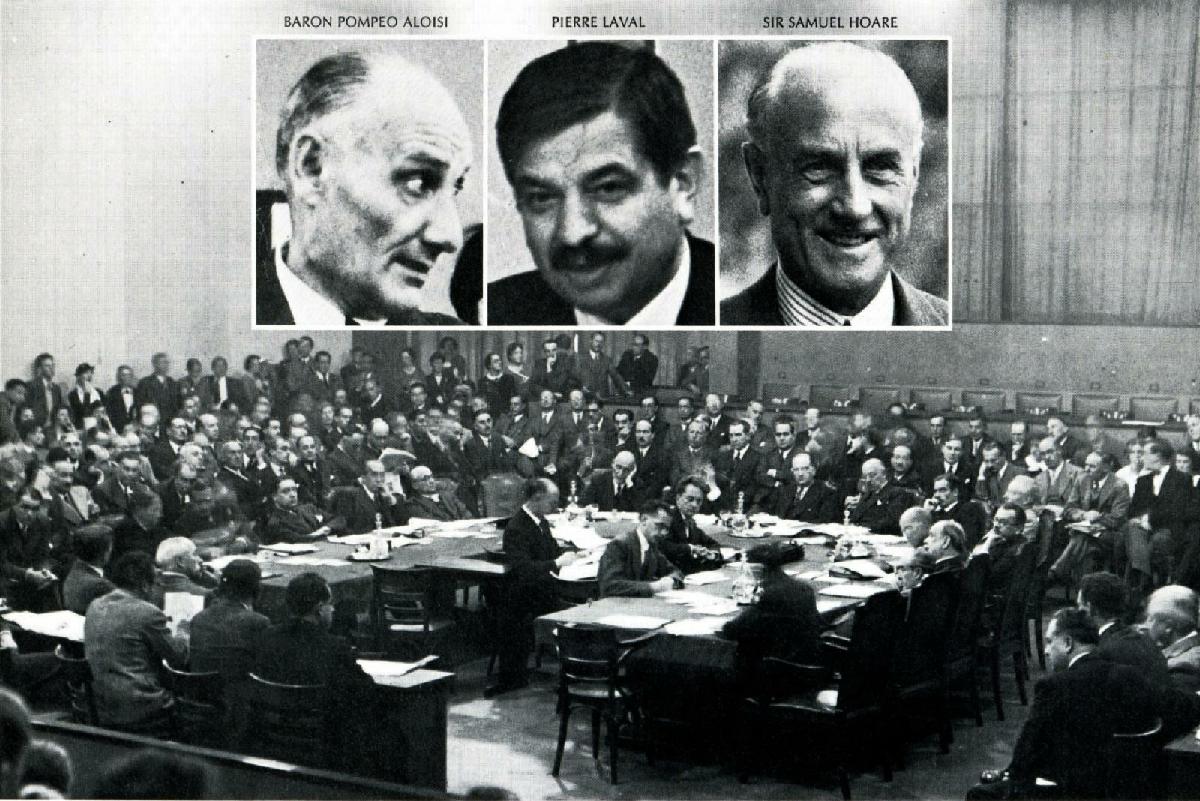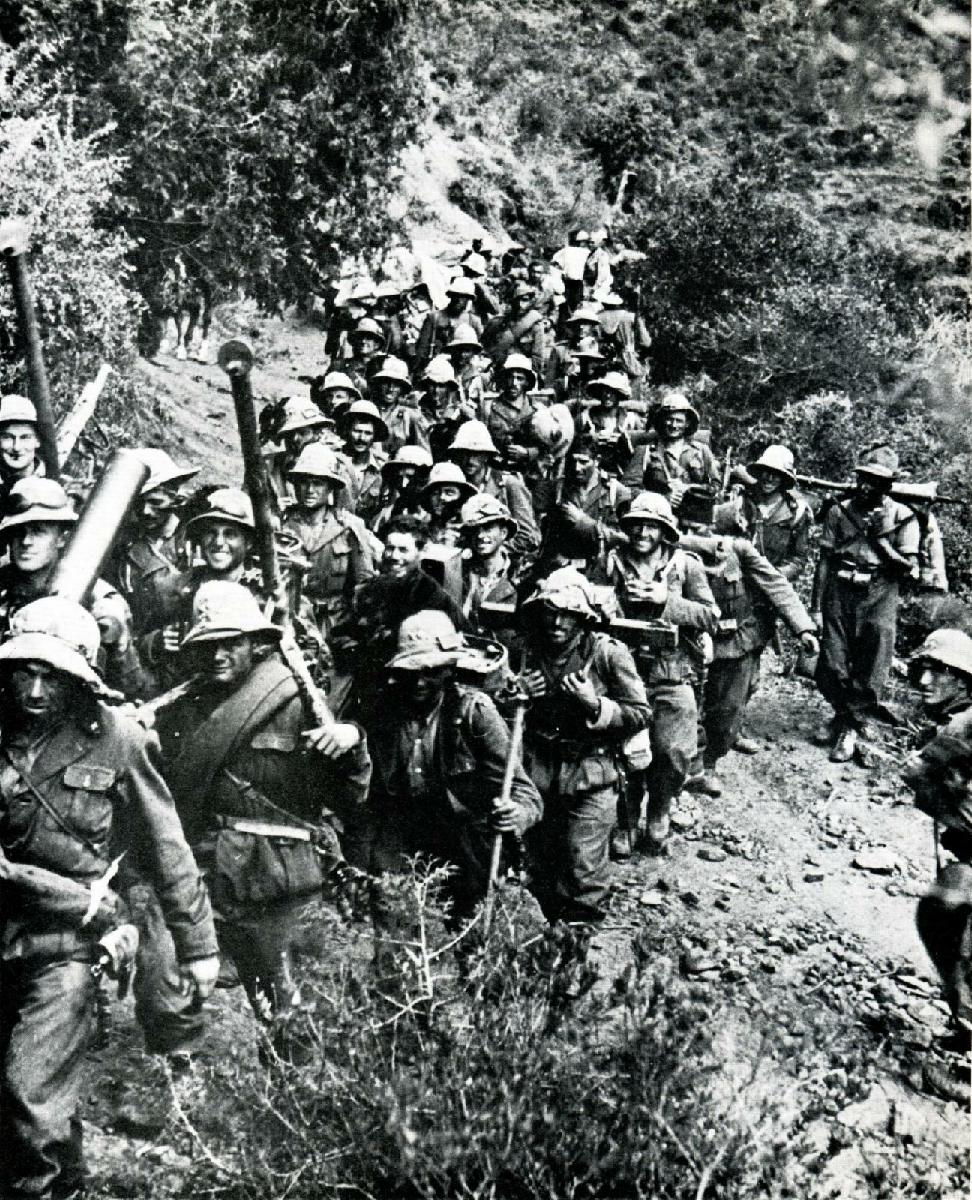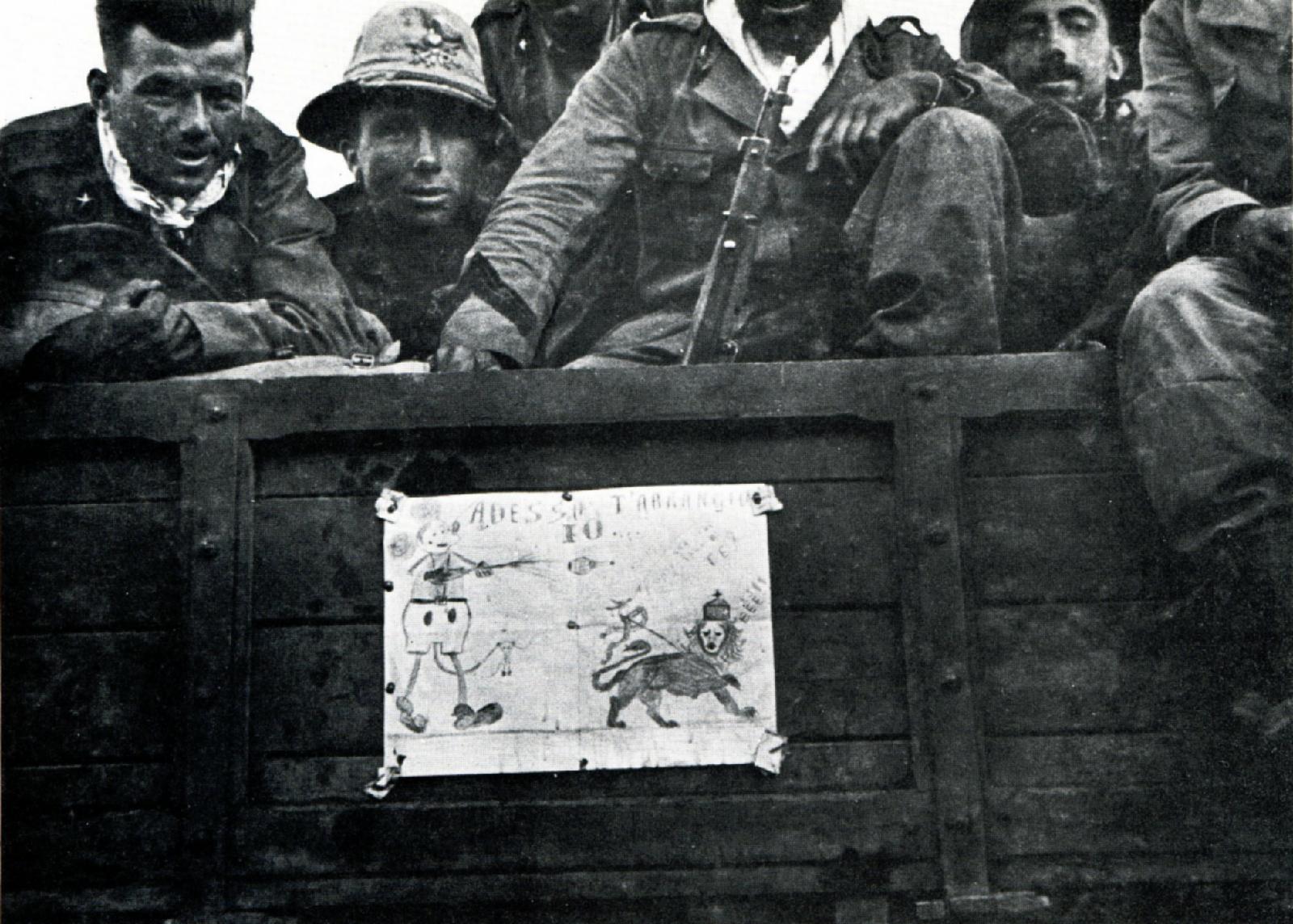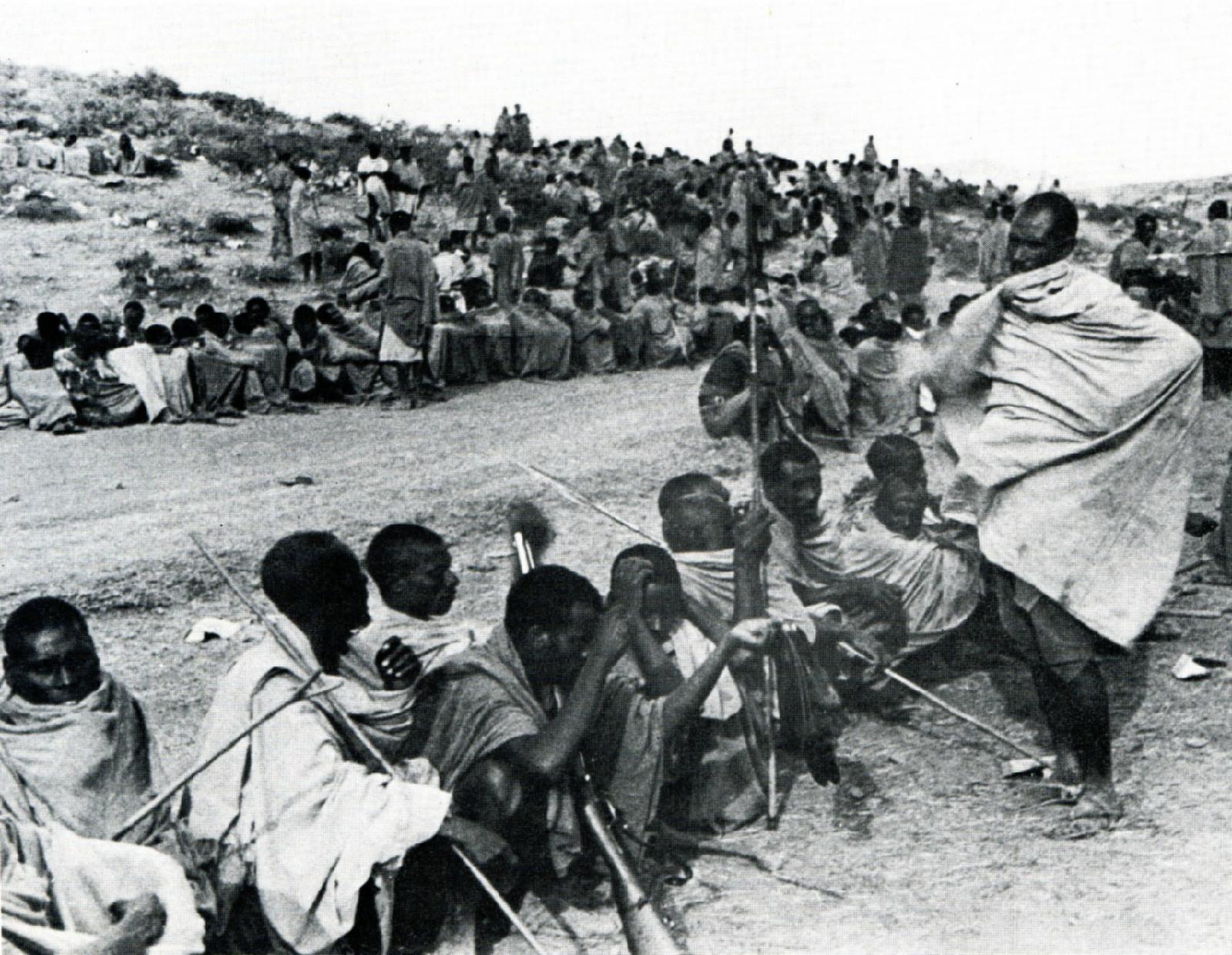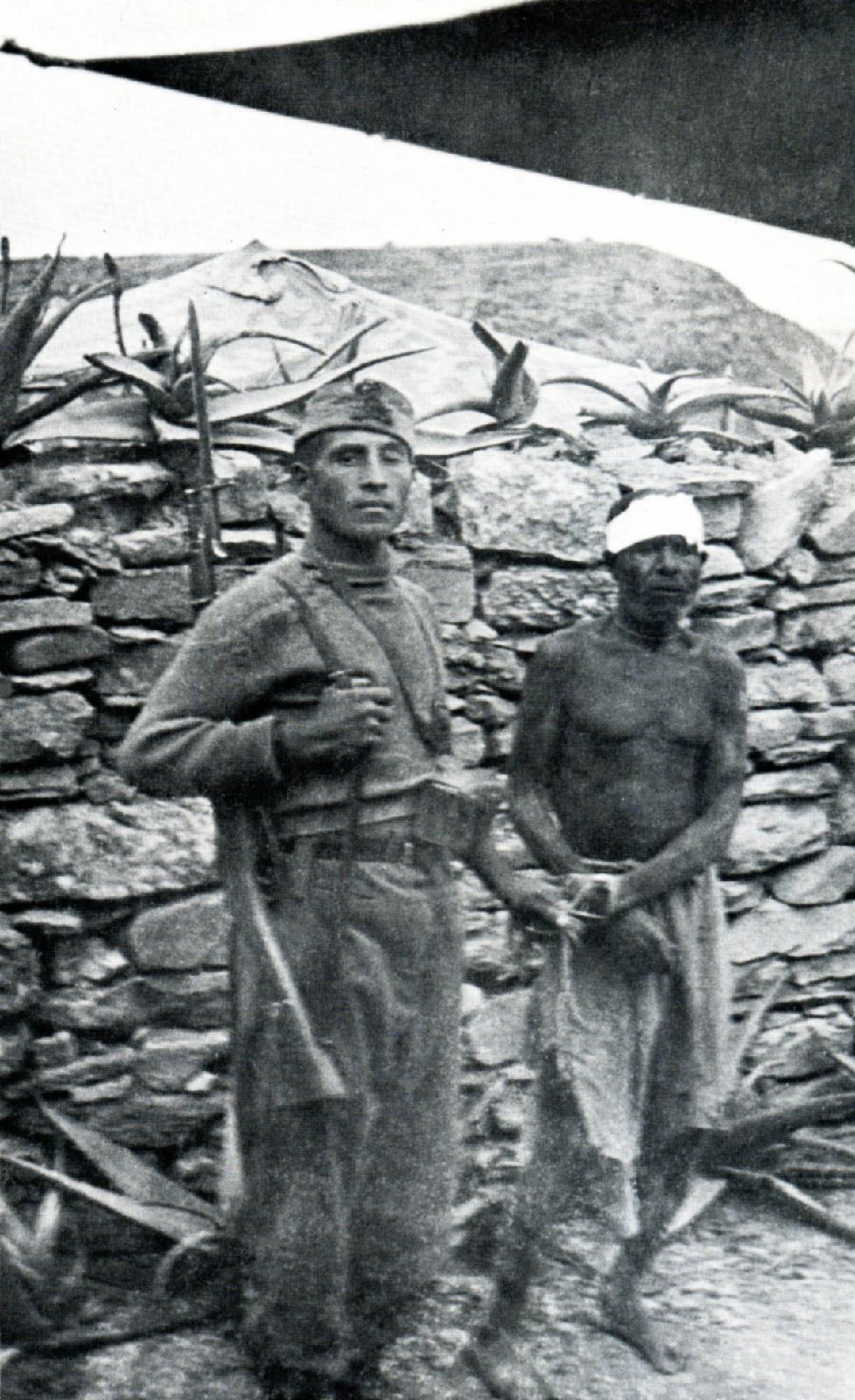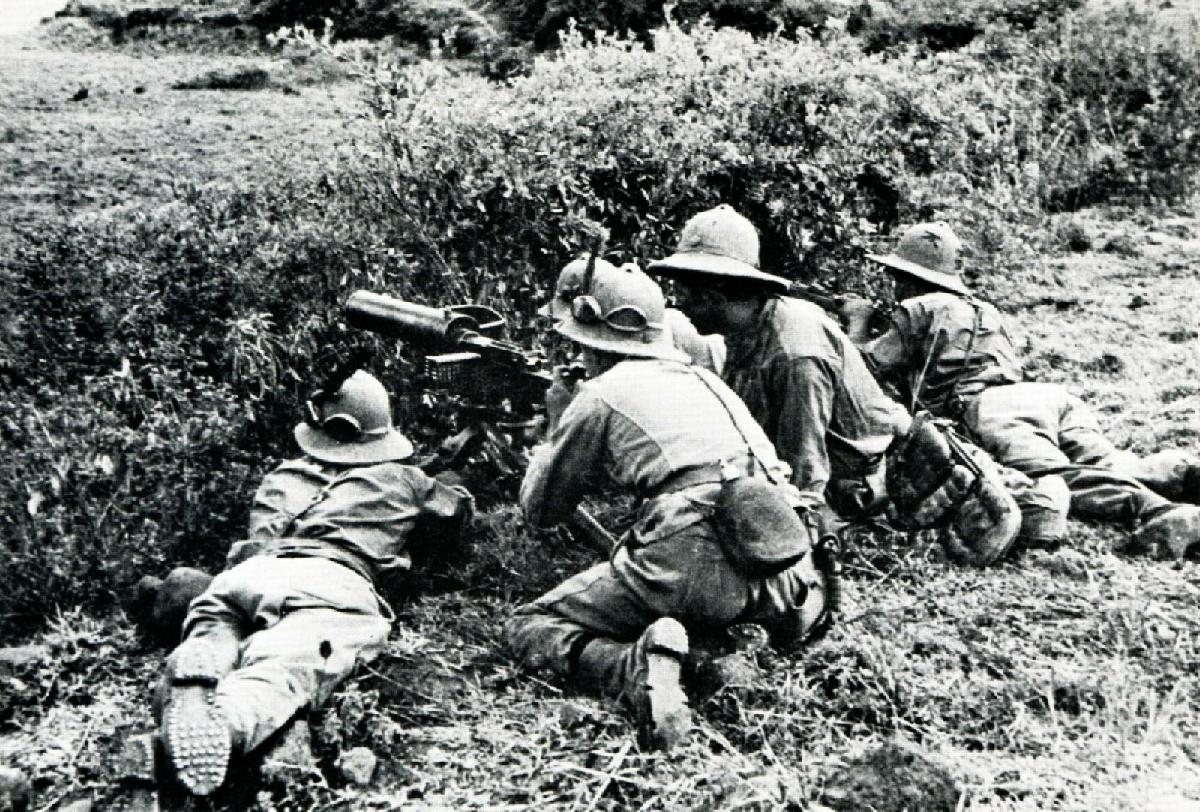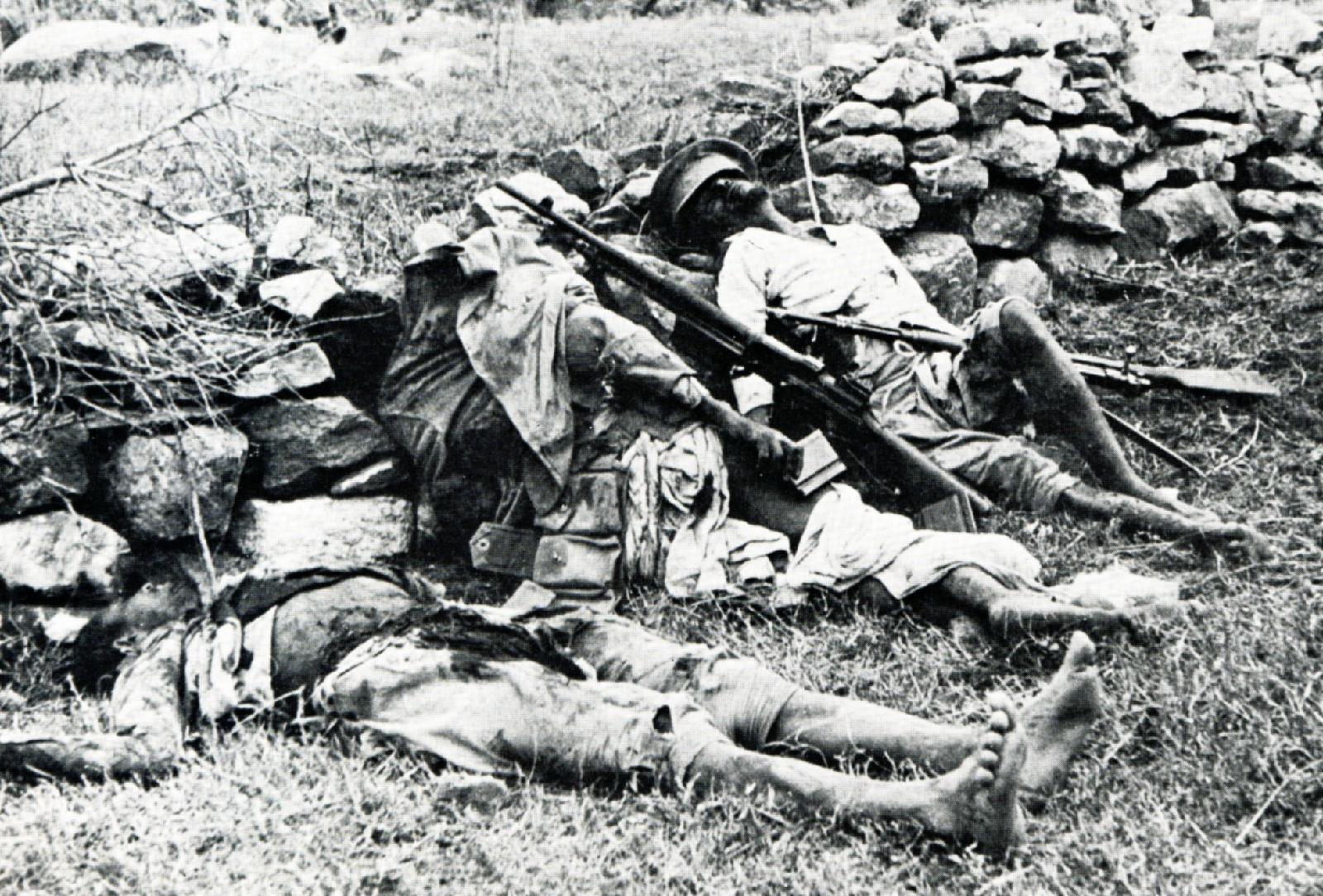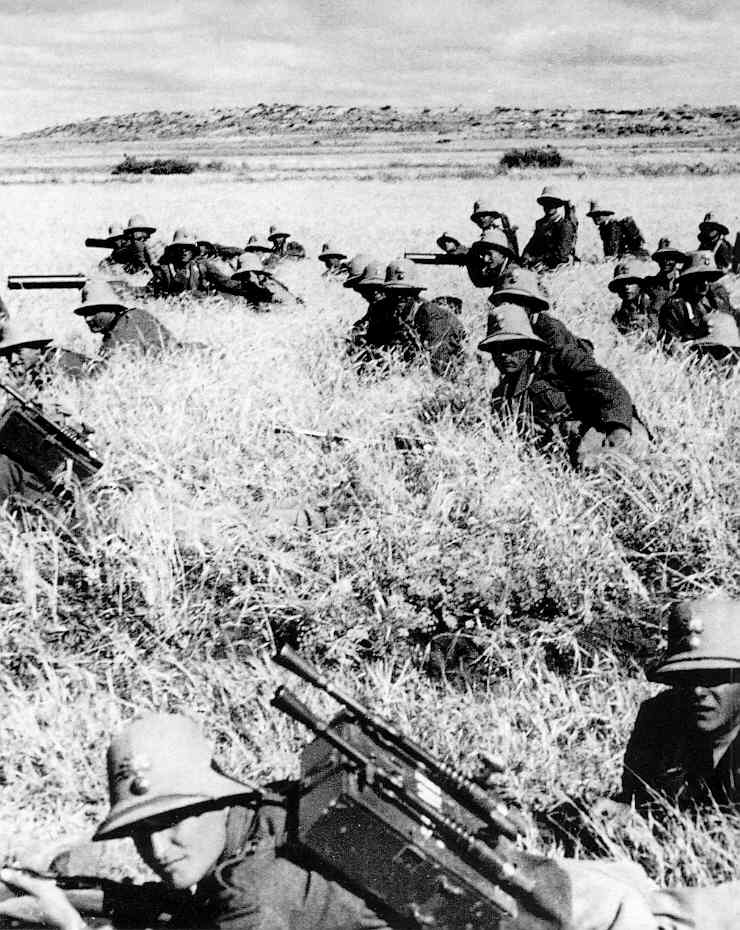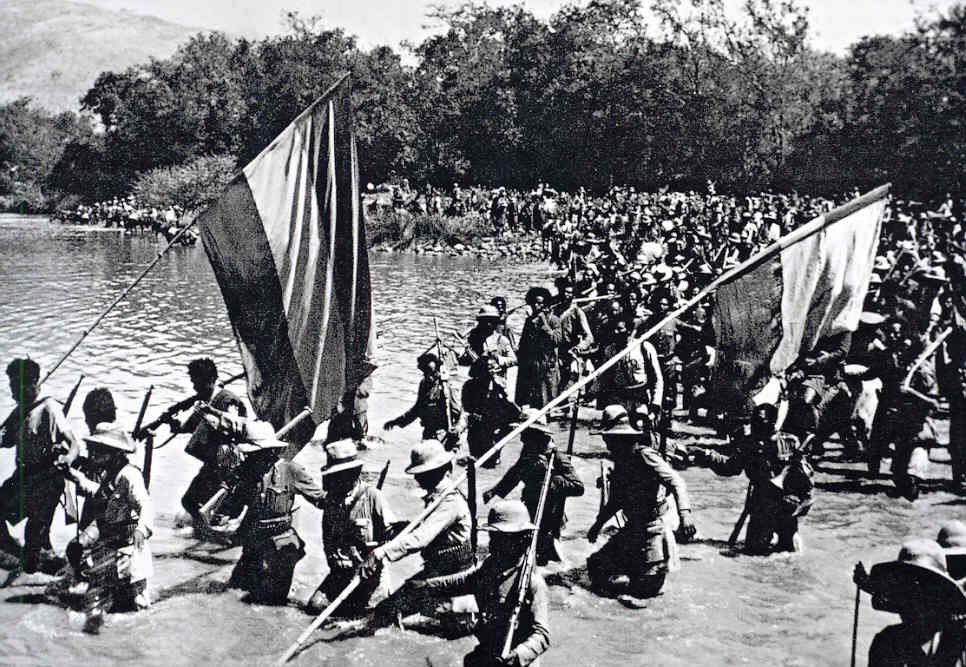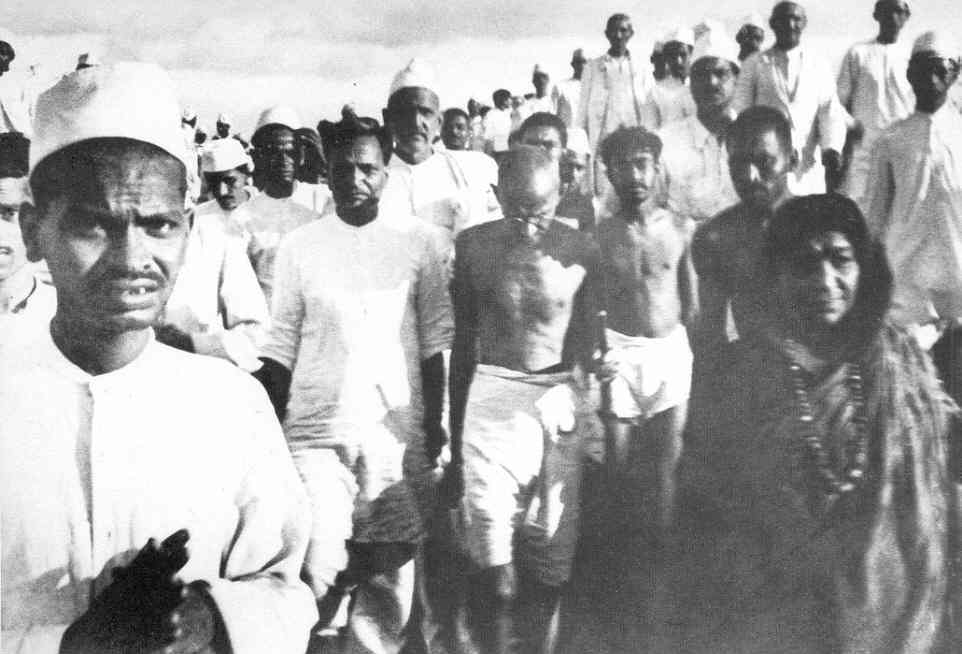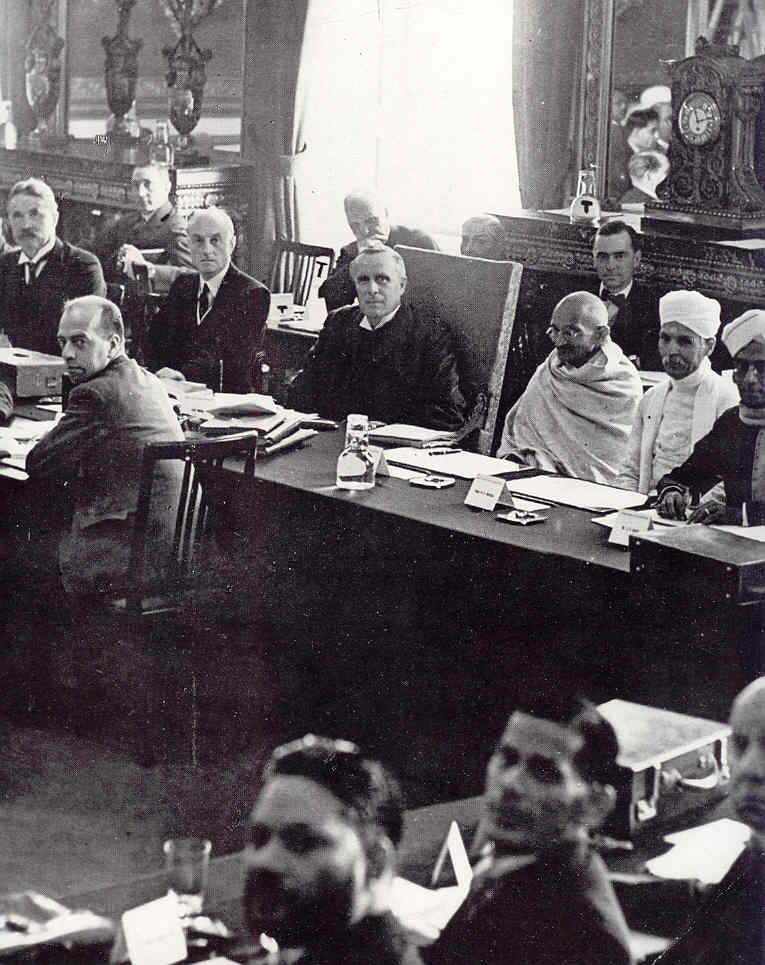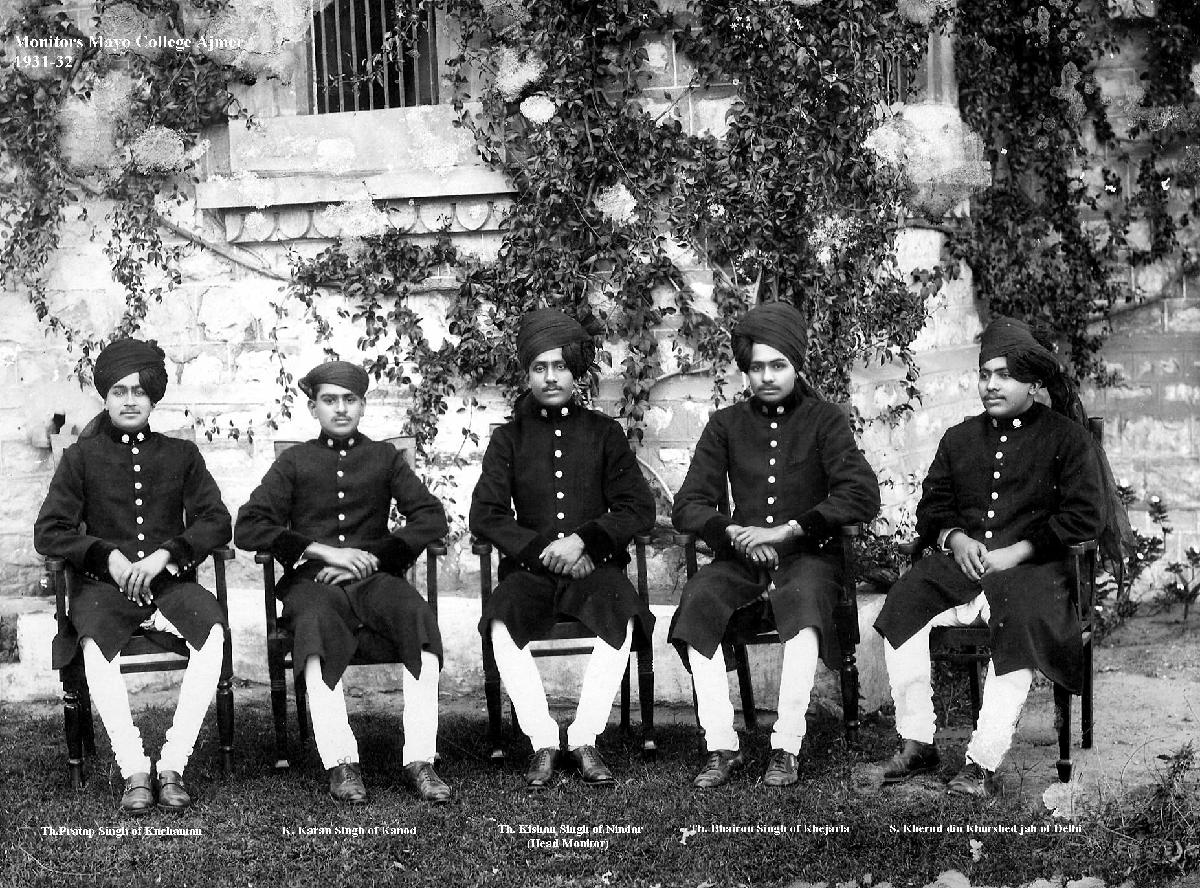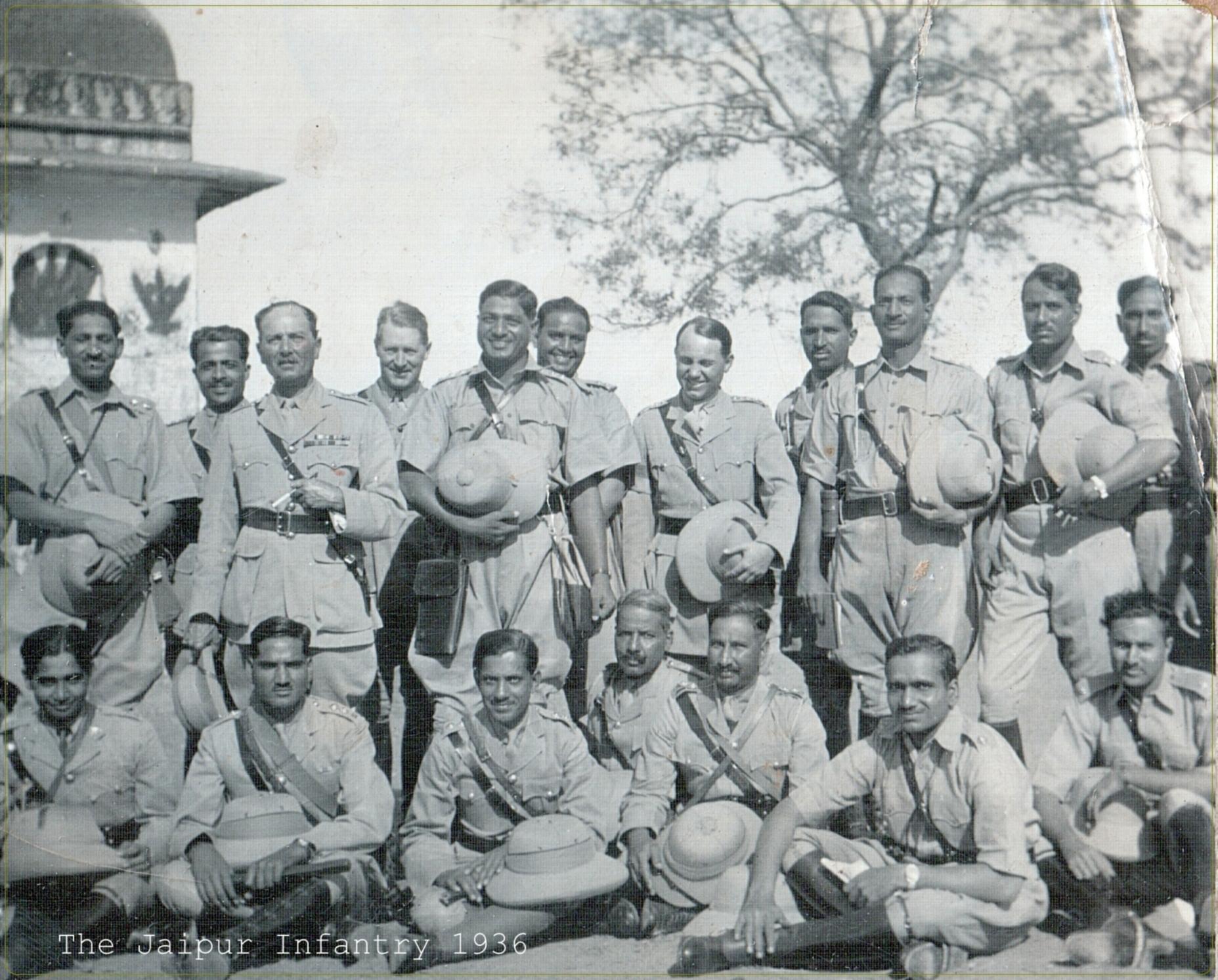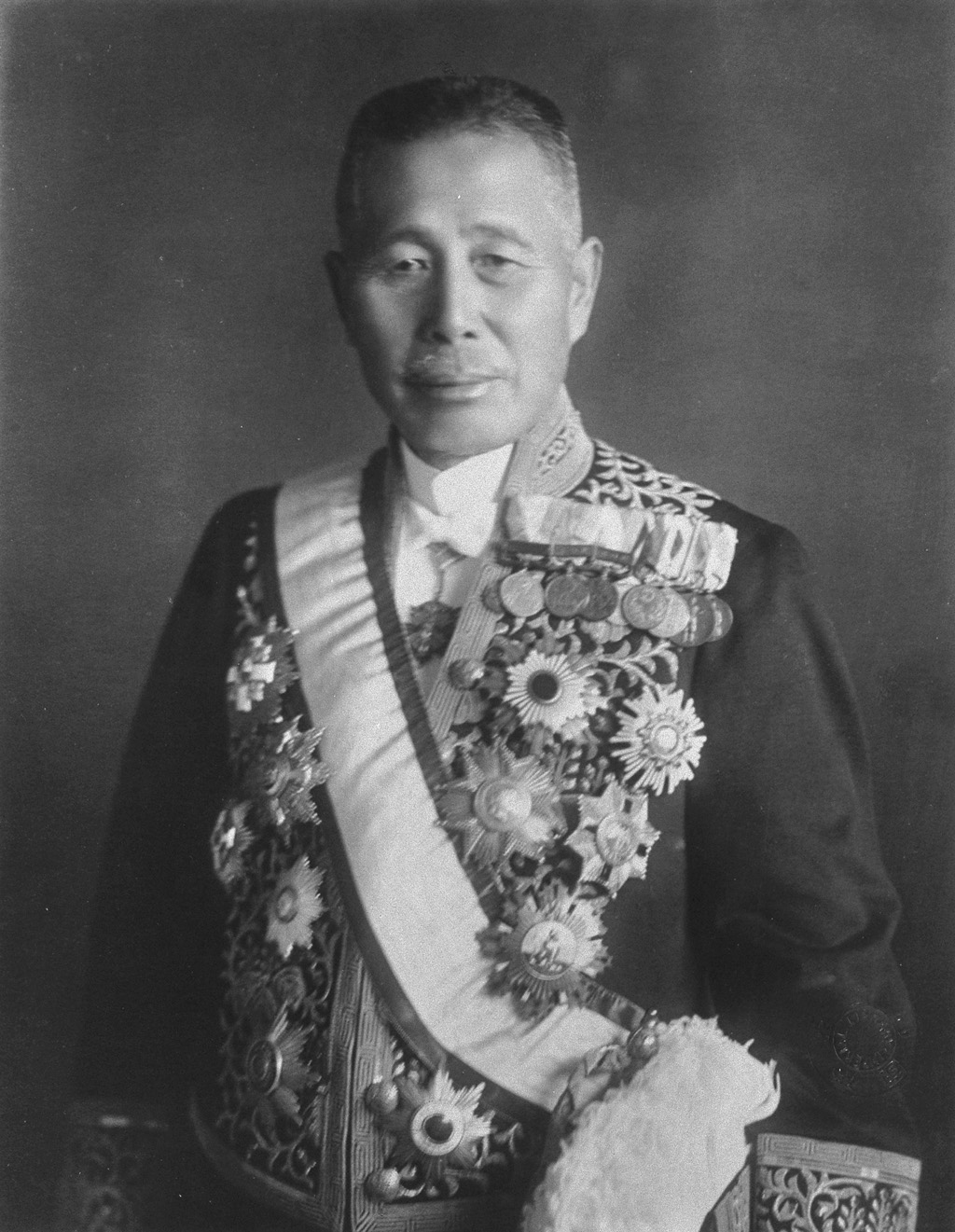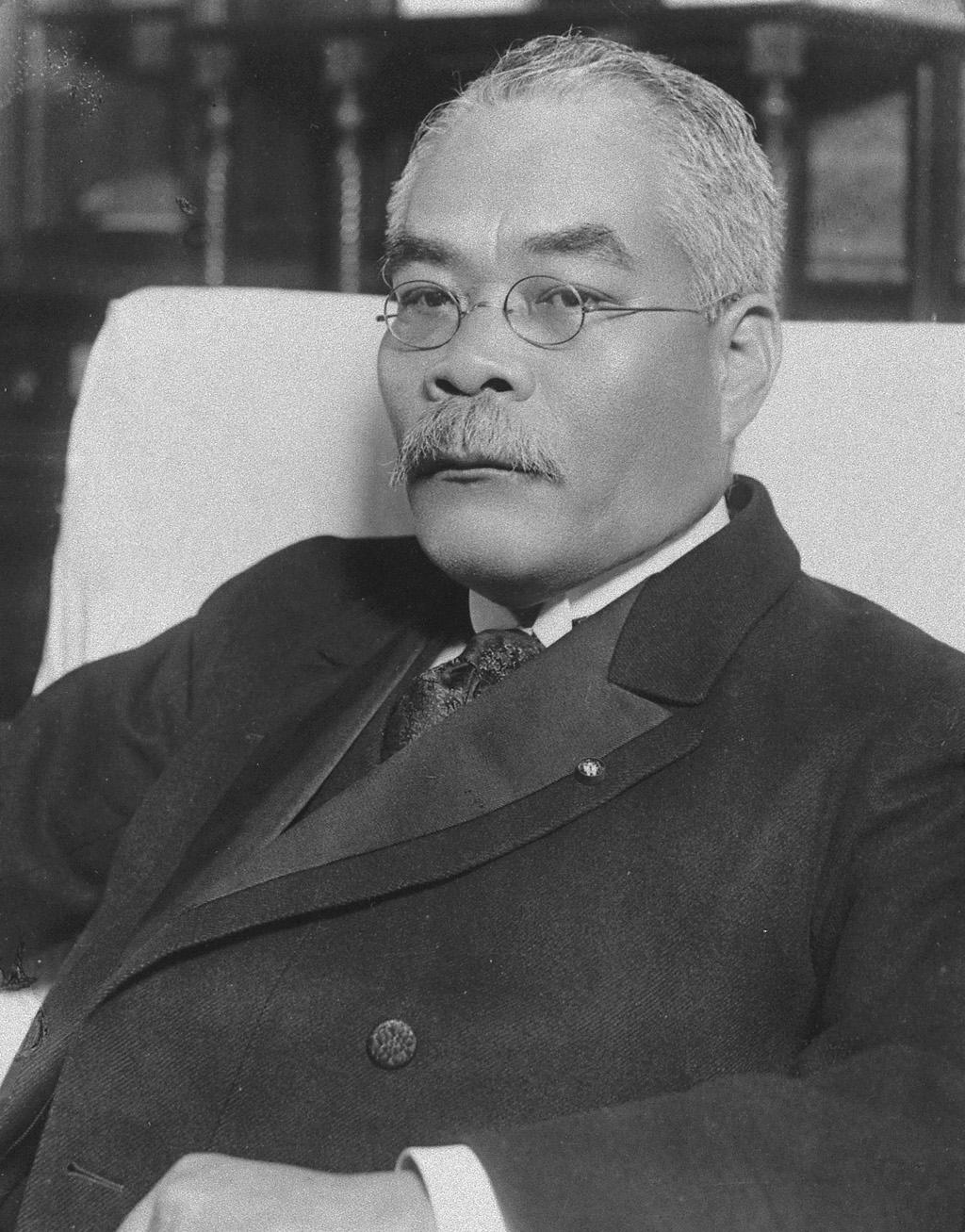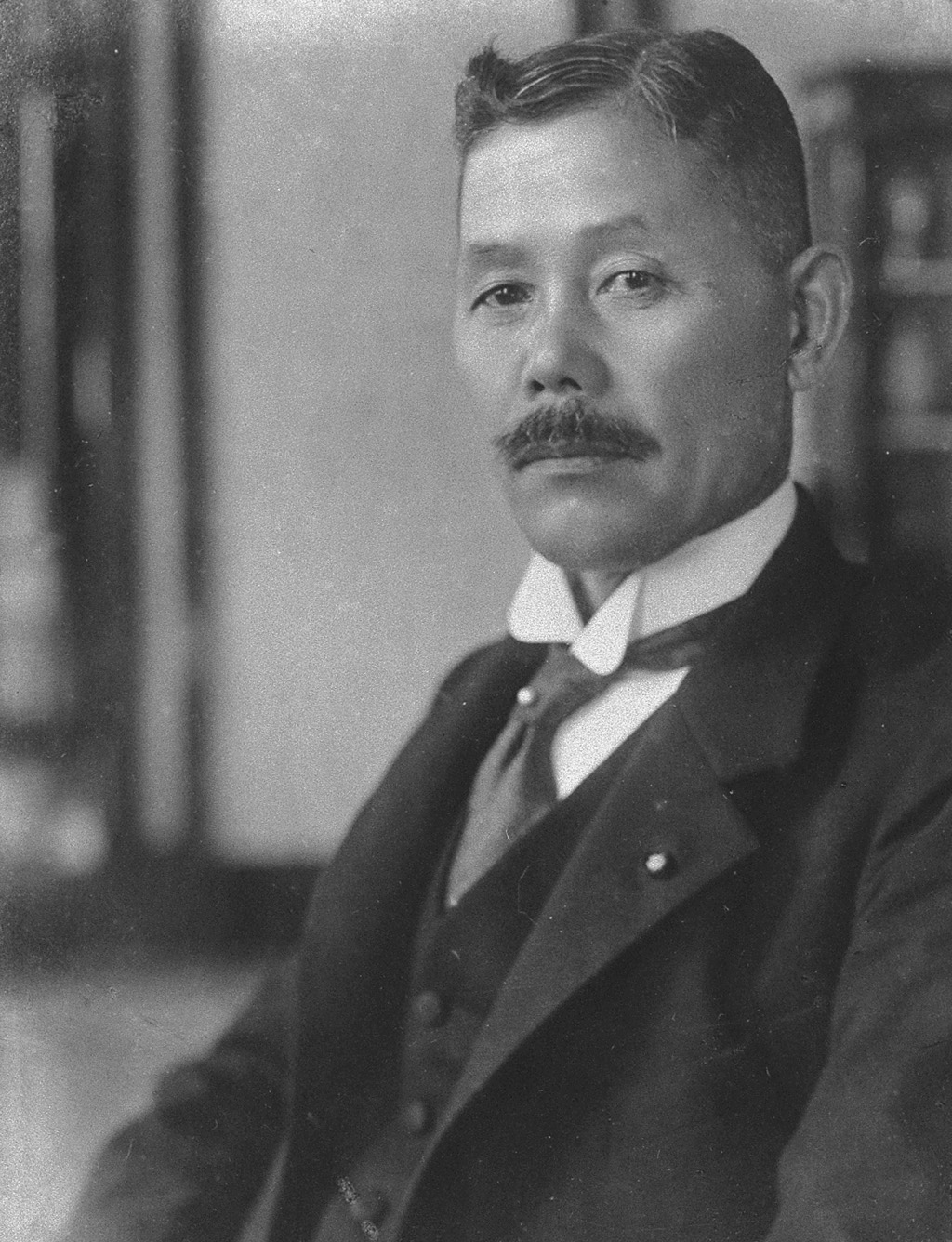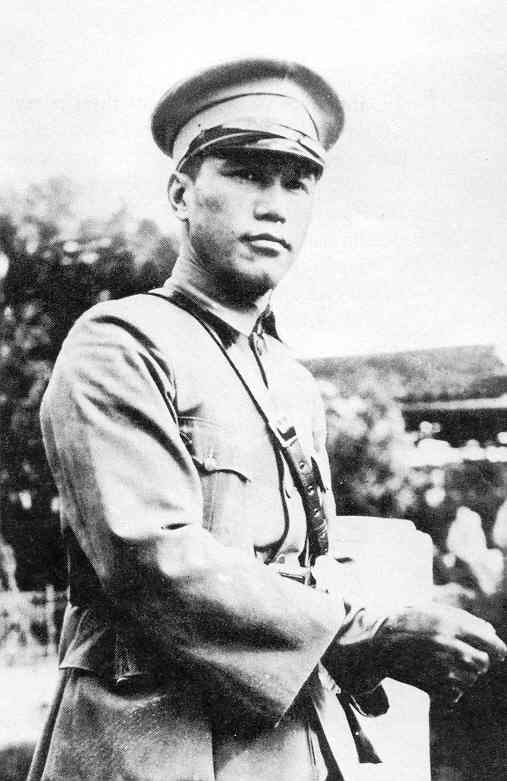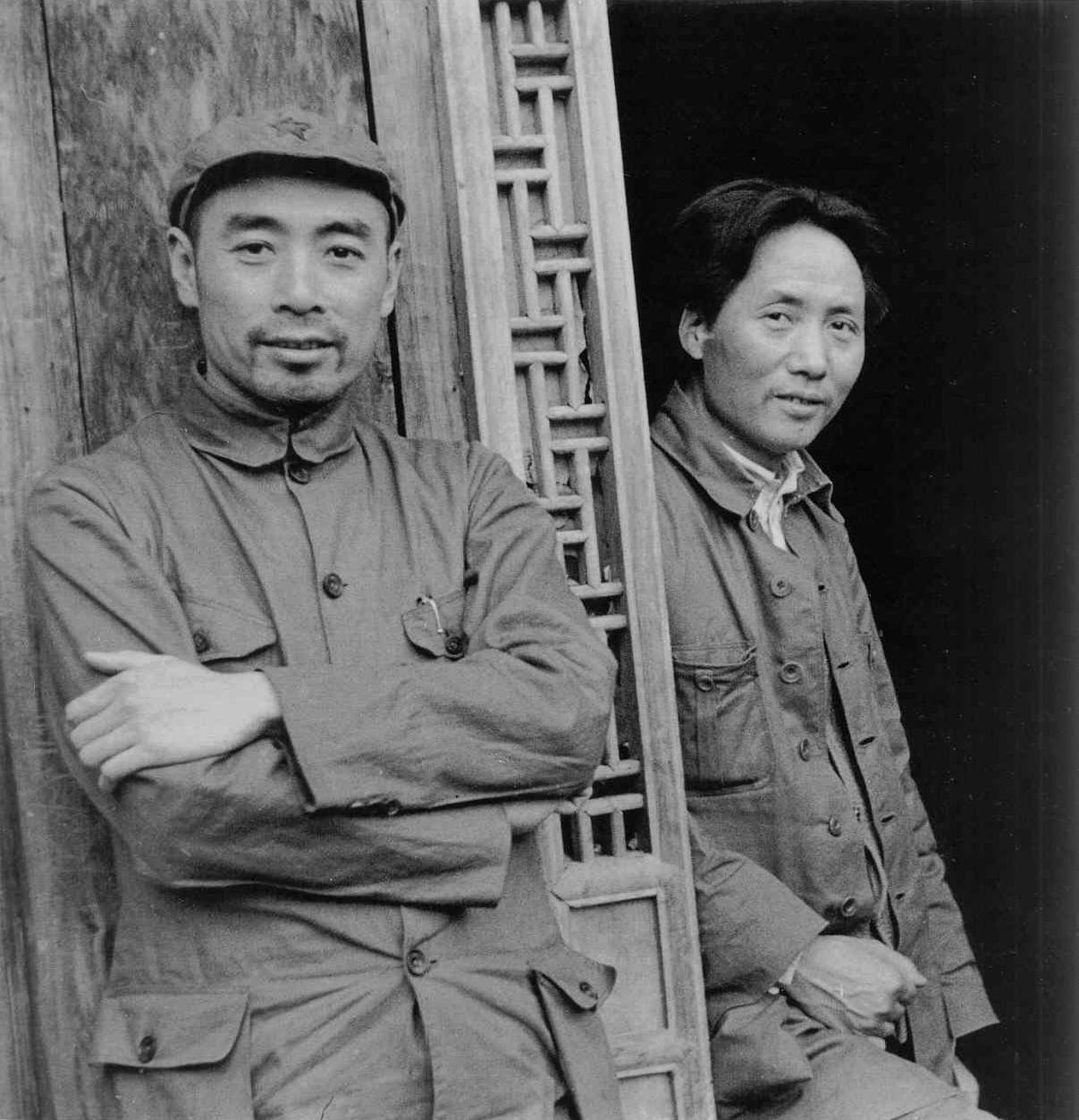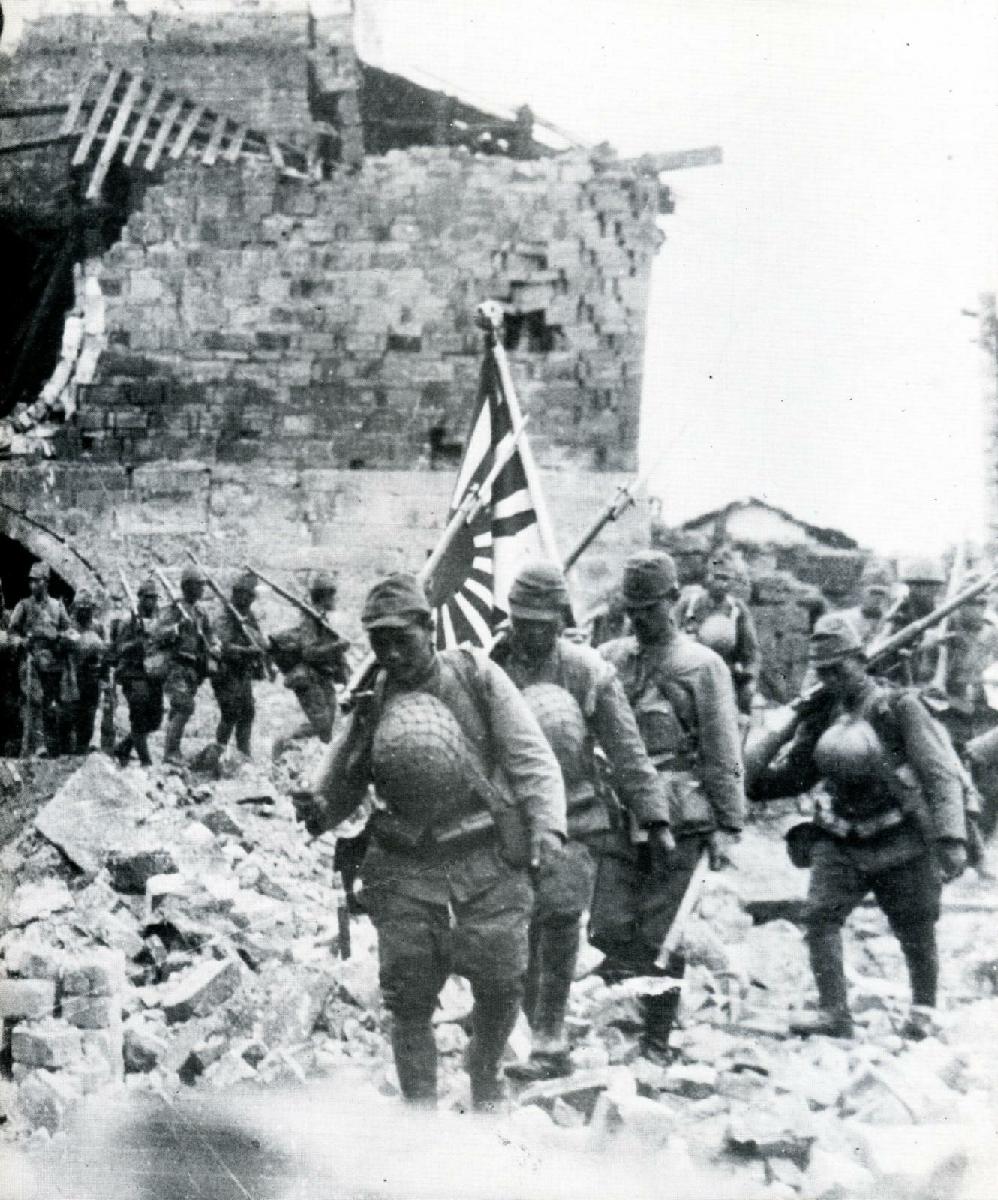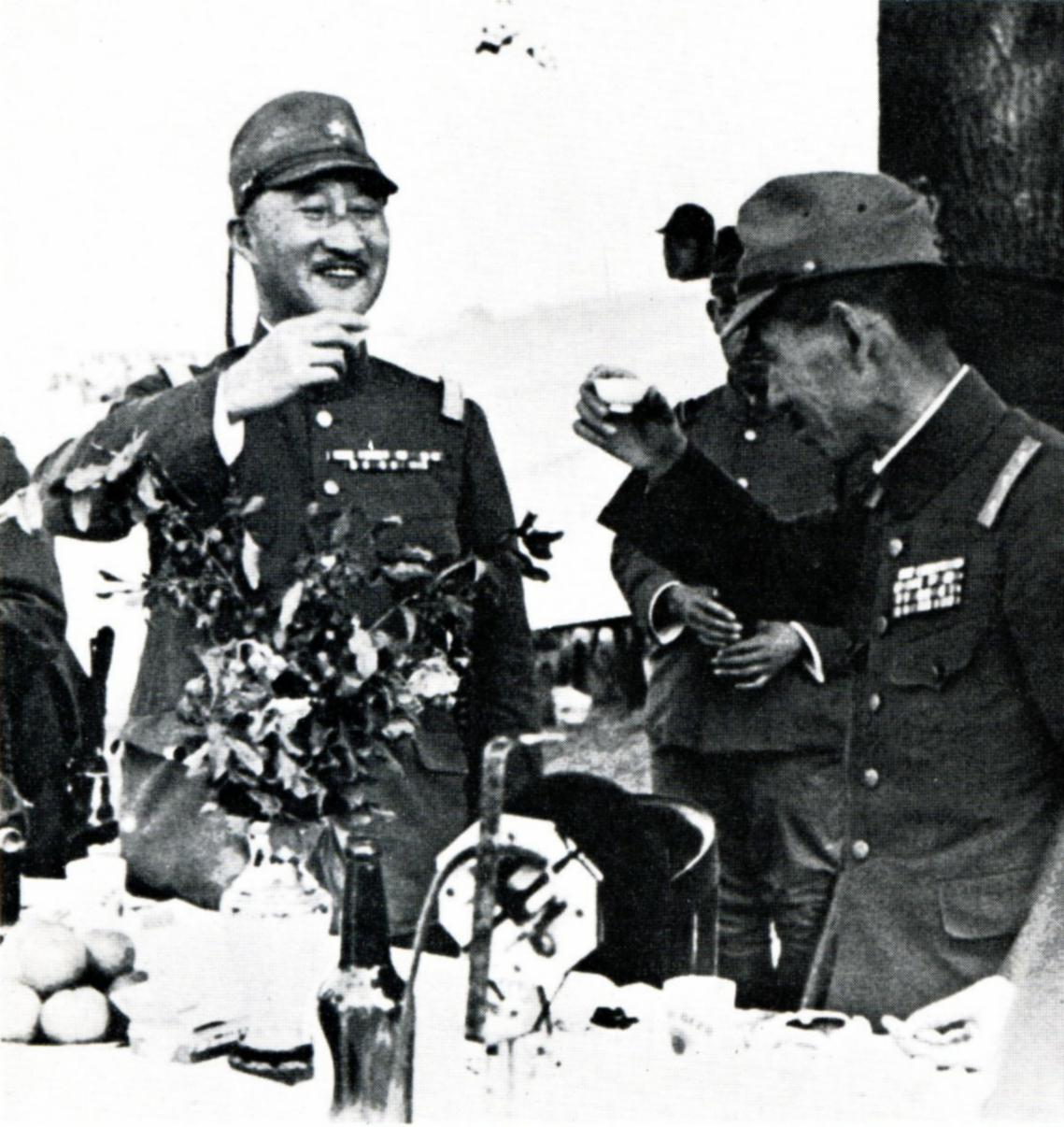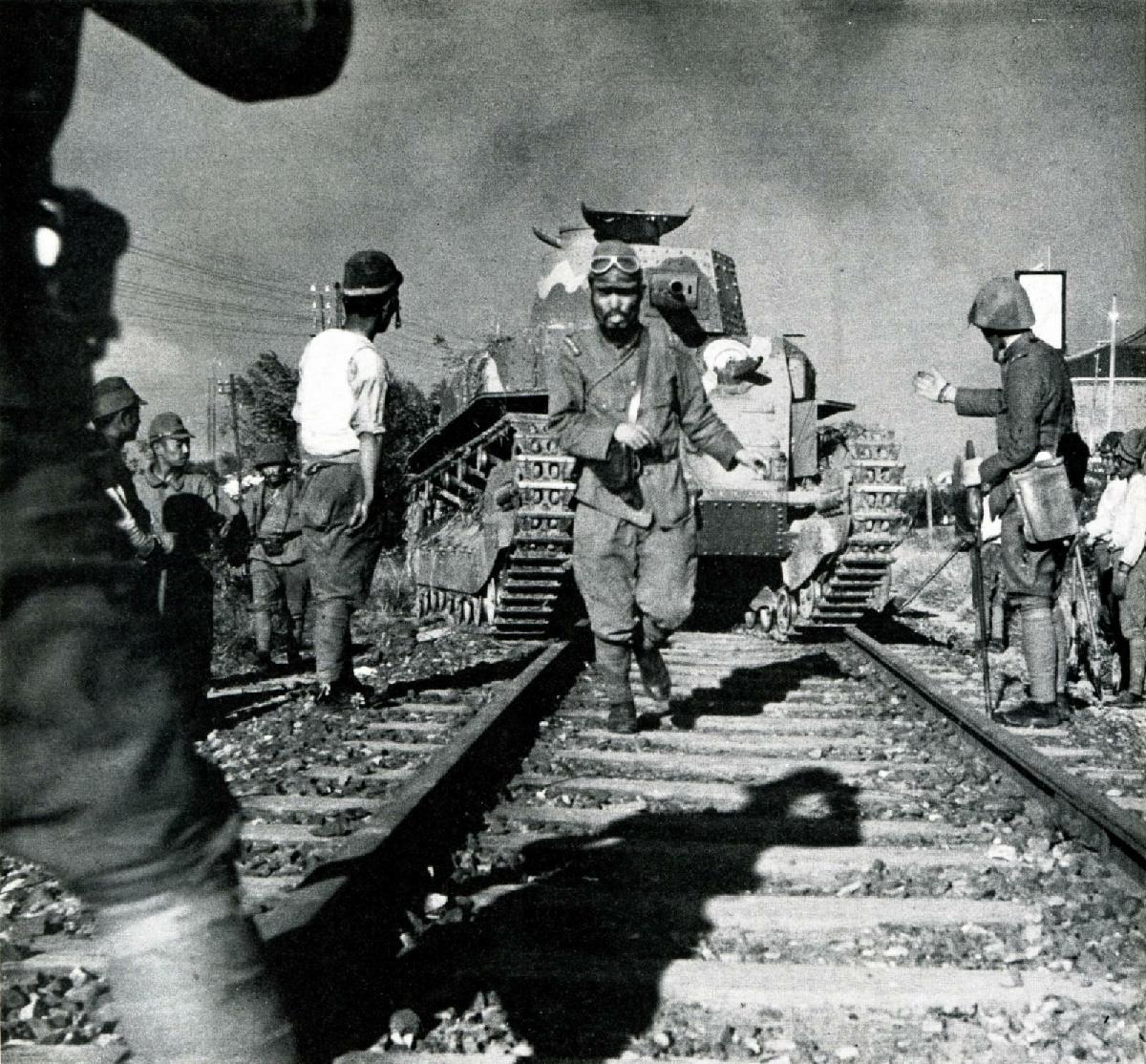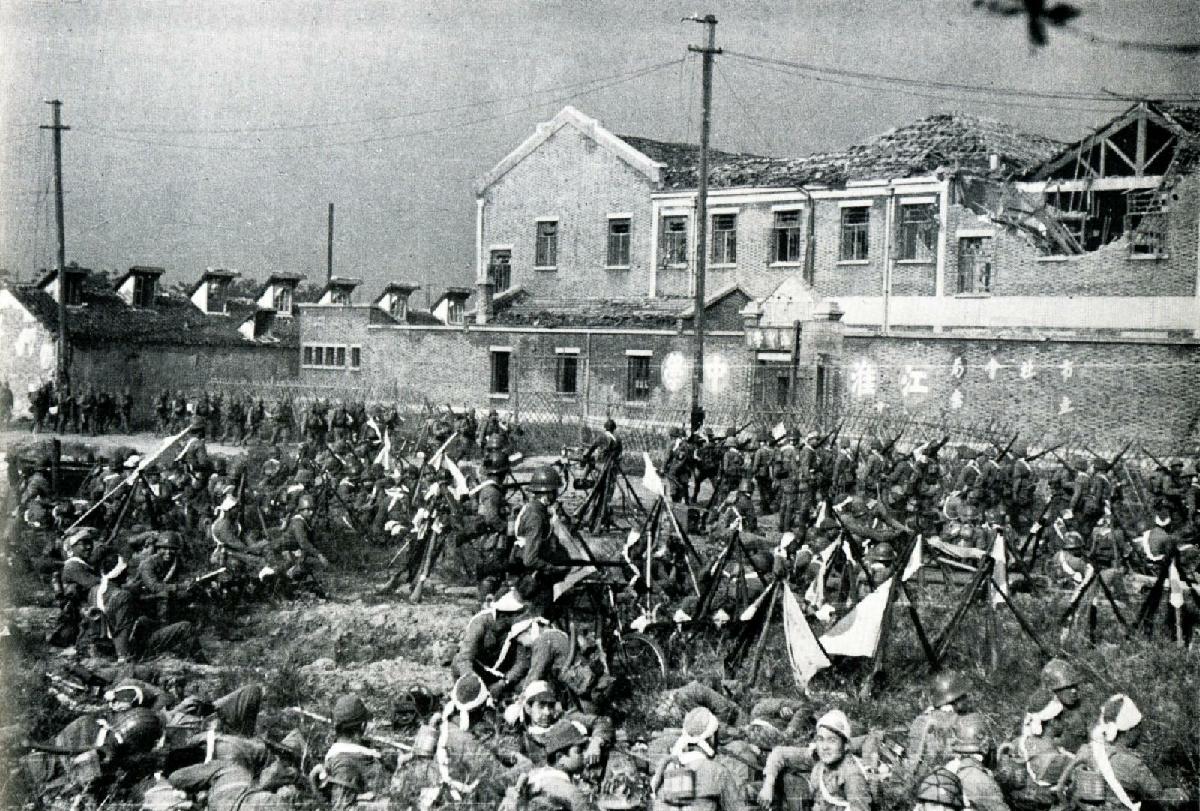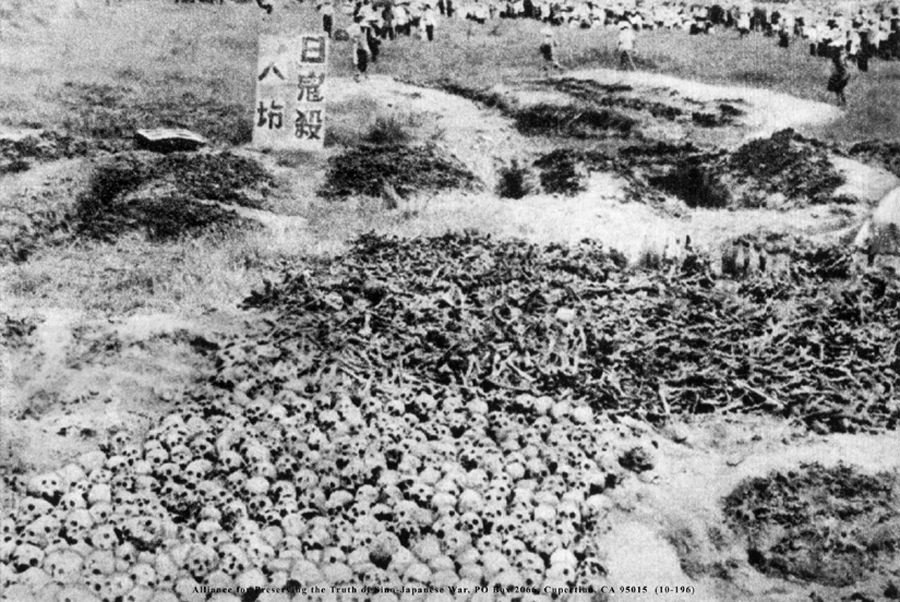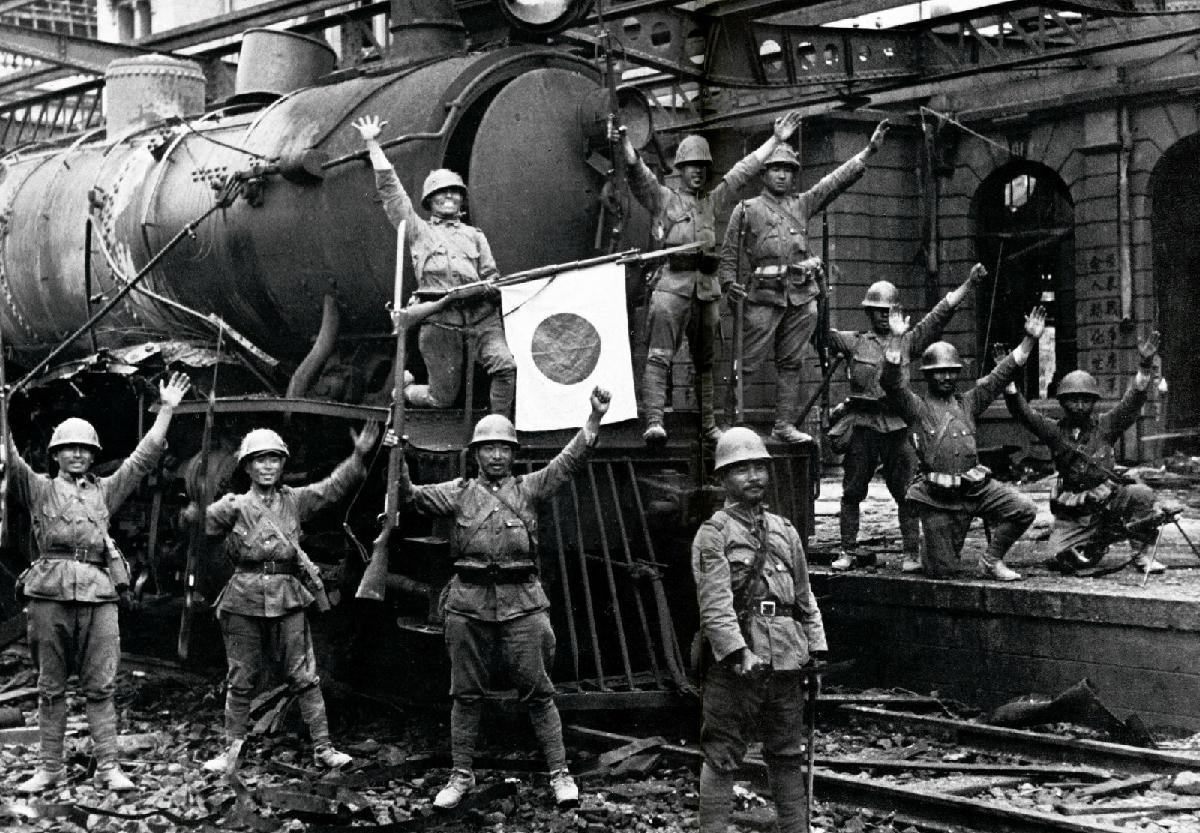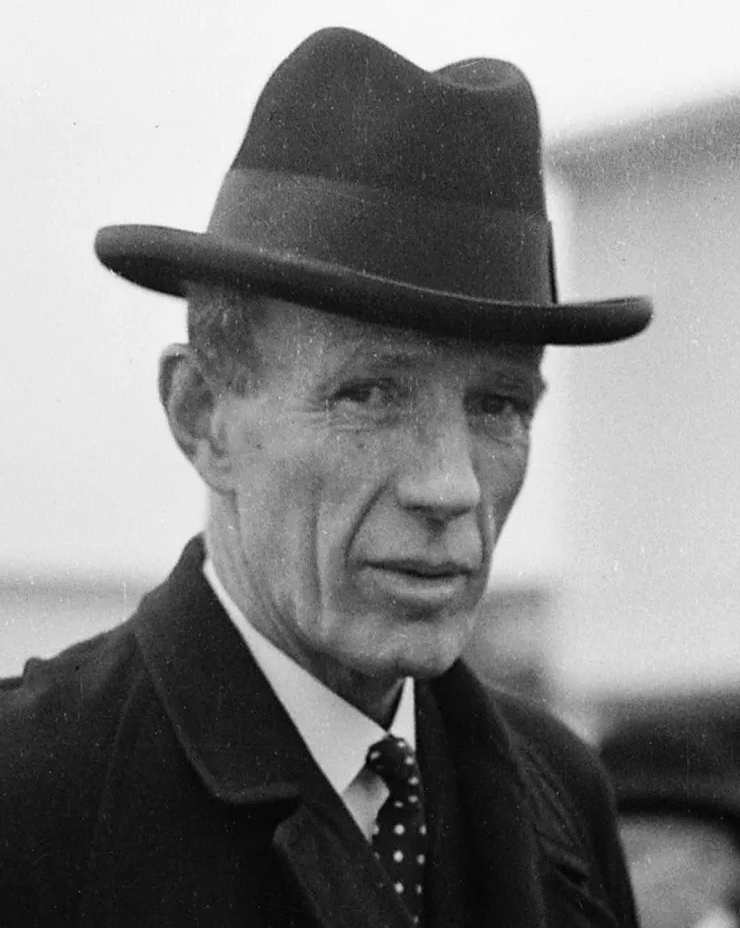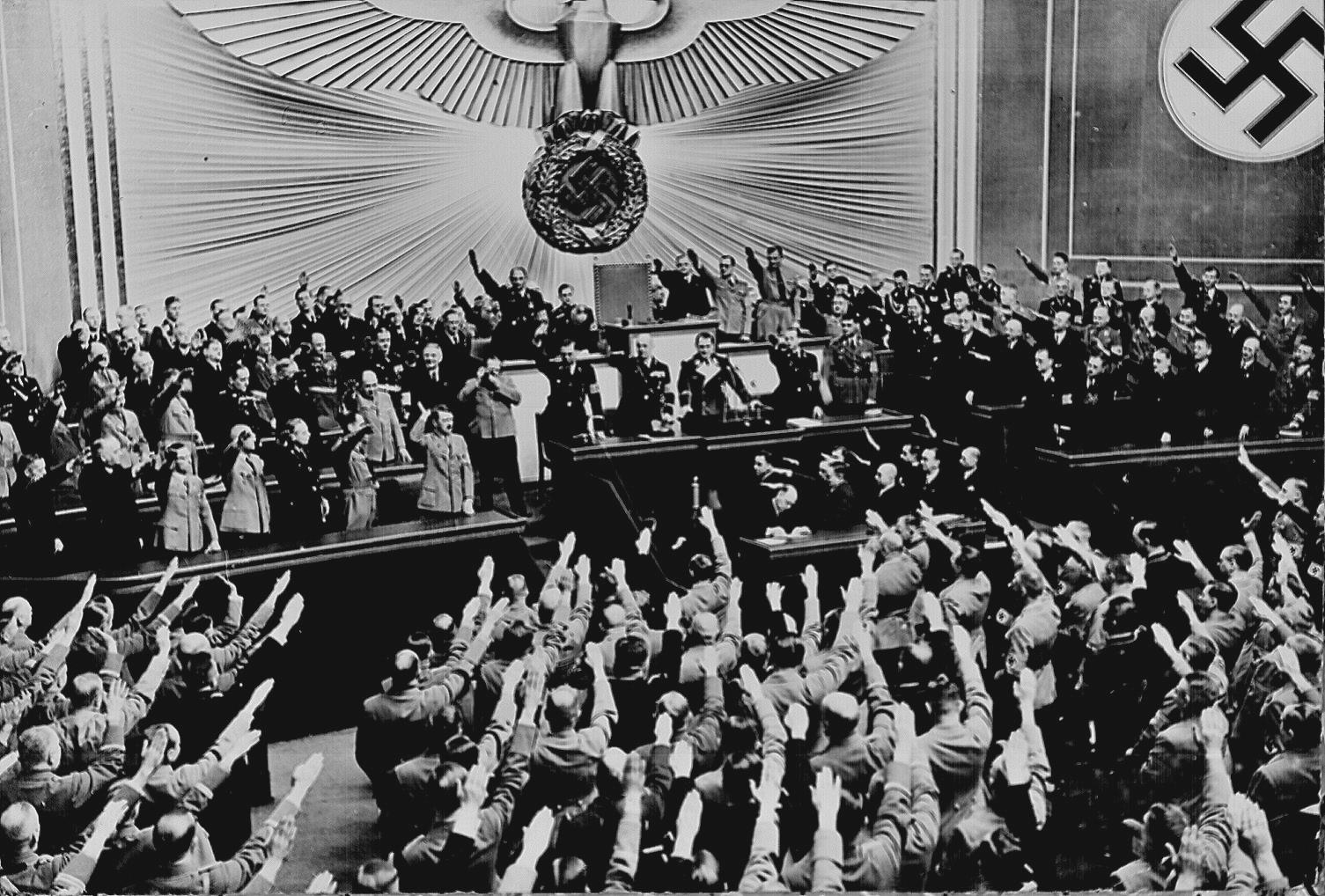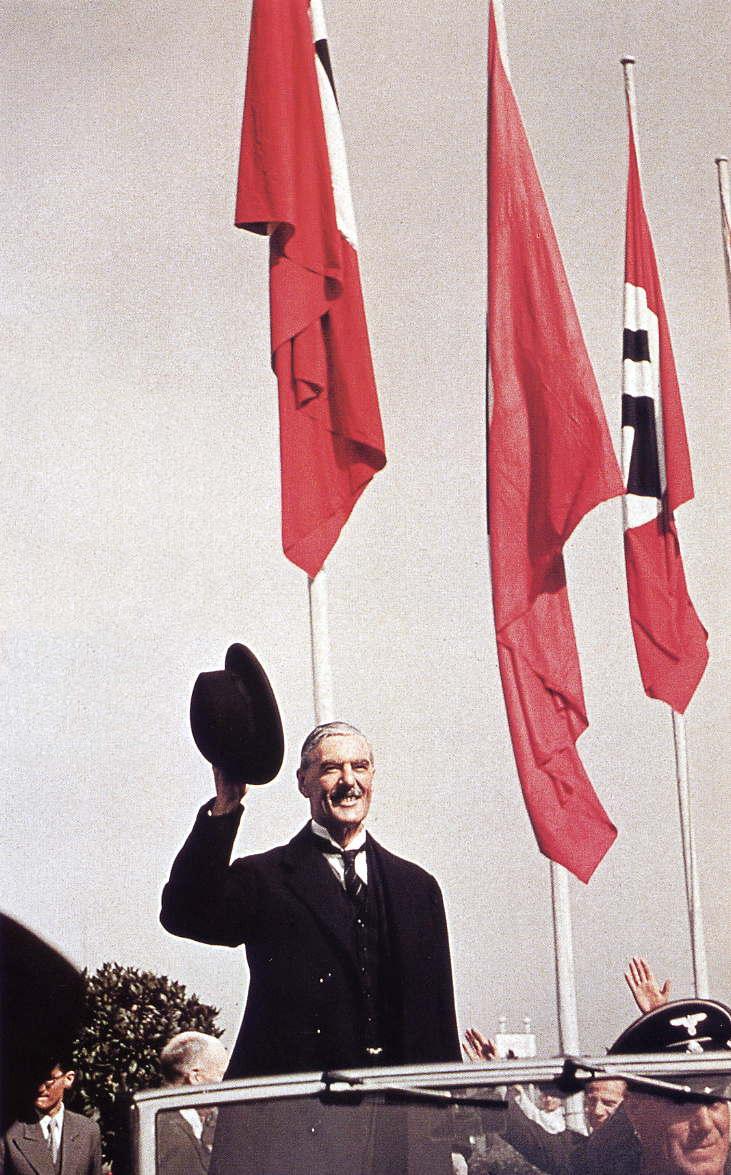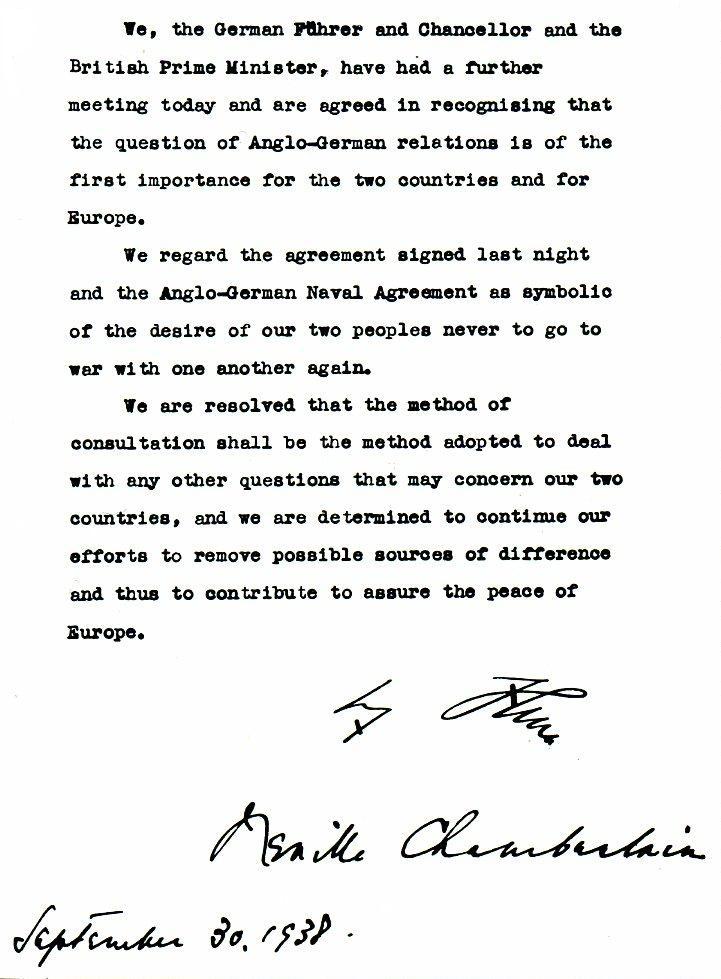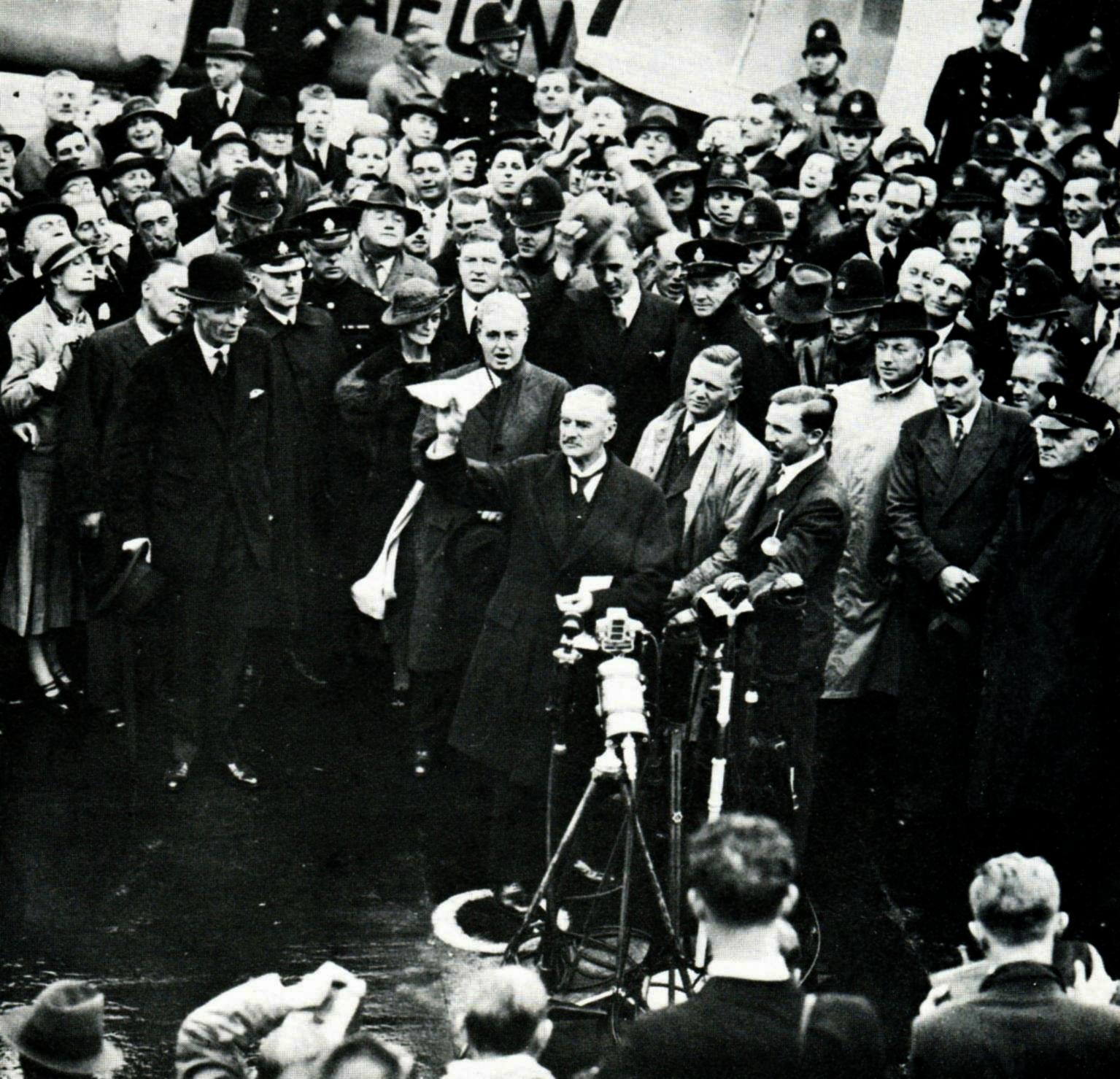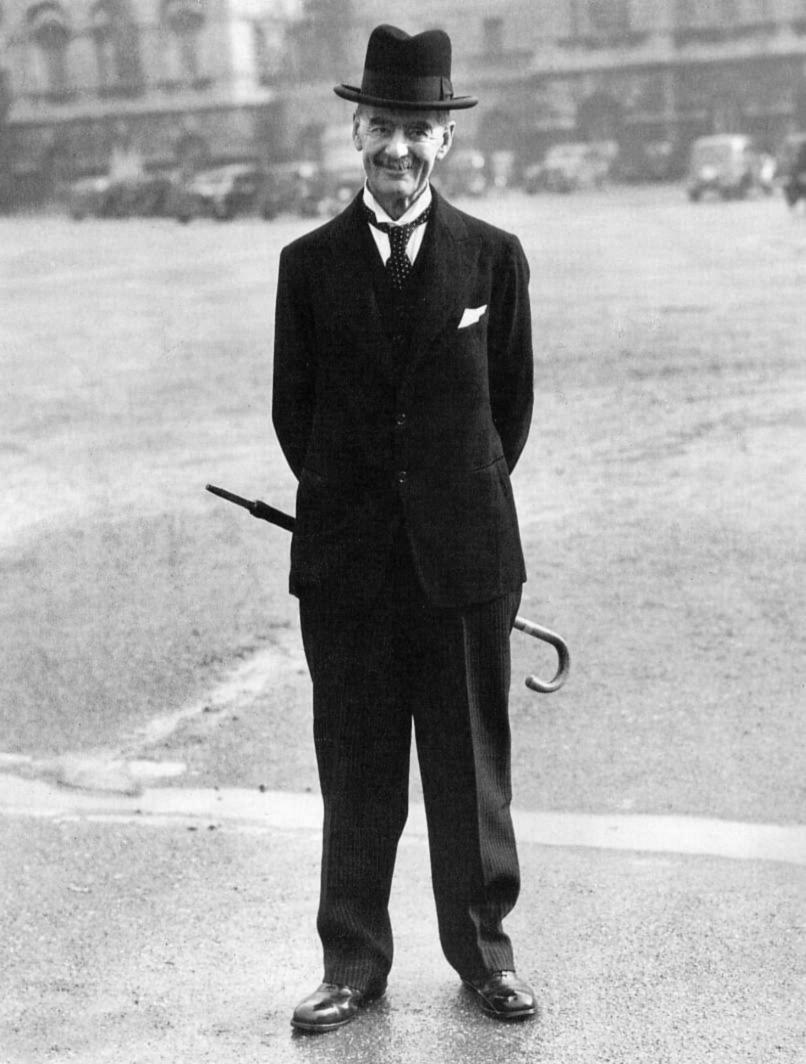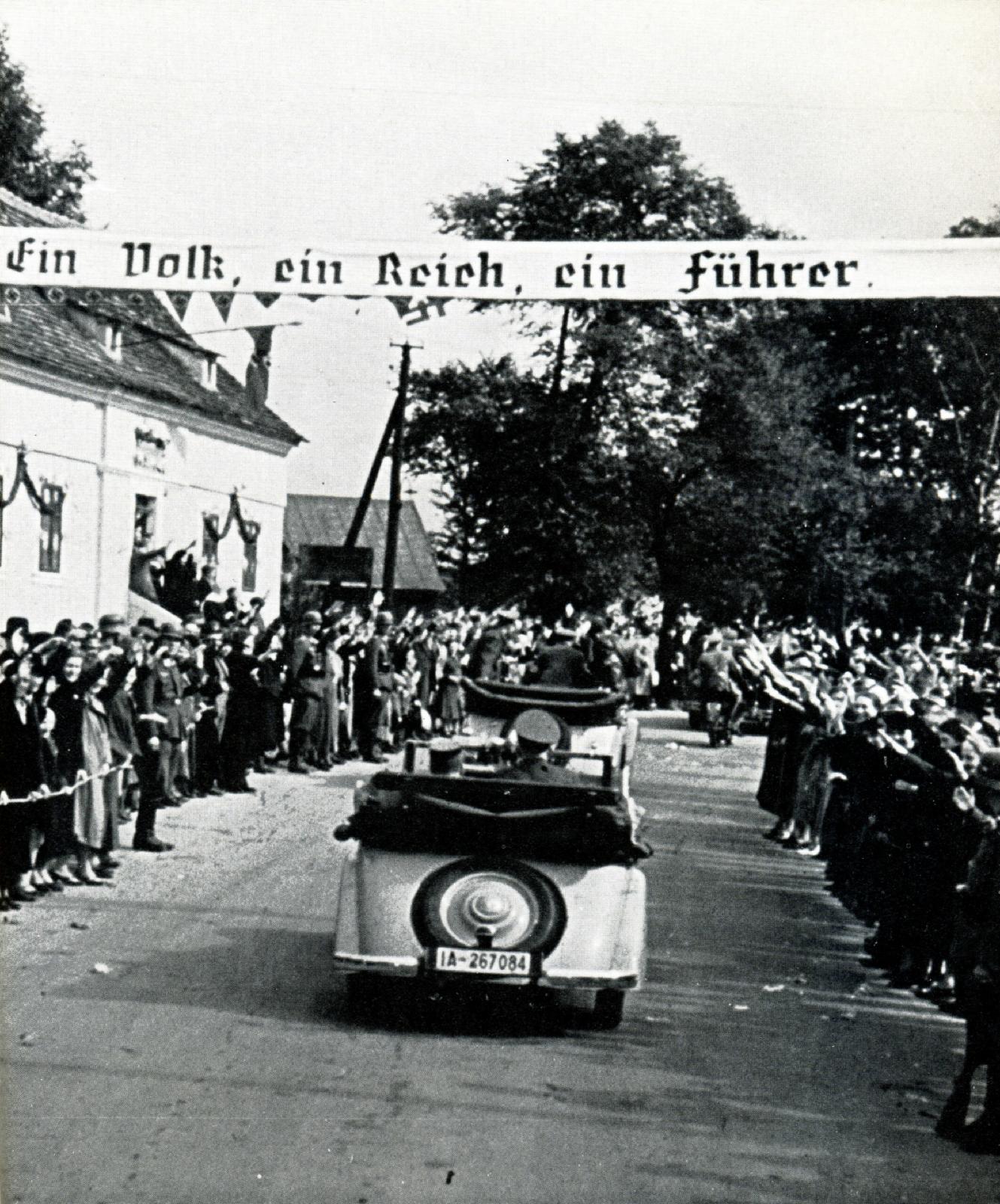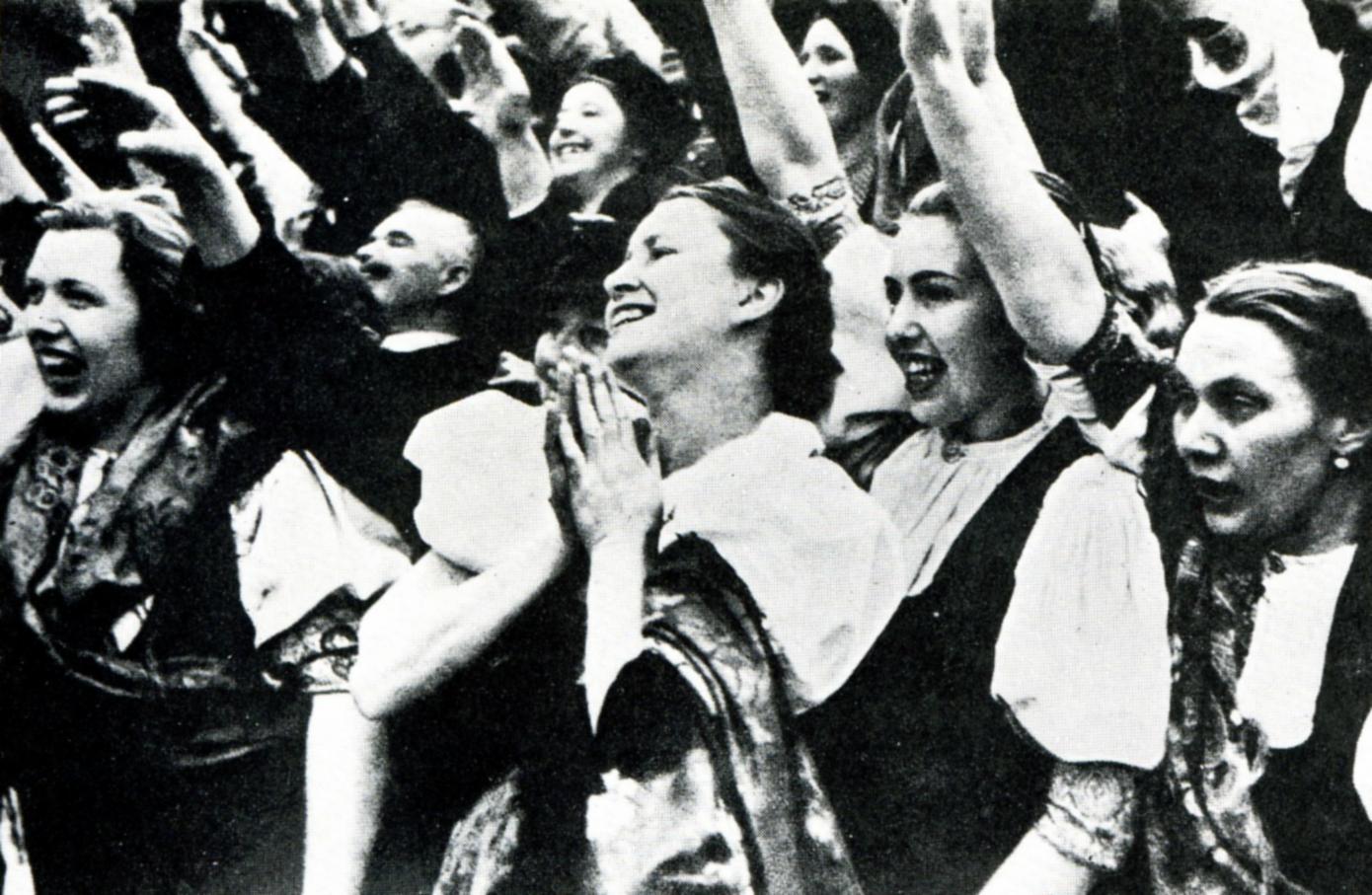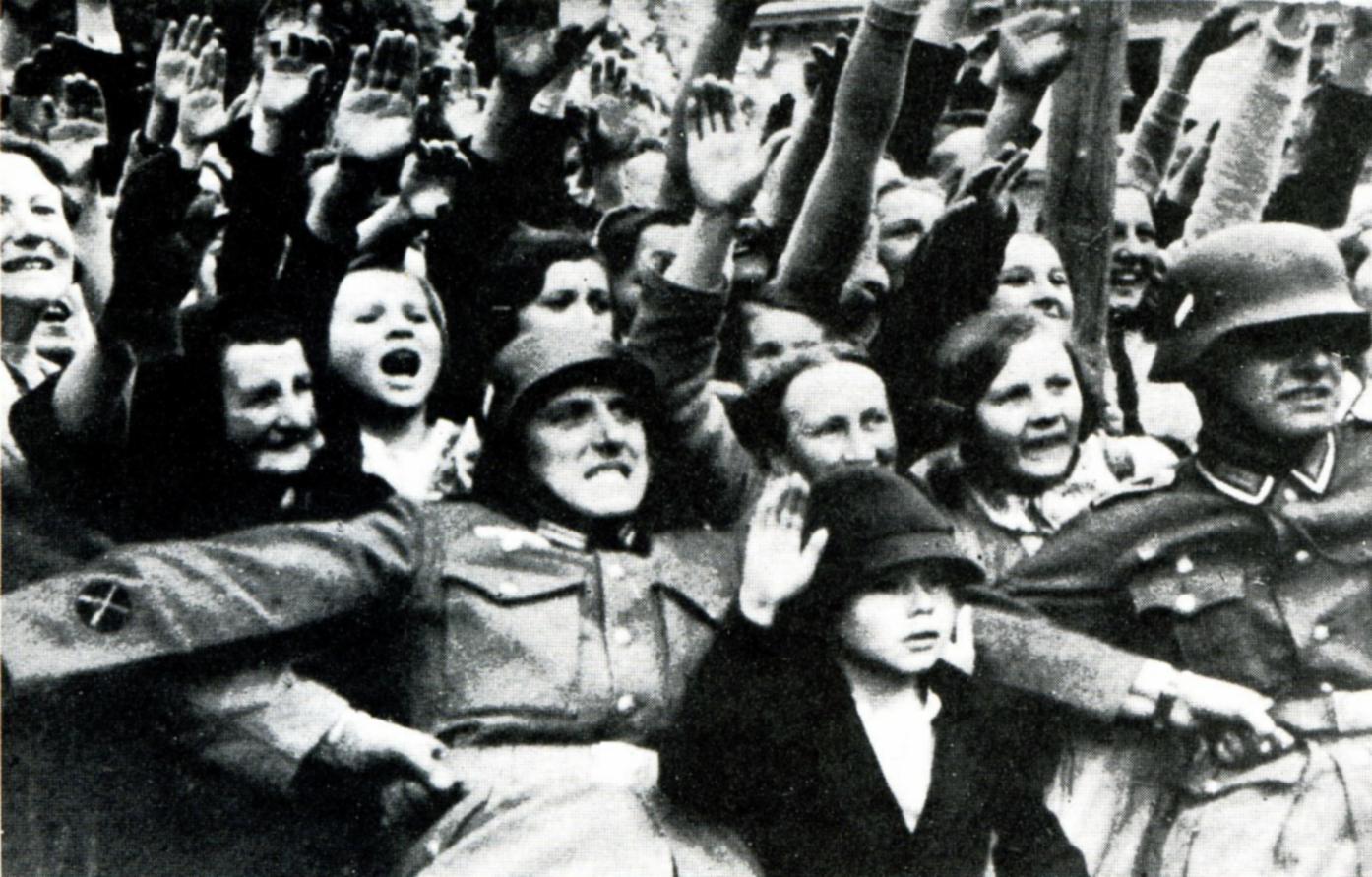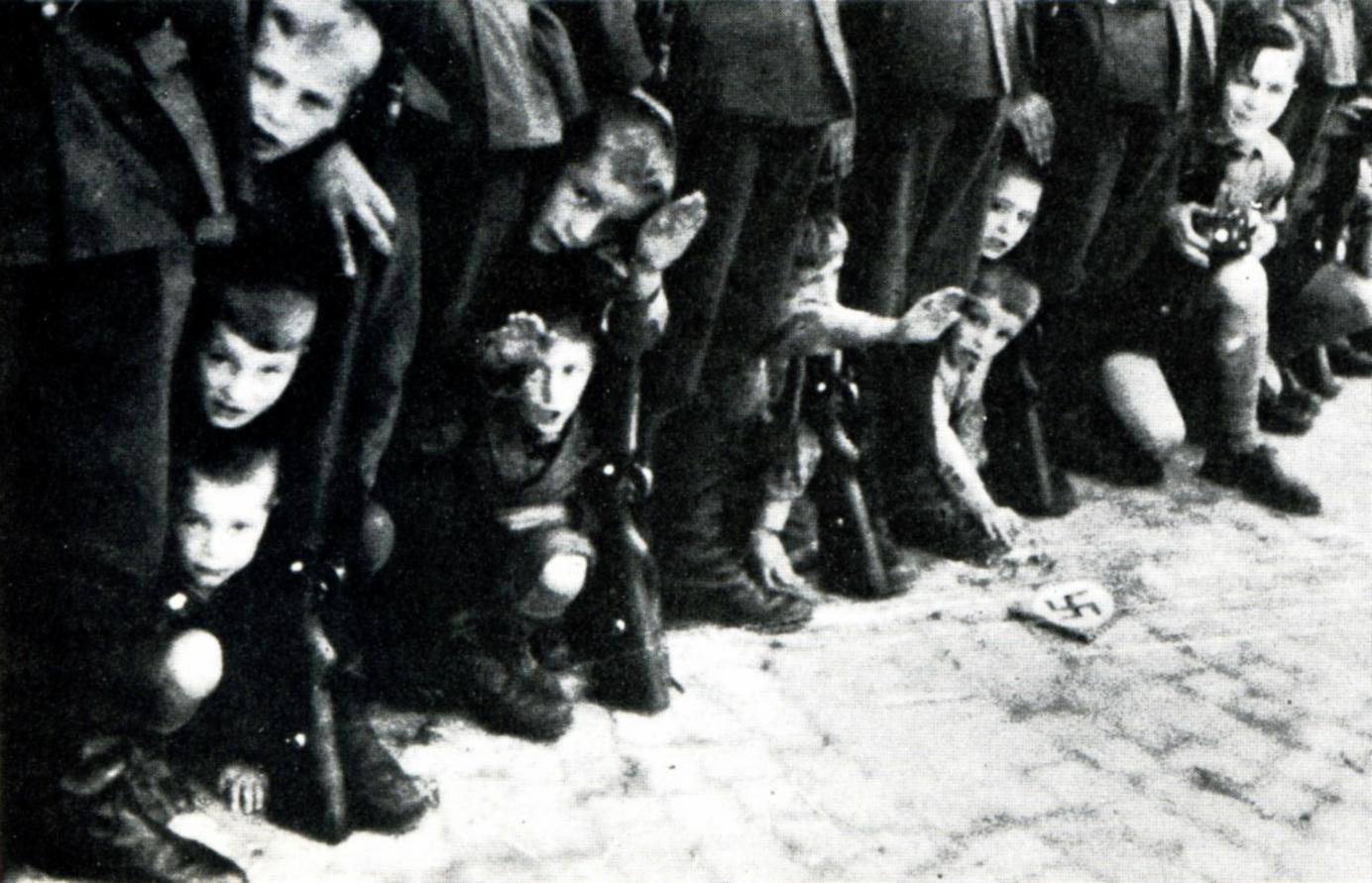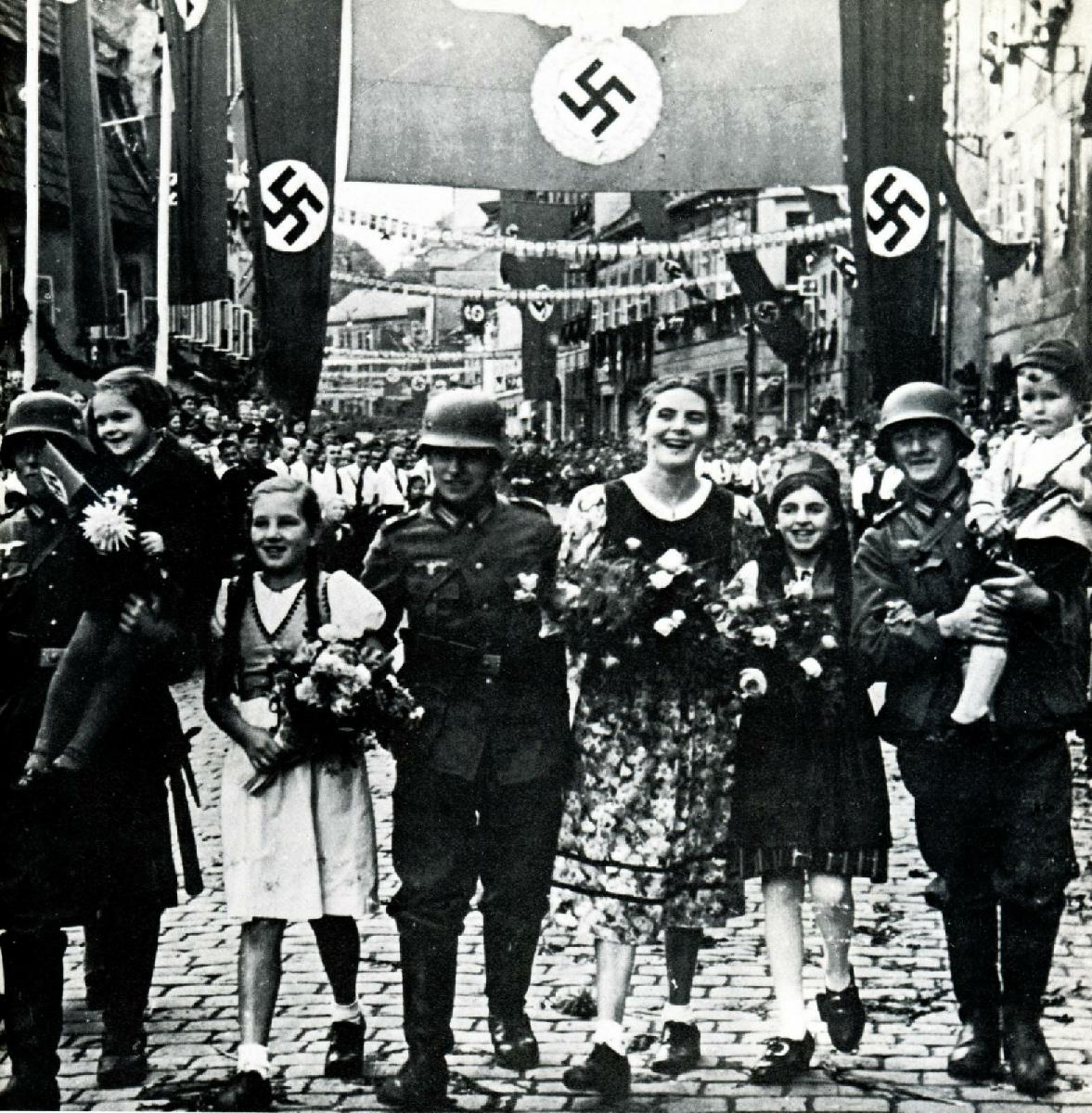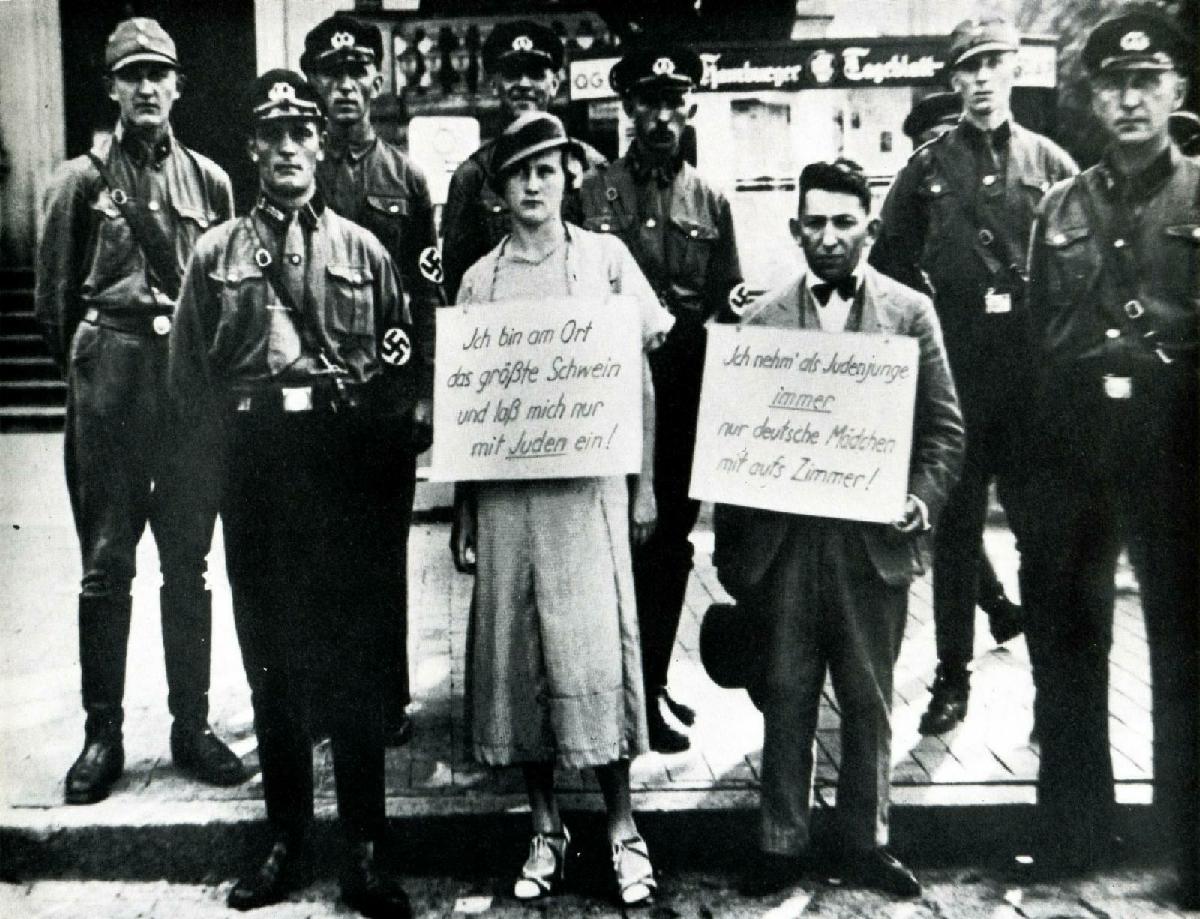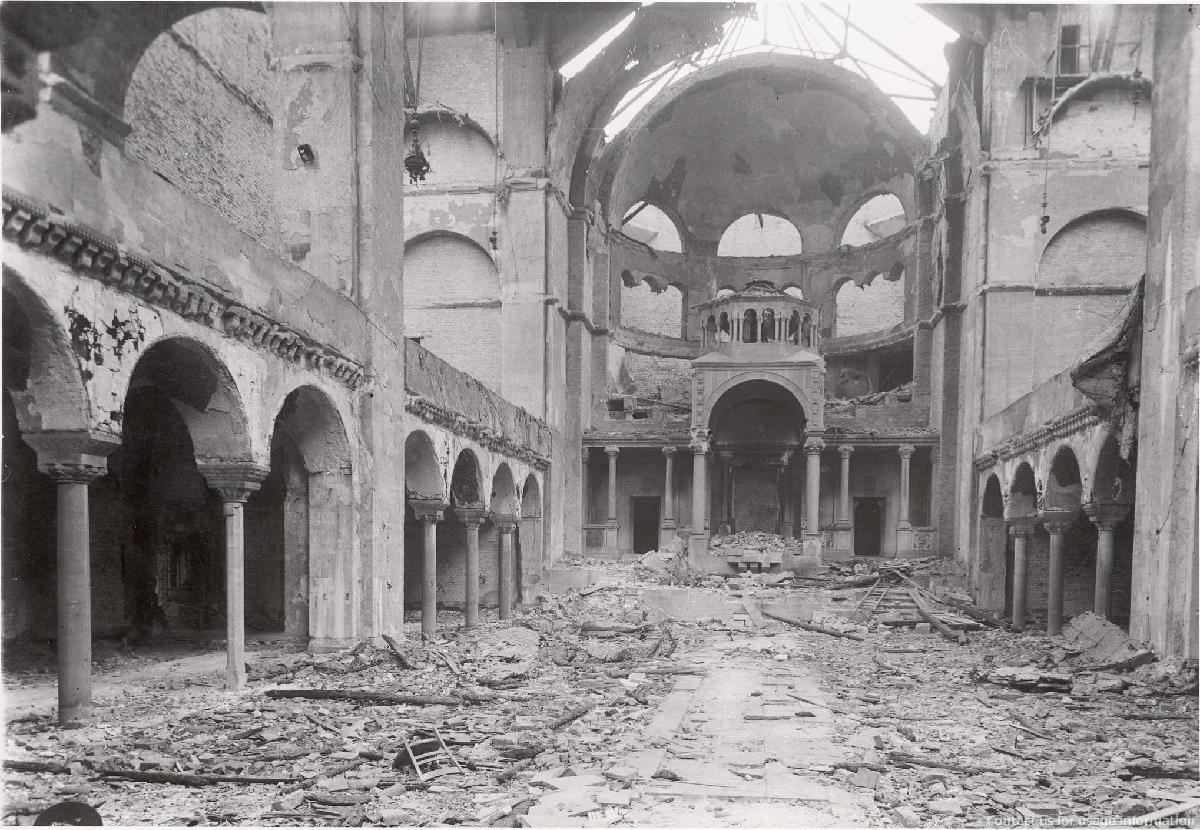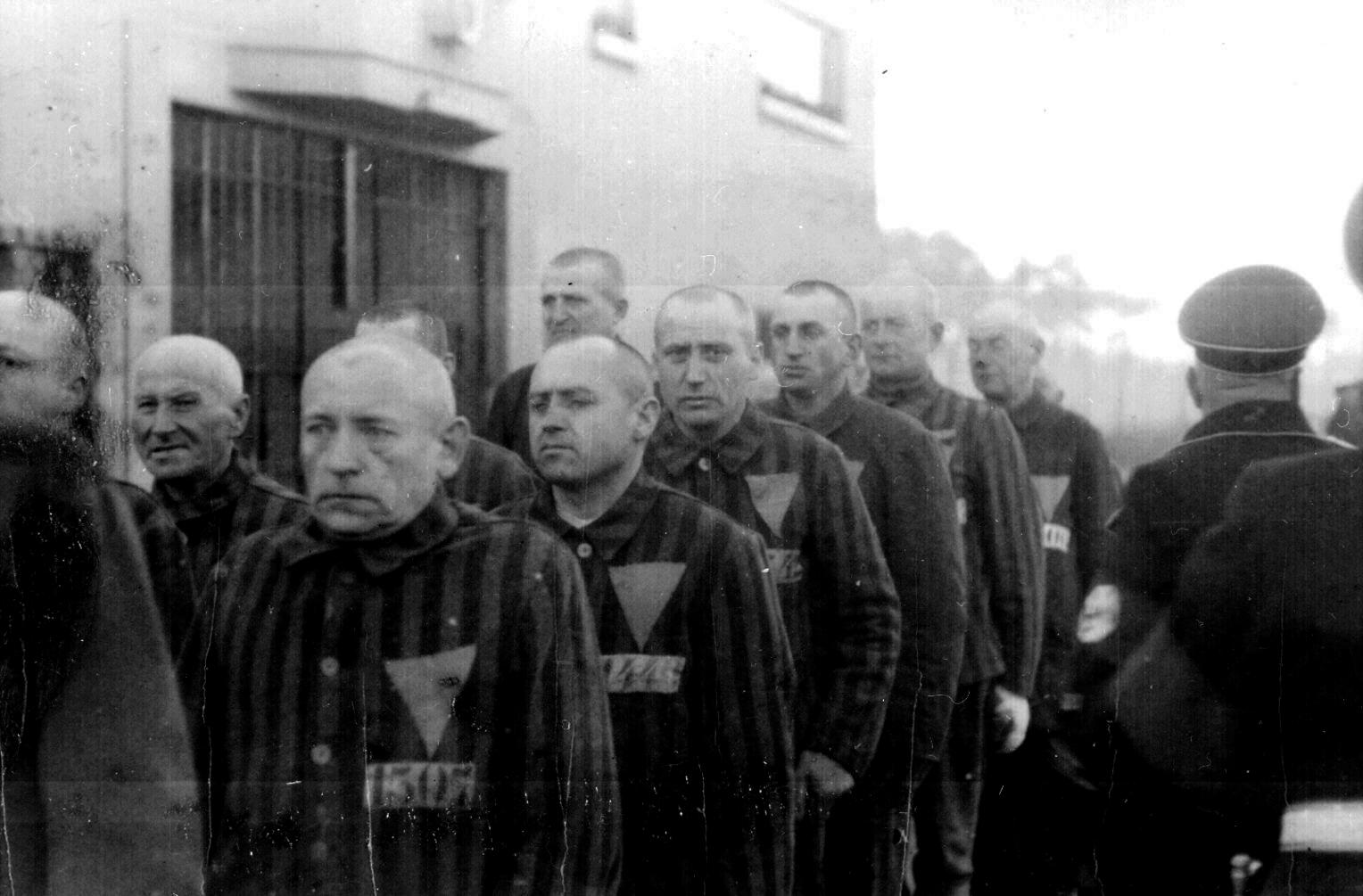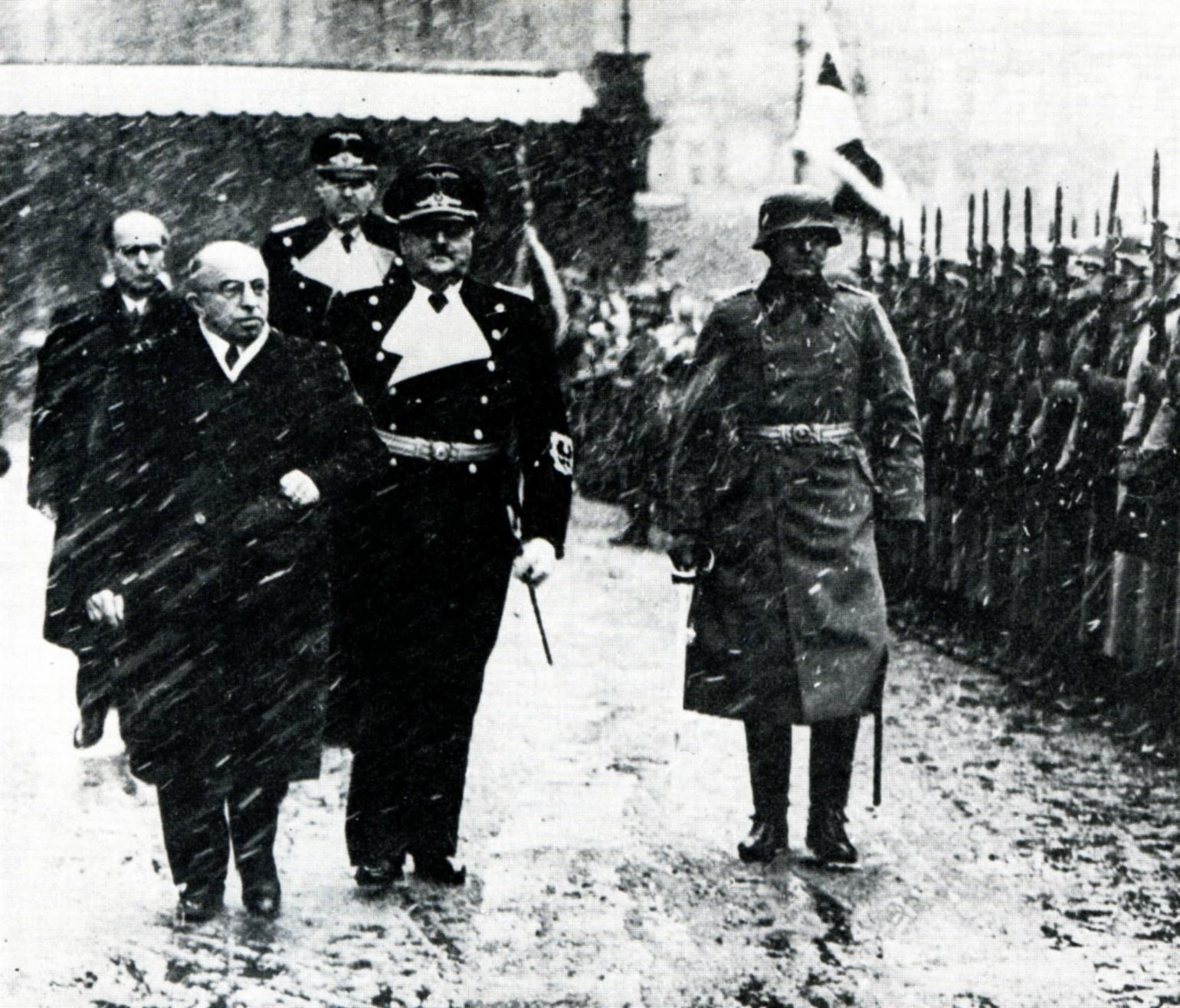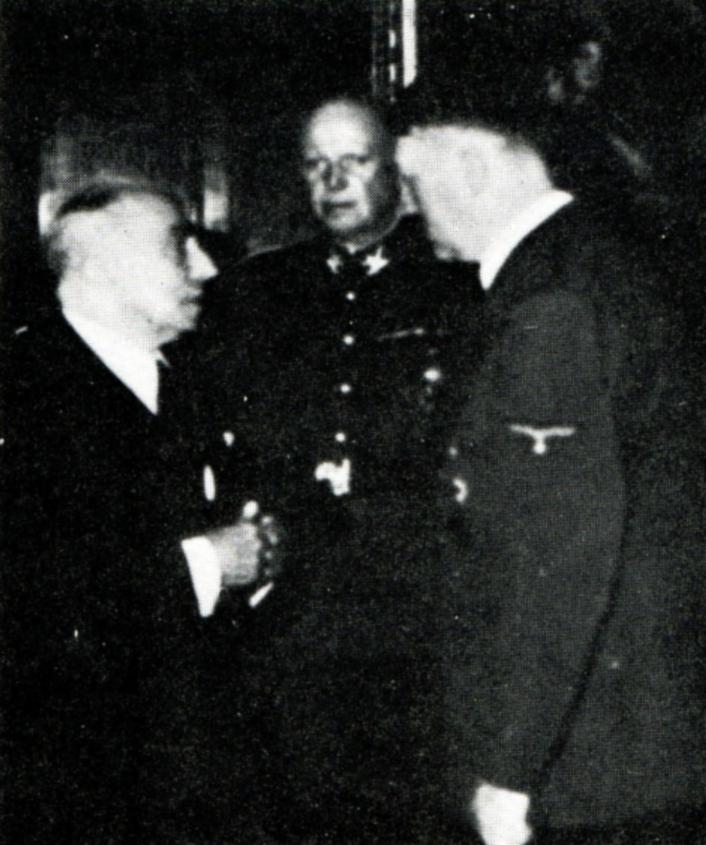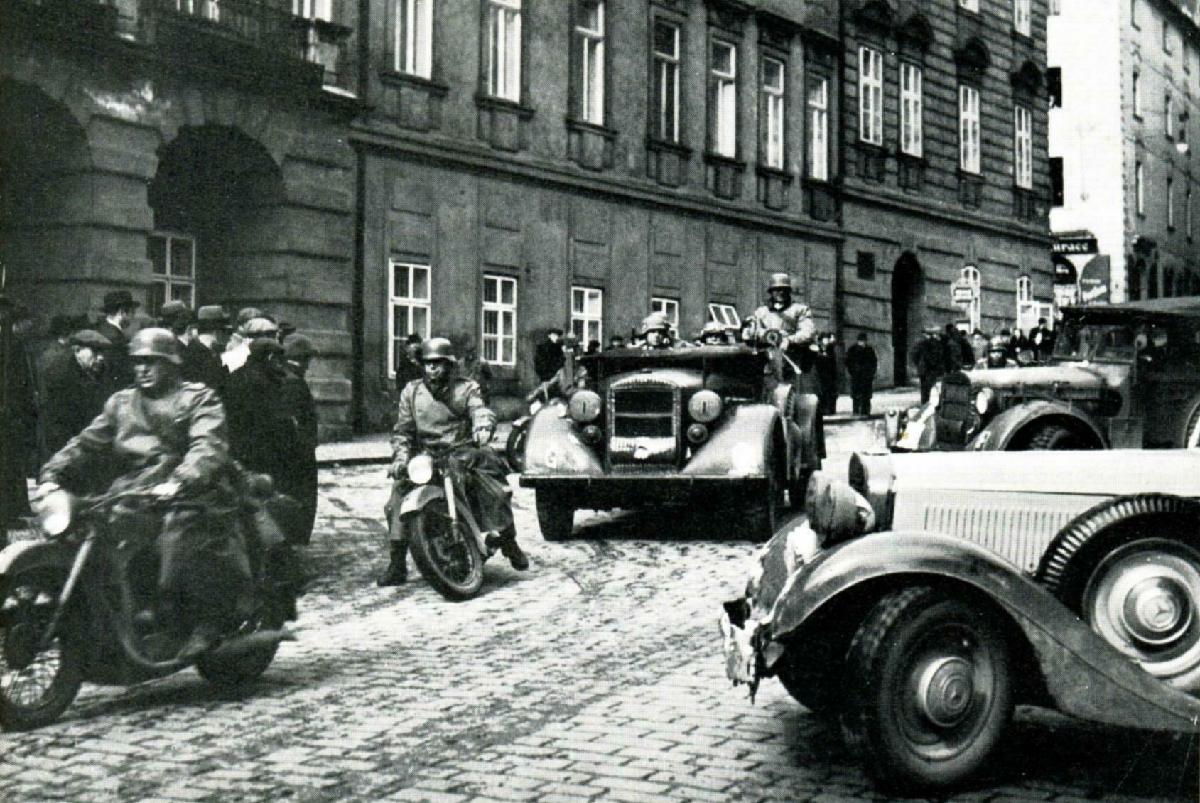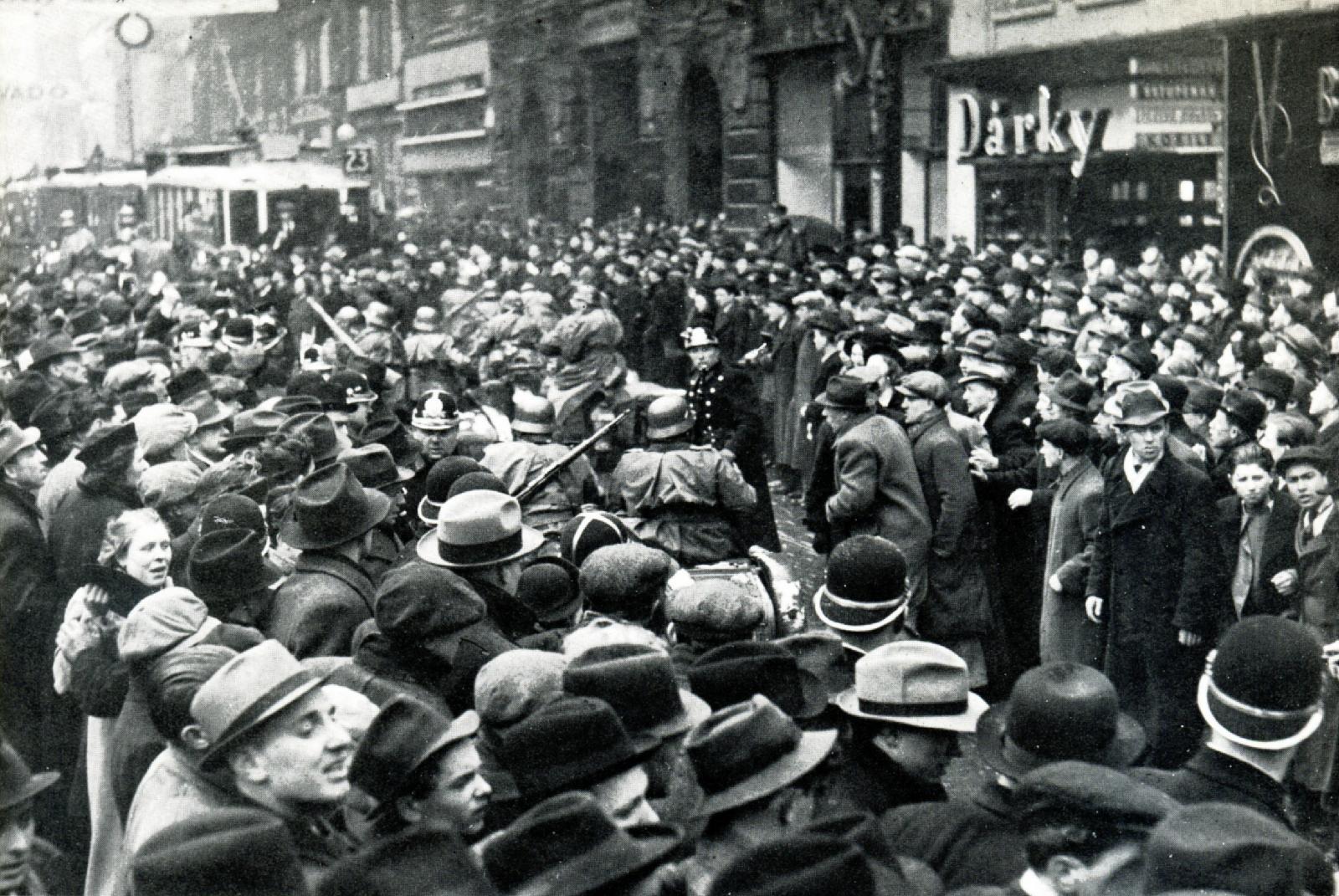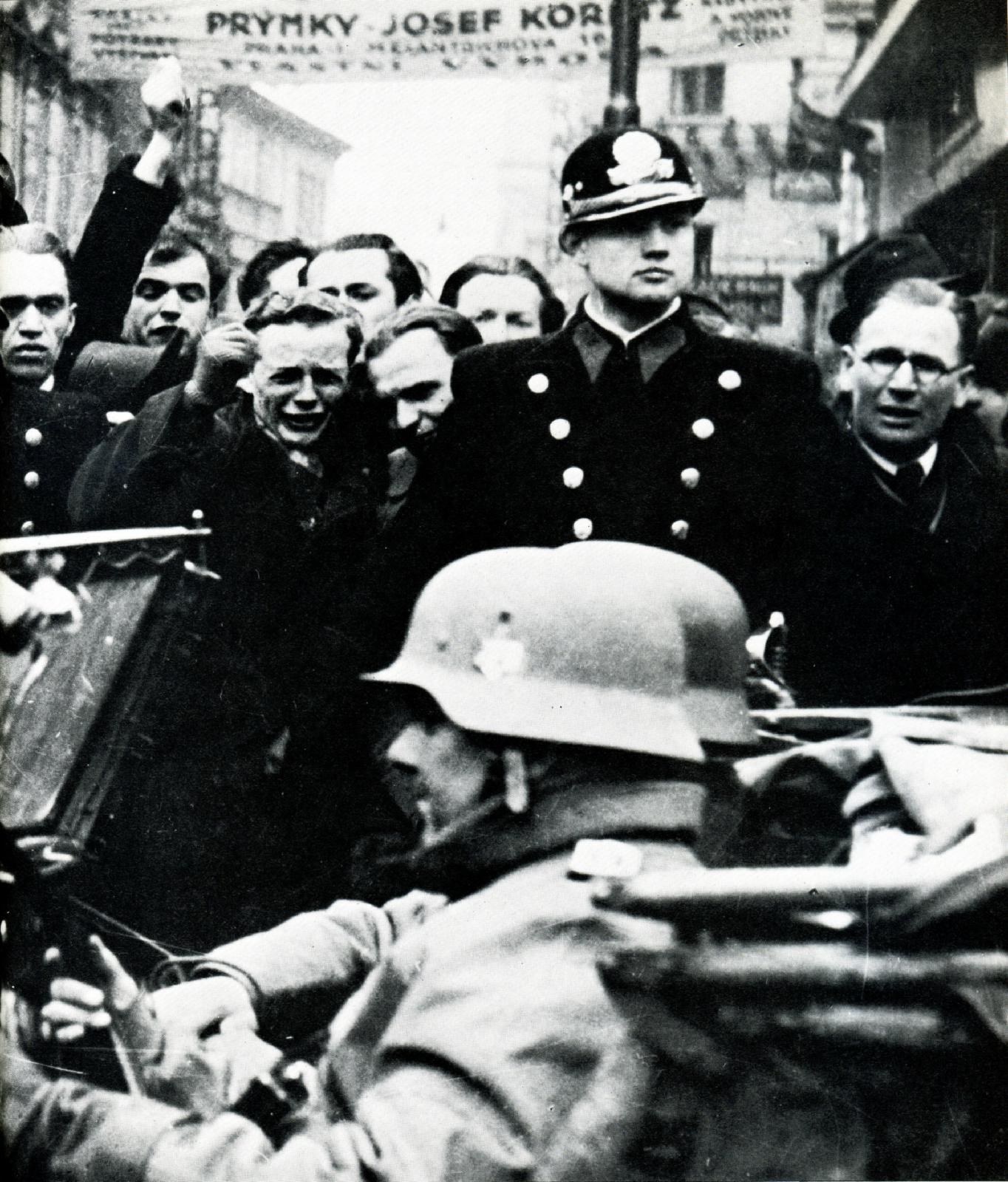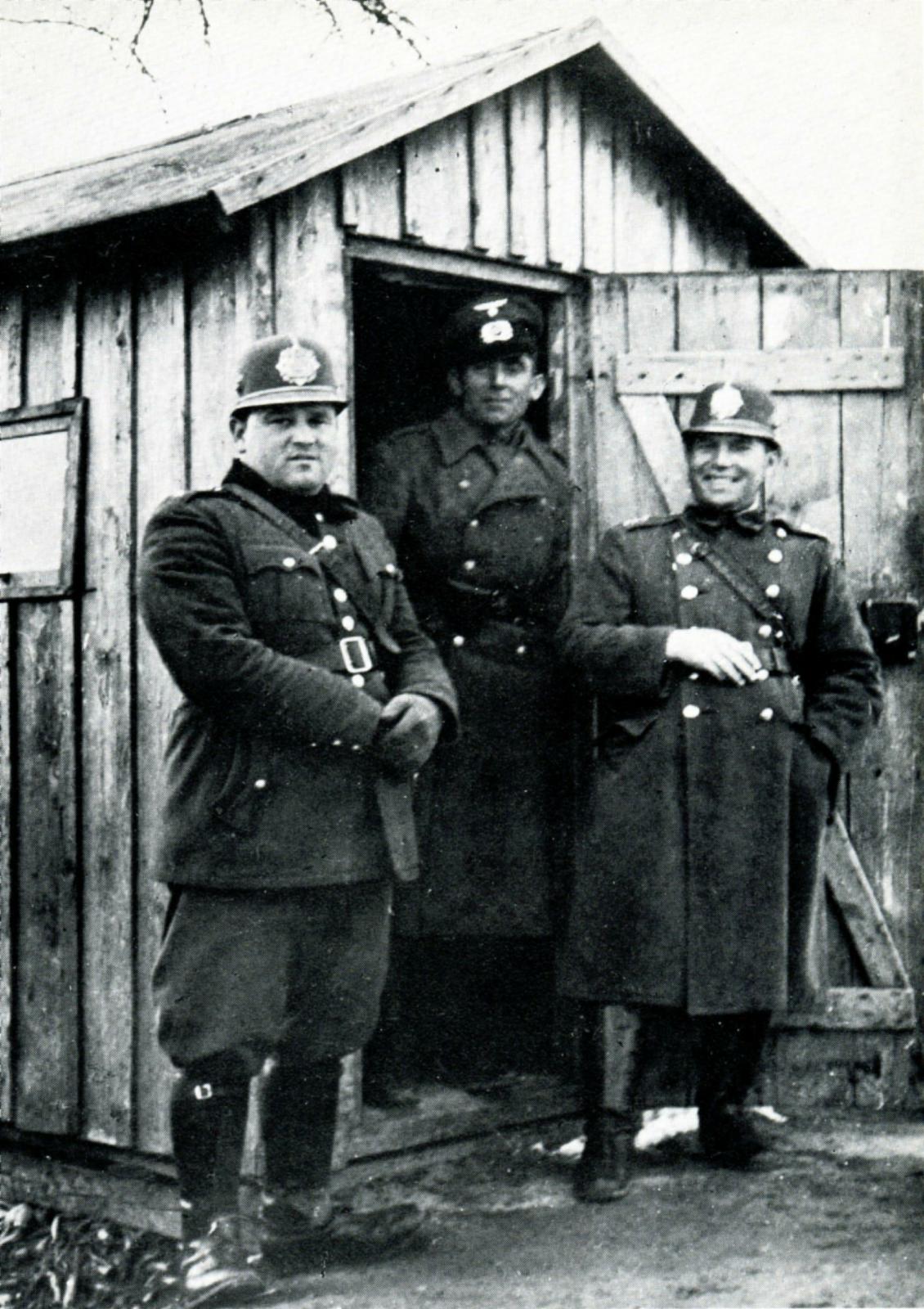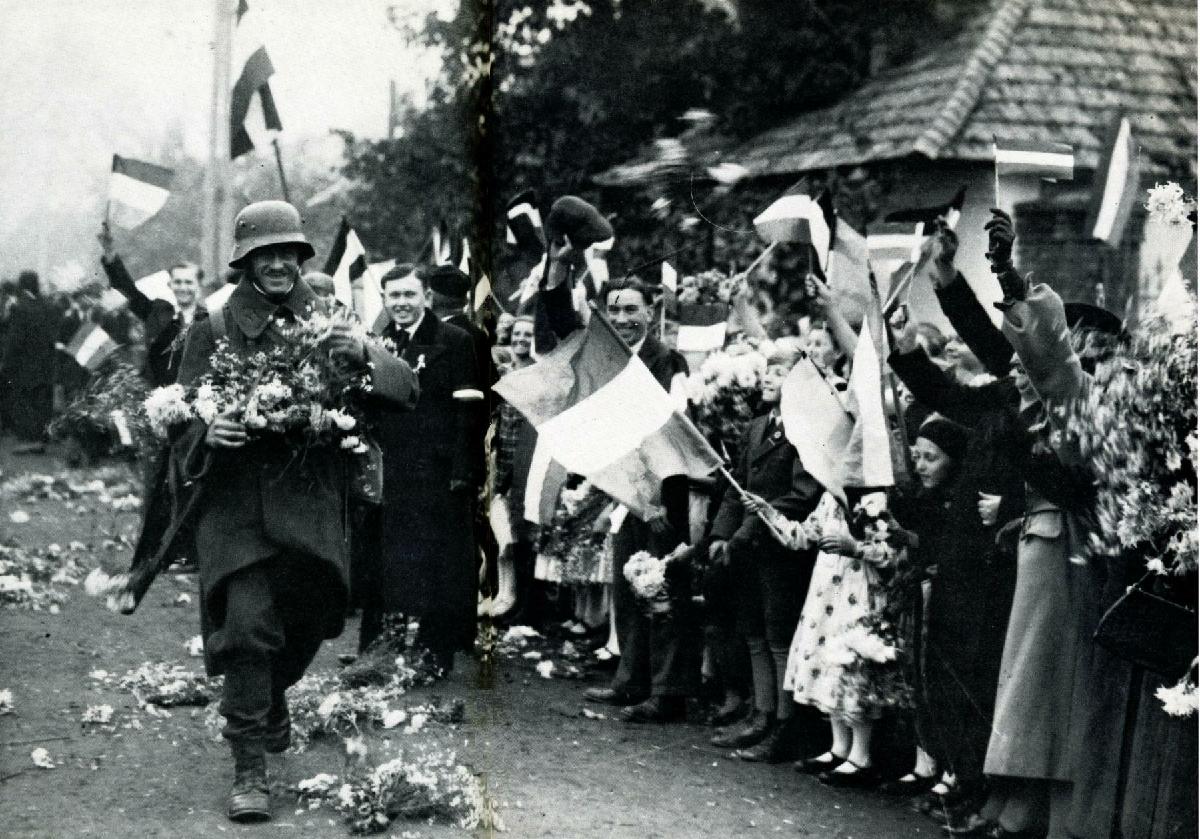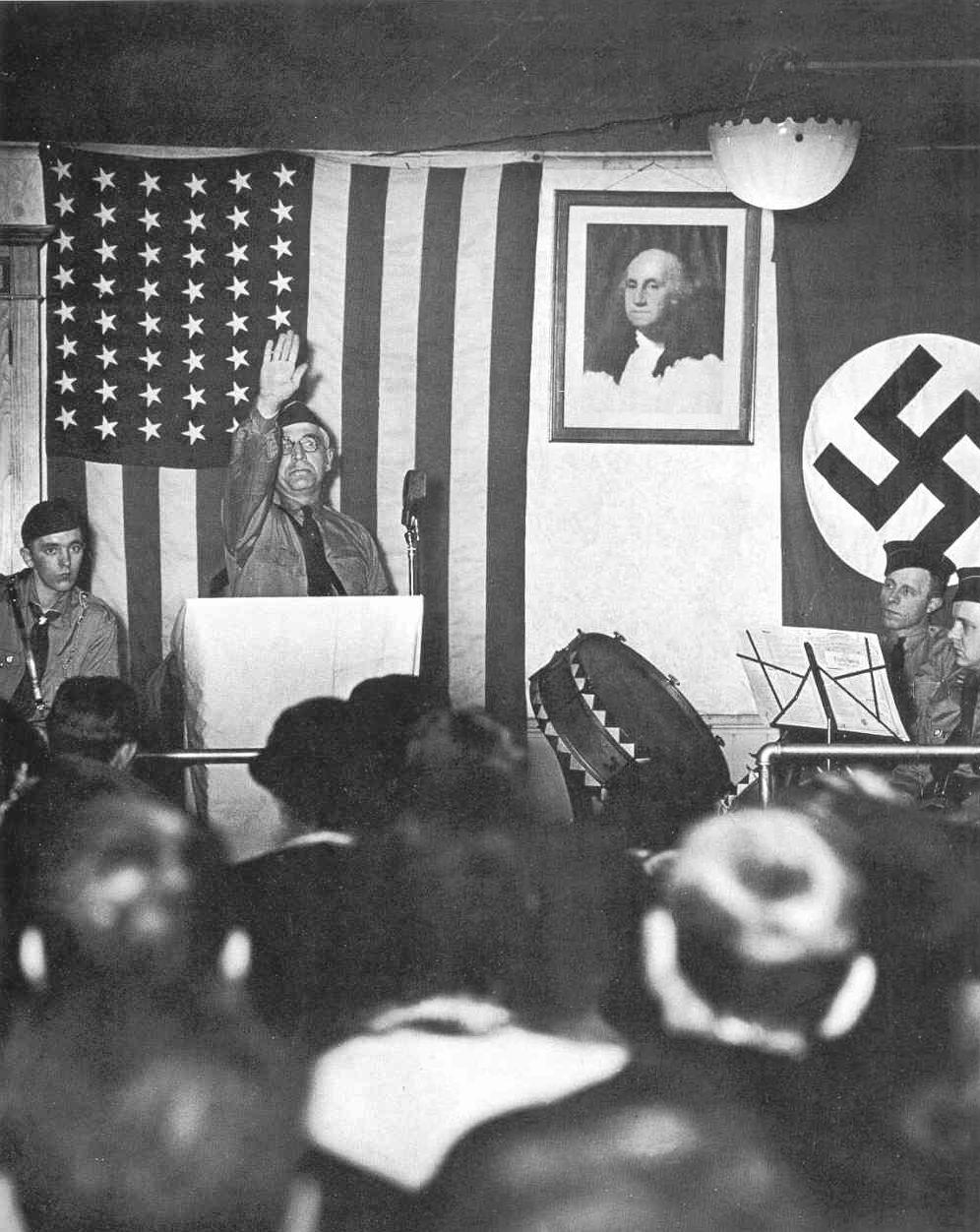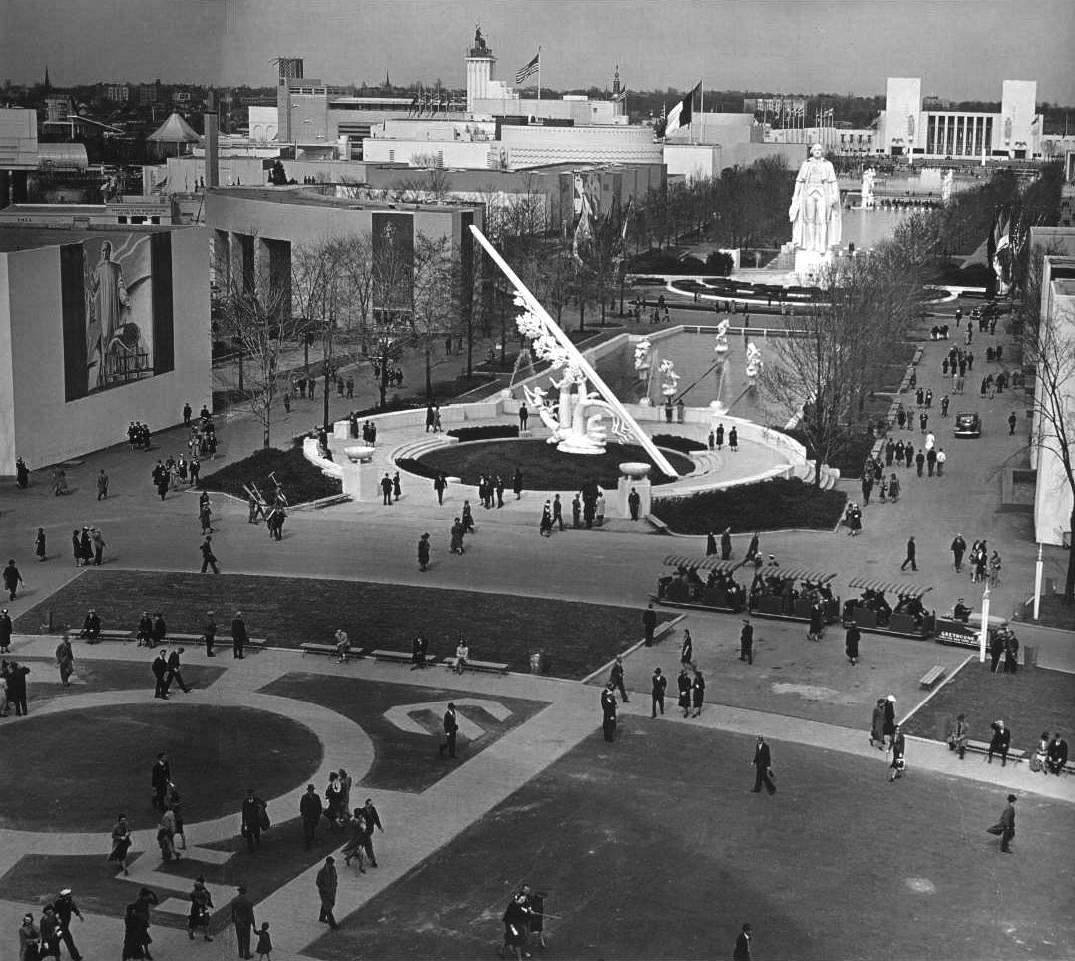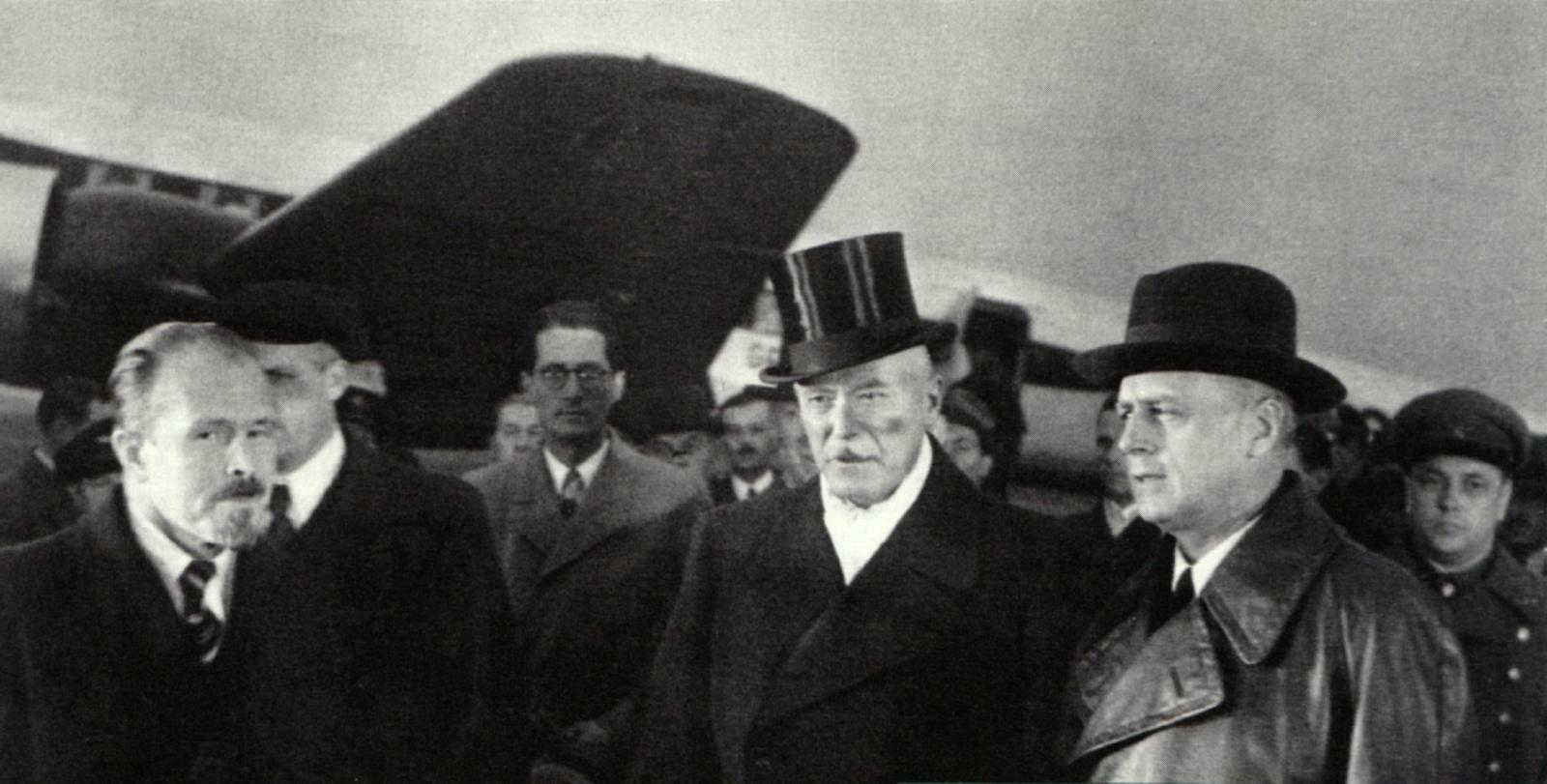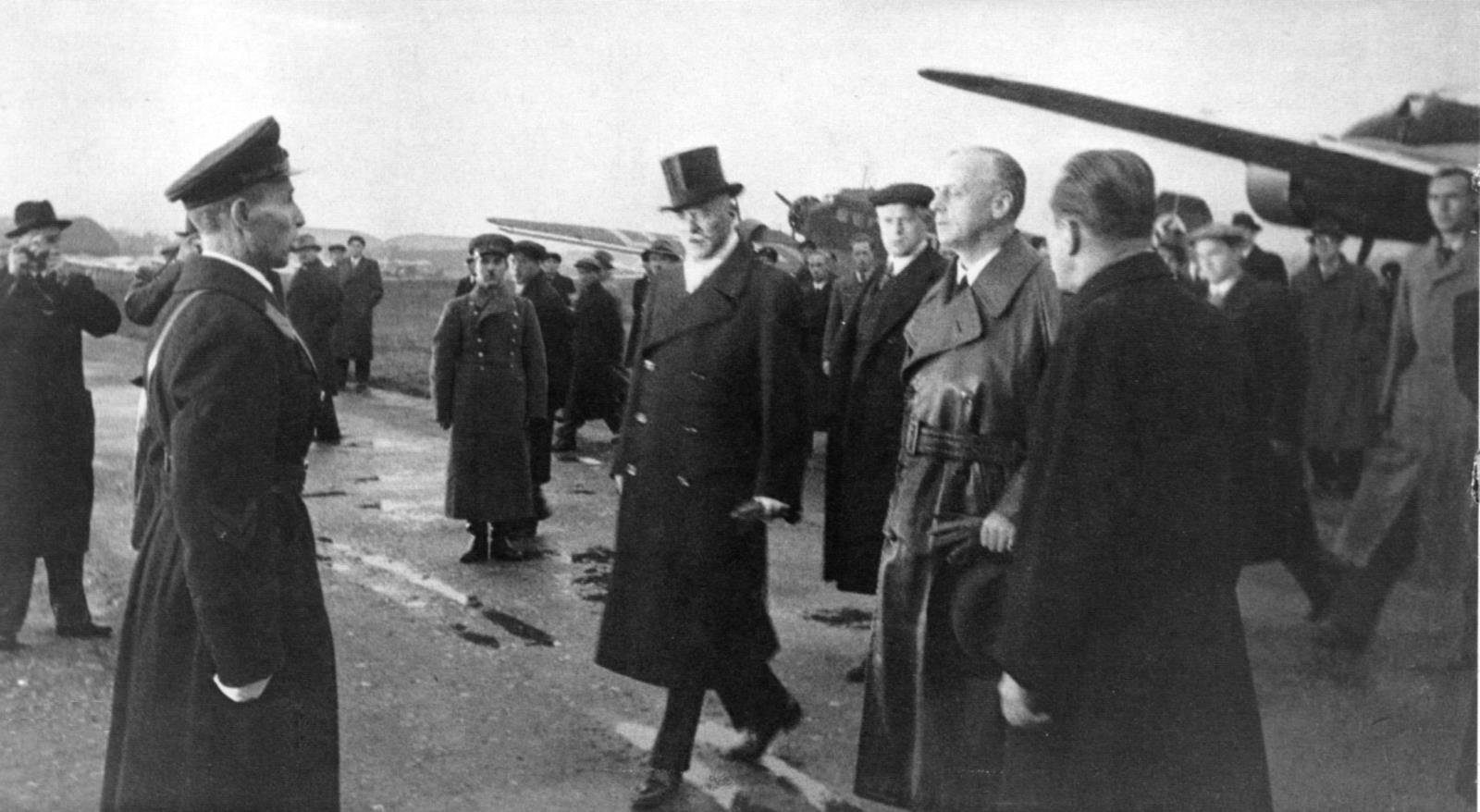16. WORLD WAR – ROUND TWO


THE STEPS TO ANOTHER WAR
 Mussolini: "war is to man as maternity is
Mussolini: "war is to man as maternity is to woman"
 The Communist-Nationalist split in
The Communist-Nationalist split in
China
 Japan invades China ... starting up
Japan invades China ... starting up
World War II (1937)
 France loses its political focus
France loses its political focus
 Britain's "appeasement" of Hitler's
Britain's "appeasement" of Hitler's
Germany
 The German Anschluss with Austria
The German Anschluss with Austria
 Hitler is awarded Czechoslovakia's
Hitler is awarded Czechoslovakia's
Sudetenland
 Hitler's attack on the Jews intensifies
Hitler's attack on the Jews intensifies
("Kristalnacht")
 Hitler grabs the rest of Czechoslovakia
Hitler grabs the rest of Czechoslovakia
 Meanwhile, America retreats into a deep
Meanwhile, America retreats into a deep
spirit of isolationism
 The dictatorial front against democracy
The dictatorial front against democracy
is fortified (1939)
 The Molotov-Ribbentrop Pact (August
The Molotov-Ribbentrop Pact (August
23, 1939)
The textual material on page below is drawn directly from my work
A Moral History of Western Society © 2024, Volume Two, pages 154-161 ... although the page below generally goes into much greater detail.
MUSSOLINI: "WAR IS TO MAN AS MATERNITY IS TO WOMAN" |
| Actually,
the clouds of another terrible war had been gathering even before the
Spanish civil war broke out. On a number of fronts, because of
events developing there, it appeared increasingly that there was no way
the West was going to be able to escape another horrifying conflict. Mussolini and Ethiopia
All the way back in the mid-1930s, Mussolini found himself ruling over an Italian society growing critical of his overextended political regime. Given his strongman mindset, he concluded that a foreign war of conquest would provide the impetus to restore support for his government. And Ethiopia seemed just the place to wage such a war. Ethiopia had escaped the clutches of European imperialism – and its backwardness and lack of military preparedness made it an attractive target for Mussolini. Besides, he counted on the fact that France and Britain were more concerned about having Italy as an ally against a rising Hitlerian Germany and thus would be no problem if he simply made a grab at Ethiopia. The Ethiopian Emperor Haile Selassie, seeing a huge buildup (some 300,000 troops assembling in neighboring Italian Somaliland) took his concerns to the League of Nations in mid-1935. But all he got was talk – and little else – in support of his darkening situation. Then that October, the Italians invaded Ethiopia. In response, the League responded timidly. They could have ordered the Suez Canal closed, or placed strategic industrial goods (coal, steel and oil) on an embargo list. But Mussolini was right in his expectations of a weak diplomatic response. The Europeans did not want to alienate Mussolini – and the Americans did not want to lose any oil business (America was a major oil exporter at the time). And what minor items the League did place under embargo did little – except to rally a large number of Italians more closely behind the Duce Mussolini! The Ethiopians fought guerrilla style and gave good account of themselves as warriors. But against their cousins, the Ethiopians. loyalty of many of the tribes was questionable. The Eritreans in fact gladly joined the Italians. But in December a rather bizarre event developed back in the diplomatic circles of Europe. British Foreign Minister Hoare and French Foreign Minister Laval offered Italy a secret agreement to "solve" the crisis by awarding Mussolini most of Ethiopia and leaving a small portion to Haile Selassie in concession. But the secret agreement was leaked to the press - and quickly the Hoare-Laval plan became a huge source of embarrassment to England and France; both ministers were forced to resign by outraged citizens. But the damage was done. It made the democracies look weak or irresolute and even hypocritical (especially after Hoare's well-received speech in September boasting of England's commitment to the protection of Ethiopia) – and it undermined seriously the League's appearance as guarantor of the world's peace. Not only had the League finally been proved to have no teeth – but ultimately it succeeded in driving Italy from its membership - the beginning of a flood of European departures from League membership. Within seven months the Italians had worn the Ethiopians down. On May 5, 1936 the Italians entered the capital, Addis Ababa - and Italy declared itself victor. "It is us today, it will be you tomorrow"
The League of Nations was moving toward recognized Italy's acquisition of Ethiopia – causing Haile Selassie to go directly to Geneva at the end of June to protest. There he detailed the course of the war (at that point lost) and called for justice. But he received no help from the League. He warned them of the dangers of failure to act against such aggression. But instead, the League called off the sanctions against Italy two weeks later. Actually the Ethiopian guerrilla fighting never really ceased over the next five years, taking a toll in Italian lives larger than the war itself. |
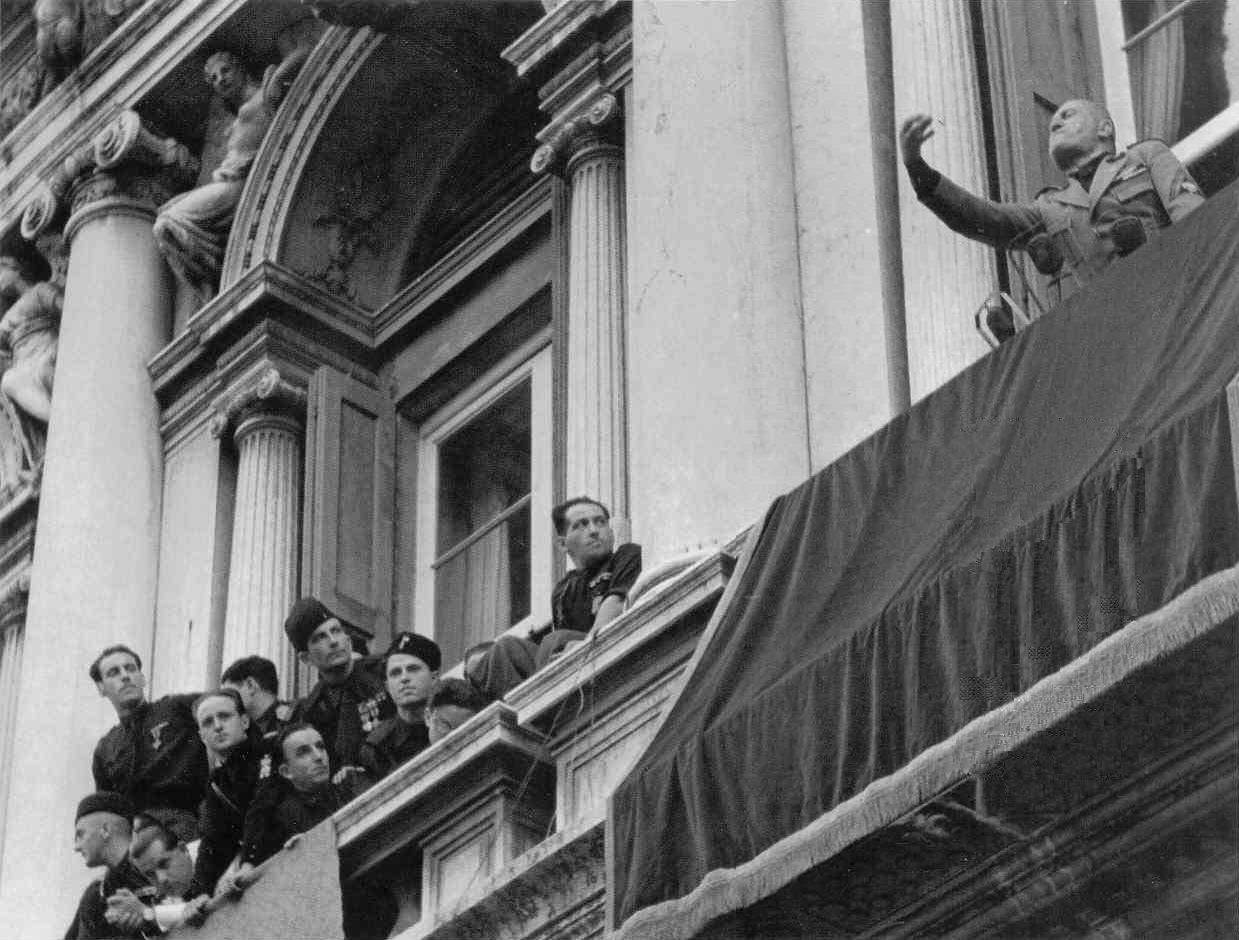
Baron Pompeo Aloisi (Italy's League Ambassador), Pierre Laval (French Premier), and Sir Samuel Hoare (British Foreign Secretary)
Their secret plan to carve
up Ethiopia (most of it going to Italy) was exposed and widely denounced. It also indicated the total
worthlessness of the League of Nations as a guarantor of peace.
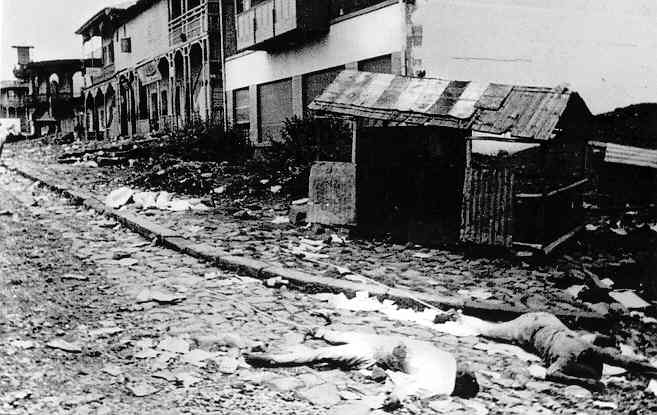
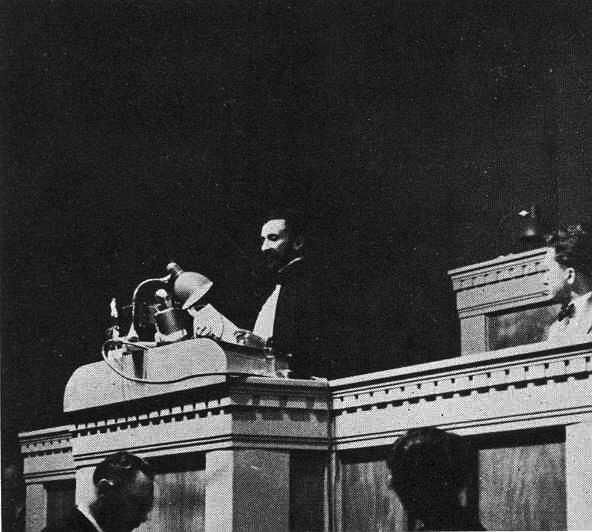
|
Ethiopian Emperor
Haile Selassie
on June 30, 1936 at the League of Nations, detailing the course of the
war (at that point lost) and calling for justice.
|
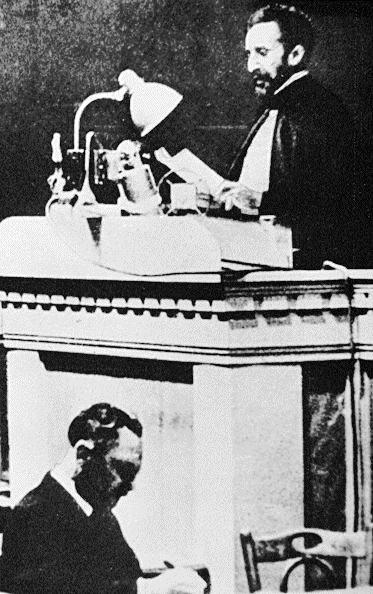
The guerrilla war continued through May 1941, when Haile Selassie returned from exile to Ethiopia in triumph.
Ethiopian troops returning
to Ethiopia as World War Two breaks out
PROBLEMS DEVELOPING IN INDIA |
|
The
Muslim community in India had not joined Gandhi's salt march ... and in
various parts of India Hindus attacked Muslims in anger. Gandhi
had also made a move to bridge the caste system by eulogizing the
Untouchables as Harijan (children of God) ... only to have the
political leader of the Untouchable community B.R. Ambedkar accuse
Gandhi of paternalism in making the Untouchables appear as children
unable to care for themselves. Then Gandhi resigned from the Indian National Congress, turning leadership over to Jawaharlal Nehru who was more open to the admission of Indian intellectuals (including socialists and communists) into the party ranks. Soon a clash arose with Subhas Bose, elected Congress's president in 1938, a strong militant who disagreed strongly with Gandhi’s non-violent strategy. When he was reelected in 1939 many of Congress’ leaders resigned in protest over his militancy ... this then causing Bose to resign. At this point Bose was becoming a strong supporter of Japanese and German fascism. |
British mounted police charge
a Calcutta crowd commemorating an earlier
call to independence from Britain – further fueling the fire
of Gandhi's "Quit India" campaign – January 1931
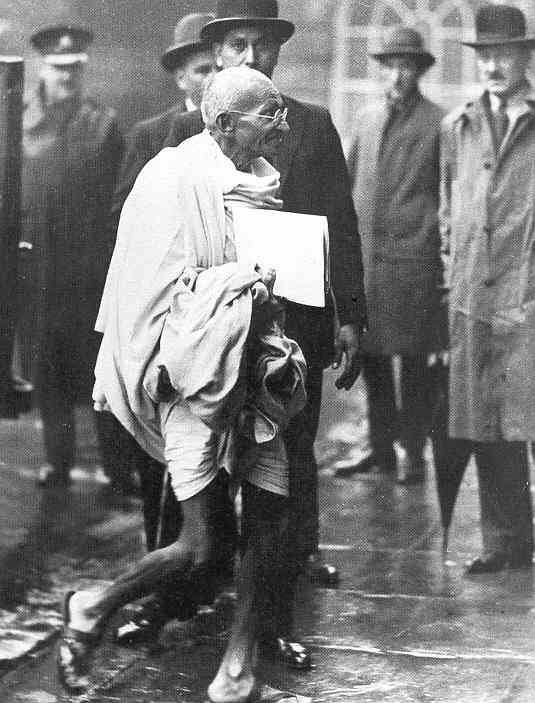
Gandhi arrives at Buckingham Palace for tea with King George V - 1931 (very theatrical for a man who was once a well-dressed British lawyer!)
Mayo College was opened by the British Government in 1875 at Ajmer, Rajputana to educate Rajput princes and other nobles. Pratap Singh - from personal family collection
JAPANESE IMPERIALISM IN ASIA |
| Japan
had chosen the side of England and France in the Great War – which
involved in Asia simply the Japanese military seizing German colonial
territories in the Far East (mostly islands in the Pacific). It
had also joined its allies in their intervention in the Russian civil
war (acting in the Russian Far East) – and was the last of the allies
to leave Russia (1925), although Japan continued to occupy the Russian
zone of Outer Manchuria and the whole of the island of Sakhalin (with
its extensive oil resources) off the Russian Siberian coast. From all outward appearances Japan was eager to present itself to the world as a modern constitutional democracy ... except that there were large elements of Japanese society – especially within the military – that resented deeply the intrusion of Western ways. This group looked back to the ancient days of Japanese honor – in particular to their ancient military ethic of bushido and their ancient religion of State Shinto involving total devotion to the Emperor. Like the Fascists and Nazis in Europe, these Japanese militarists had nothing but scorn for democracy and the rising trend of secular humanism with its dreams of global peace through human reason. They were particularly furious at the way their Japanese government gave in to the Western move to general disarmament ... agreeing to deep cuts in the Japanese army and navy But then with the onset of the Depression and the obvious weakness of the Western democracies in dealing with the crisis, the militarists grew bolder in their politics. They wanted action, they wanted honor, they wanted dominion. And they were going to go after it ... no matter what the policy was of the official government. In this they seemed to have the silent support of the Emperor. The Manchurian incident (1931)
The prime target in their hunger for dominion was China. In theory Japan was the overseer of the League of Nations mandate of Chinese Manchuria and responsible for readying the area for the responsibilities of democracy. But the Japanese military stationed in Manchuria had bigger plans. Using a small incident (probably set up by the Japanese themselves) in 1931 of an explosion along tracks of the Manchurian railroad as an excuse, they took over directly the whole of the province, claiming that the Chinese had proven themselves incapable of guaranteeing the safety of the Japanese administrators. They then converted Manchuria into a puppet state of Manchukuo ... causing the Chinese to take their case to the League of Nations. The League decided in favor of China ... but the Japanese simply at that point resigned from the League. Subsequently nothing more than moral condemnation was forthcoming from the League – and the Japanese held onto their conquered Chinese territory. Cabinet government instability
Meanwhile the militarists were making their move to solidify their power in Japan. When Japanese warlord and prime-minister Giichi Tanaka tried to curb the behavior of the militarists he was dismissed by the emperor in 1929 and replaced by the civilian prime minister Osachi Hamaguchi ... who also attempted to bring the militarists under control. He was seriously wounded in an assassination attempt ... but brought his party successfully through a new election in 1931 and then stepped down from office, dying soon thereafter. Thereafter Japanese prime ministers and their cabinets rose and fell in rapid succession, including Inukai Tsuyoshi, who would be the last civilian prime minister ... and who was assassinated by the militarists in May of 1932. From 1932 to 1934 the Japanese prime minister was a Japanese admiral Makoto Saito... who was something of a compromise "moderate" military man ... but whose cabinet was brought down in a bribery scandal. He was replaced in 1934 by another admiral and another compromise "moderate" Okada Keisuke ... until he was nearly assassinated in an militarist plot of February 26, 1936 (Saito, still serving on the cabinet was however assassinated) ... at which point the whole cabinet resigned. The subsequent trials of the young officers involved in the plot ended the period of "government by assassination" but brought the Japanese army into more complete control of the ‘civilian’ governments that followed. |
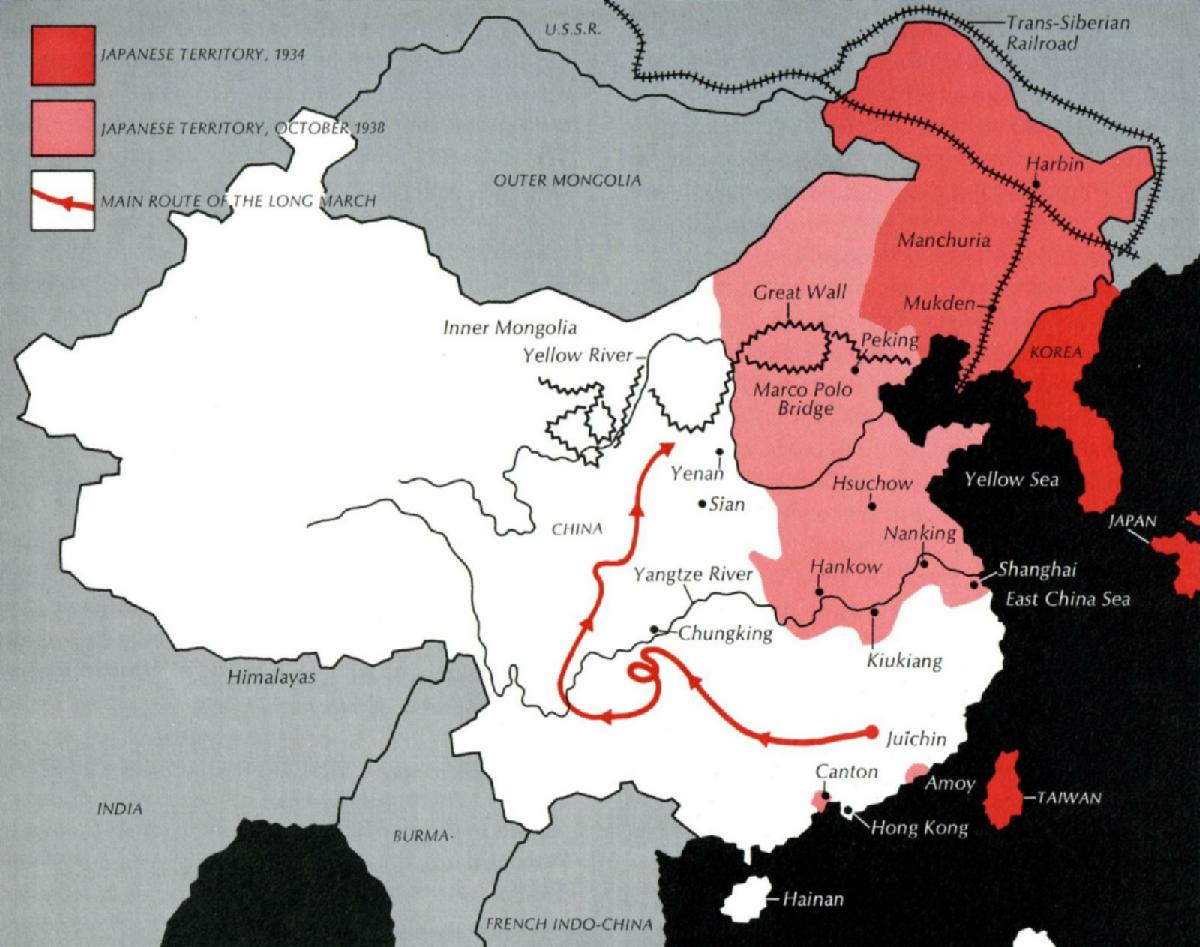
Japanese warlord Giichi Tanaka;
also Japanese Prime Minister 1927-1929. He tried to curb the ambitions
of the Japanese military in northern China – and was dismissed by the
Emperor in 1929
National Diet Library, Japan
| He led a largely civilian-dominated cabinet -- and succeeded in putting through to ratification the treaty of the London Naval Conference of 1930 -- which put tight limits on the size of the Japanese navy. His policies to tighten the reigns on the Japanese economy backfired with the onset of the global economic Depression. As a result he became the target for political attacks coming from the increasingly radical right-wing of the Japanese military. He escaped an assassination attempt with serious wounds and following a successful reelection of his party in 1931 stepped down from office. He died soon thereafter. |
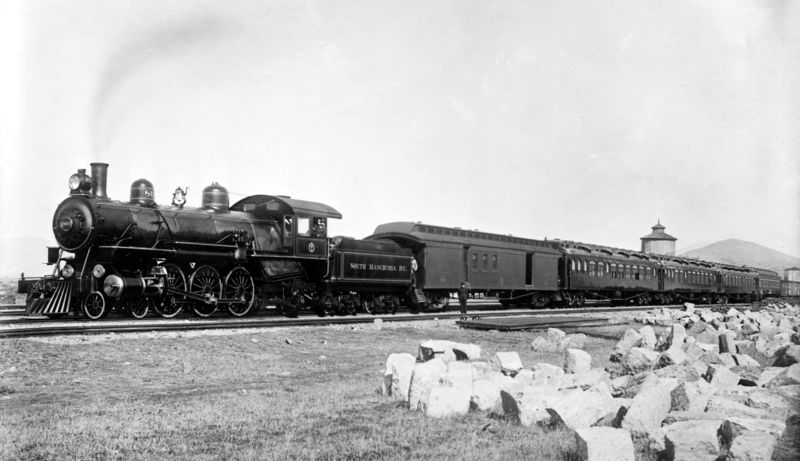
A South Manchuria Railroad
train, September 18, 1931. Someone (probably
Japanese junior officers) blew up a section of Japan's South Manchuria Railway
track – giving the Japanese an excuse to take over Manchuria
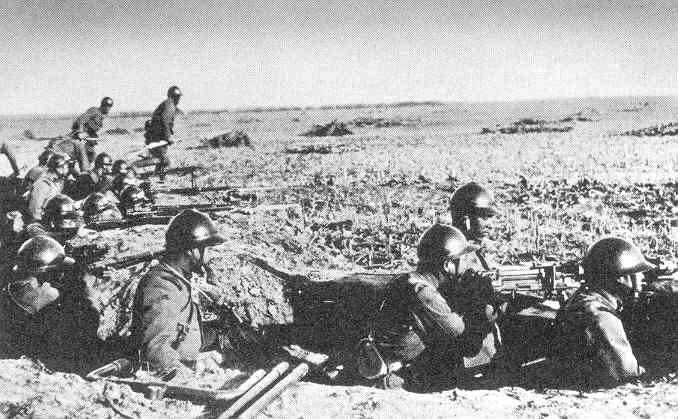
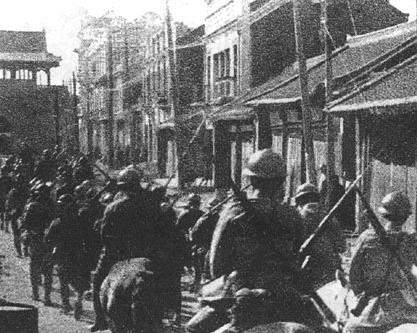
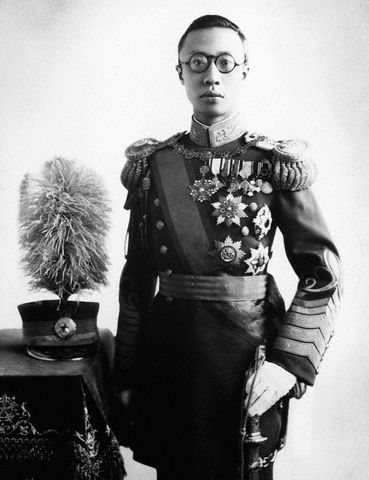
Puyi - "Emperor" of
Manchukuo. The Japanese installed Puyi, the
last Emperor of the Manchu Qing Dynasty, as chief executive in 1932; in 1934 he was
renamed "Emperor" of Japanese-controlled Manchukuo
National Diet Library
| During his second time in office as Prime Minister (April-December 1931) he failed to hold the Japanese military in check in the Manchurian incident and resigned after only 8 months in office. |
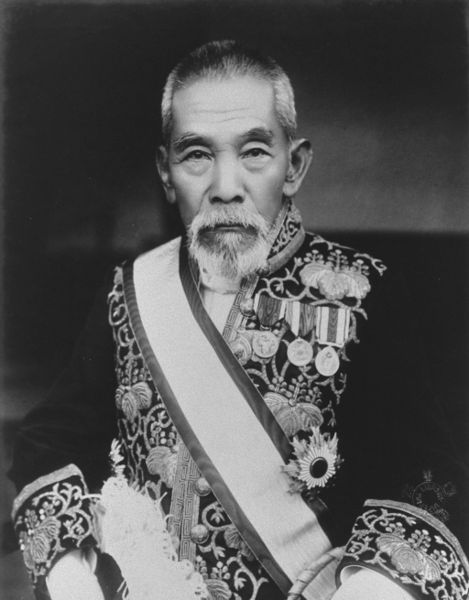
National Diet Library, Japan
| Inukai was assassinated in a failed military coup undertaken by radical elements of the Japanese Navy and Army – intending a "Showa Restoration" designed to give the Showa Emperor full power in replacement of the Japanese Diet and democracy. Inukai's rule would be the last of the civilian line of prime ministers; subsequently Japan would be led by key military figures (not all of them radical militarists, however). |
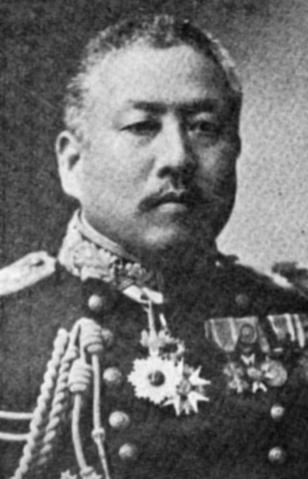
Japanese Prime Minister Makoto
Saito - 1932-1934
| Saito was a Japanese Admiral and long-time Governor General of Japanese-controlled Korea. He was a military "moderate" and, after the assassination of Prime Minister Inukai, chosen as a compromise figure within the Japanese military in the struggle between the democratic reformers and the arch-conservative Kodoha faction. He served until a bribery scandal in 1934 brought down his cabinet; he served in the next cabinet of Okada Keisuke – until assassinated in the February 26 incident of 1936. |
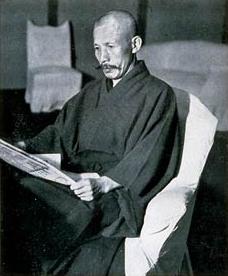
Japanese War Minister Sadao
Araki – the chief theoretician for
the Kodoha ultra-nationalist Japanese
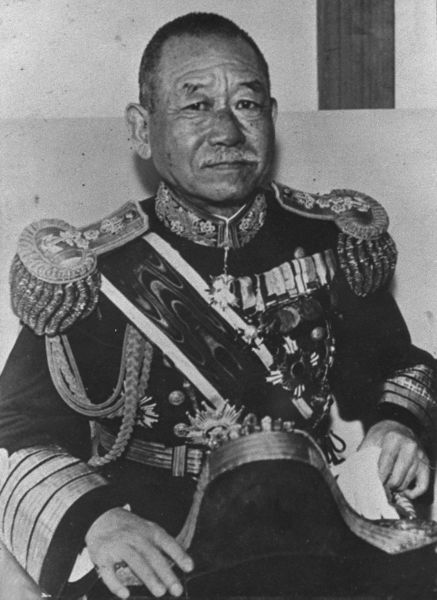
National Diet Library archives, Tokyo
THE COMMUNIST–NATIONALIST SPLIT IN CHINA |
|
Troubles in China
Meanwhile, the next target of the Japanese militarists was the heartland of China itself. At this time China was caught in a fierce civil war between Chinese Communists and Nationalists ... weakening greatly China’s ability to defend itself against the aggressive Japanese. When the "Father of Modern China" Dr. Sun Yat-sen died in 1925 there was a split within his Nationalist or Kuomintang Party between his former military commander, the young General Chiang Kai-shek (whose job was to try to curb the power of the remaining Chinese warlord regime in the north at Beijing), leftist Nationalists, and the fast-growing Communist elements in the party, heavily supported by Soviet Russian advisors ... with their political center at Wuhan. From his base in Nanjing, Chiang moved to destroy the Communist position in Shanghai (1927) and then turned on his largely Communist opponents situated in other Eastern cities in China. Only a peasant uprising in Hunan led by the Communist Mao Zedong escaped the wrath of Chiang ... and brought Mao to head up the surviving elements of the Chinese Communist Party. But Chiang merely came after Mao and his largely peasant army. Thus Mao took his army on a "Long March" (1934-1935) deep into the interior where he could rebuild his power base ... and watch at a distance as Chiang then faced a mounting Japanese challenge. At one point Chiang’s own officers kidnaped him ... and forced him to promise to give off the hunt for Mao and his Communists in the West and turn his attentions instead to the North where the Japanese were building up power rapidly (thus sparing Mao’s Communists, who probably otherwise would have been fully destroyed by the determined Chiang). |
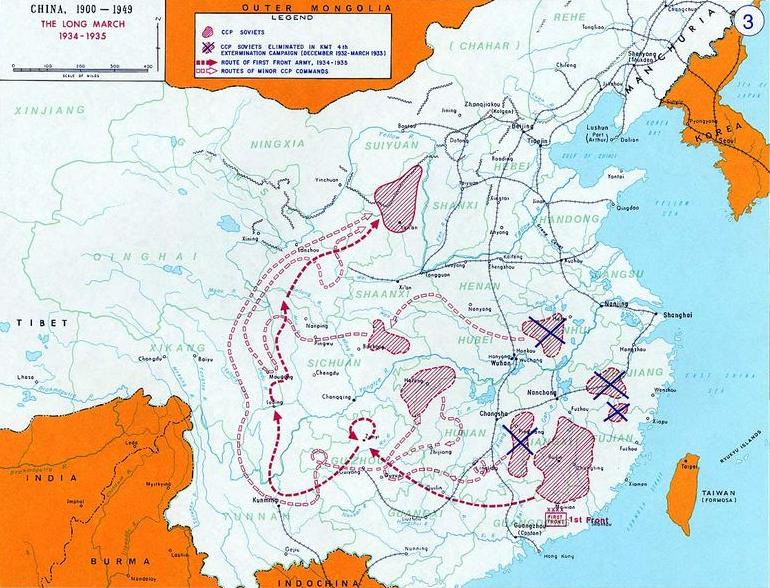
A young General Chiang Kai-shek,
who took over the Nationalist organization
(Kuomintang) after the death of Sun Yat-sen (but the Chinese Communists
also claimed to be his true successors)
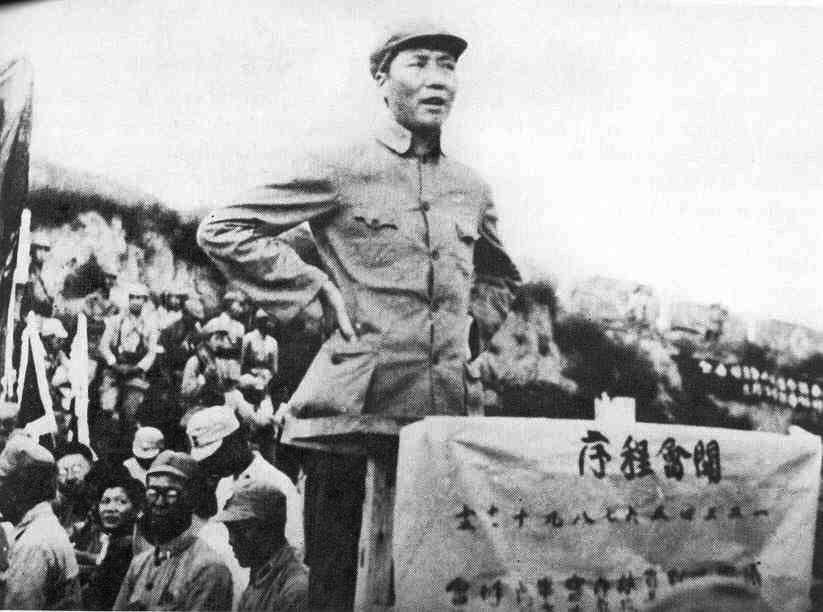
A young Mao Tse-tung builds
up a Communist military organization (here speaking to university
students at Yenan)
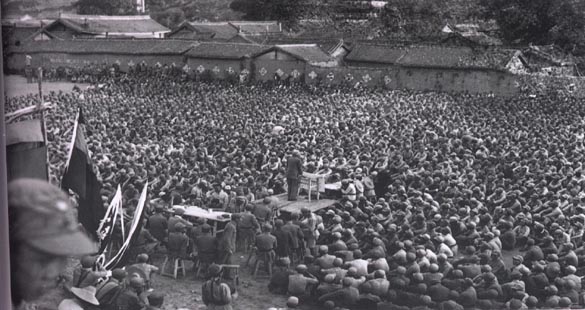
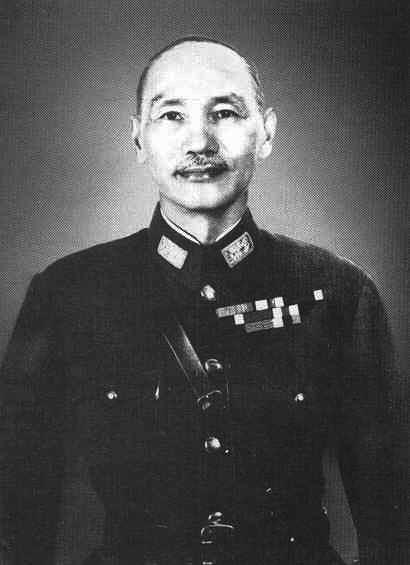
National Archives
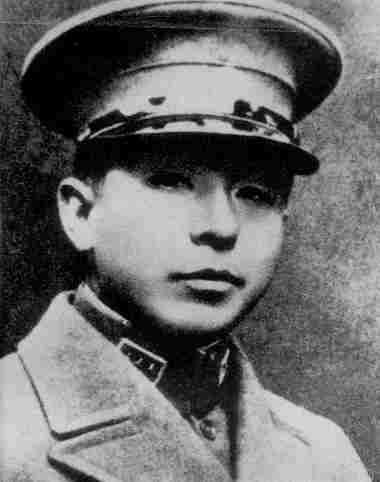
Zhang Xueliang, the "Young Marshal," partly responsible for getting Chiang and Mao to cooperate in fighting the Japanese rather than each other. He was the son of a major Manchurian warlord, but a loyal general in the Kuomintang, and unflinching in his opposition to the Japanese presence in northern China. He was a major player in the Xi'an incident and put under house arrest afterwards by Chiang (he was later transferred to Taiwan and remained under house arrest until 1990.)
JAPAN INVADES CHINA ... STARTING UP WORLD WAR II (1937) |
|
The Sino-Japanese War erupts
The long-anticipated war with Japan finally erupted at the Lugou Bridge when Chiang’s troops refused to allow Japanese soldiers cross into China in pursuit of a missing soldier. Shooting resulted and thus both sides rushed additional soldier to the site ... turning the event into the first battle of an eight-year war. Finally the Japanese had what they wanted ... a grand opportunity to prove themselves as great warriors ... and they invaded China, destroying and killing as they went. The Nationalist army seemed to be no match for these bushido warriors who held the Chinese population in such contempt that they beheaded and bayonetted for military practice hundreds of thousands (eventually millions) as they went. From August to November (1937) they bombed and burned out neighborhood after neighborhood of Shanghai and then turned on the Chinese capital at Nanjing (or Nanking as it was written then). There they conducted the "Rape of Nanjing" ... as many as 300,000 civilians executed over a six-week period at the end of 1937. But at this point the Japanese had become overconfident of their military prowess and were drawn into a Chinese encirclement in the city of Tai'erzhuang (March-April 1938). The Japanese were ultimately able to escape after large losses. But this defeat (which the Japanese at first denied even took place) caused a crisis within the Japanese cabinet, broke the myth of Japanese invincibility, and stirred a new Chinese military spirit. After this setback the Japanese continued to advance against China, taking Xuzhou in May and, with 300 thousand more Japanese troops brought to China in June, Wuhan in October. But from this point on the Japanese were largely forced to dig in and hold what they had so far acquired of Chinese territory (mostly in the Chinese northeast and at various points along the Chinese seacoast. But the war would drag on for another seven years in China ... as a major piece of the huge World War Two soon to unfold. The Japanese tried to attack the Soviet Union from their position in Manchuria ... but were humiliated in their defeat at Khalkhin Gol (May-August 1939) at the hands of Soviet General Georgy Zhukov. This stopped further Japanese movement in this direction. Then in April of 1941 Japan and Russia signed a neutrality pact .. which would hold until four years later. |
The "Luokuochiao Incident" of July 7, 1937. When the KMT army refused to allow Japanese troops to cross the bridge in search of a missing soldier, shooting broke out between the Japanese and Chinese – as the first blow of the war
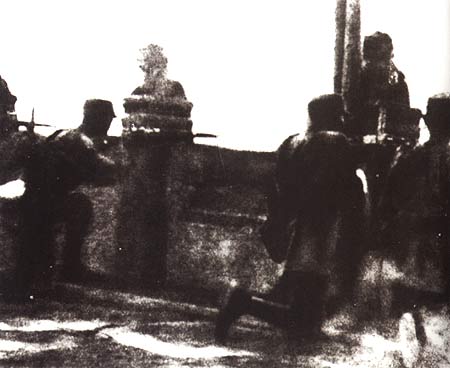
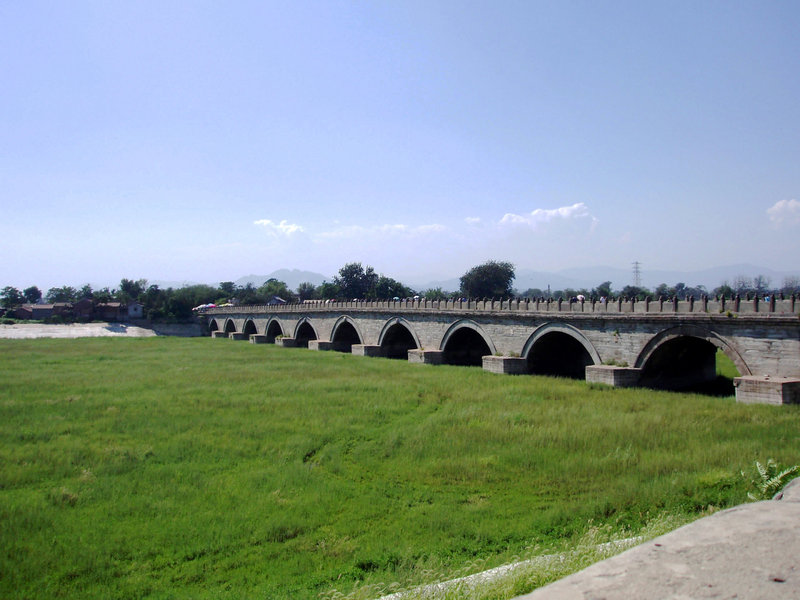
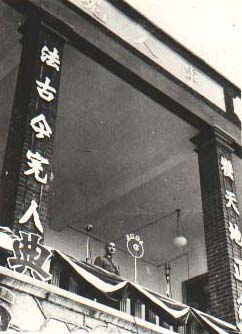
Chiang Kai-shek (Jiangjieshi)
announcing the KMT's policy of resistance against Japan at Lushan on July 10, 1937, three days after the Battle
of Lugou Bridge
The Battle of Shanghai – August 13 - November 26, 1937
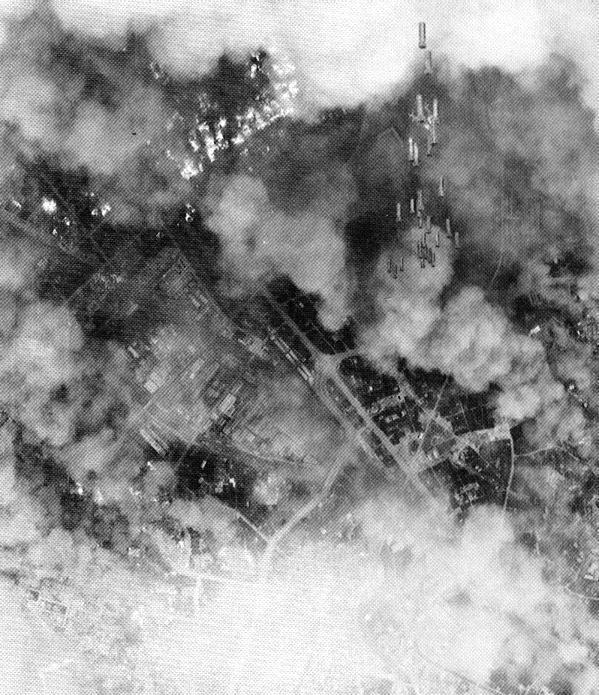
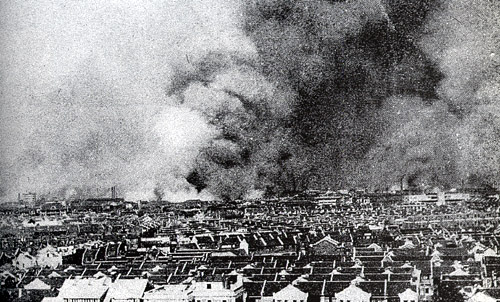
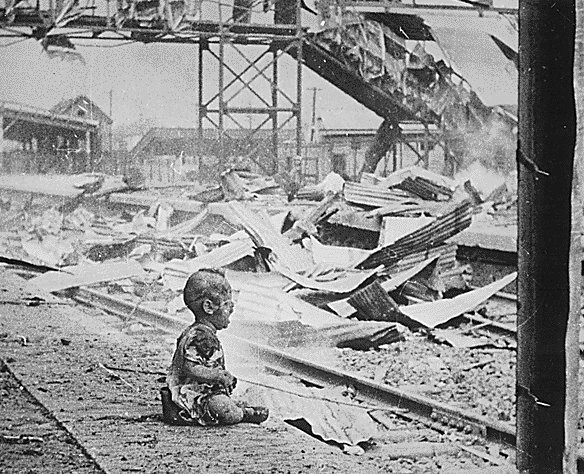
One of the last humans left
alive after intense bombing during the Japanese attack on Shanghai's South
Station. August 1937
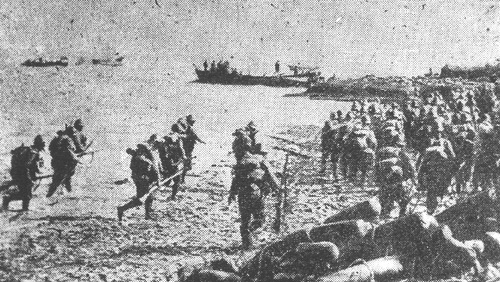
Japanese amphibious landings at Shanghai - late 1937

Chinese Nationalist machine
gun nest during the Battle of Shanghai (Sihang) - 1937
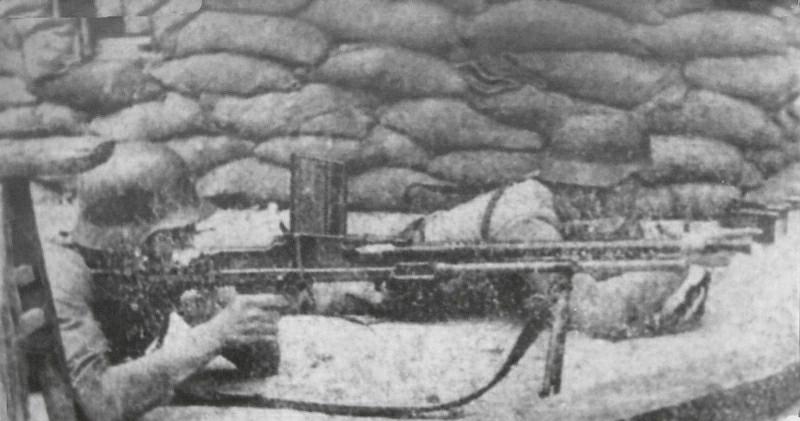
Chinese Nationalist defenders
during the Battle of Shanghai (Sihang) - 1937
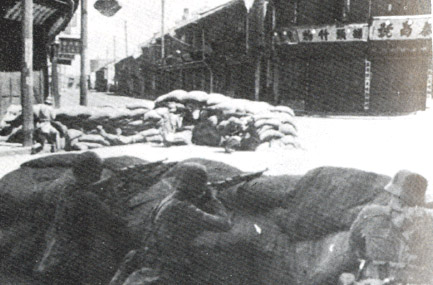
Chinese Nationalist defenders
during the Battle of Shanghai (Sihang) - 1937
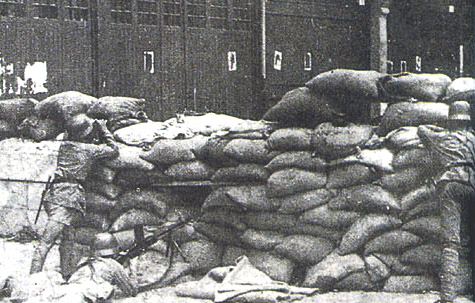
Chinese Nationalist defenders
during the Battle of Shanghai (Sihang) - 1937
A Japanese tank rolls onto
the Shanghai-Nanking railroad
Japanese soldiers in front
of a shelled Chinese school in Shanghai
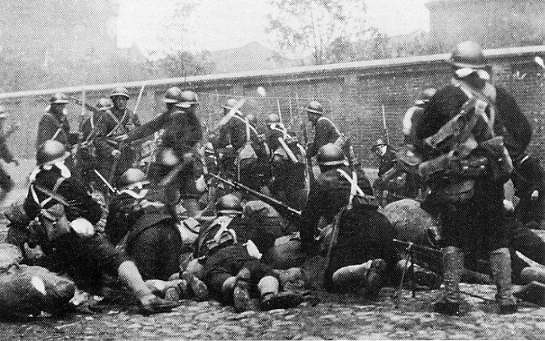
Library of Congress LC-USZ62-70043
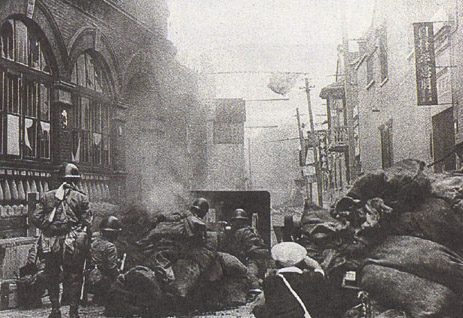
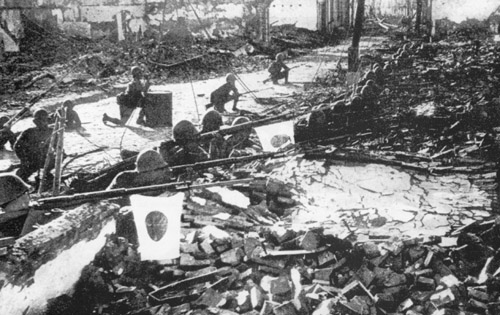
Japanese troops in the ruins
of Shanghai - 1937
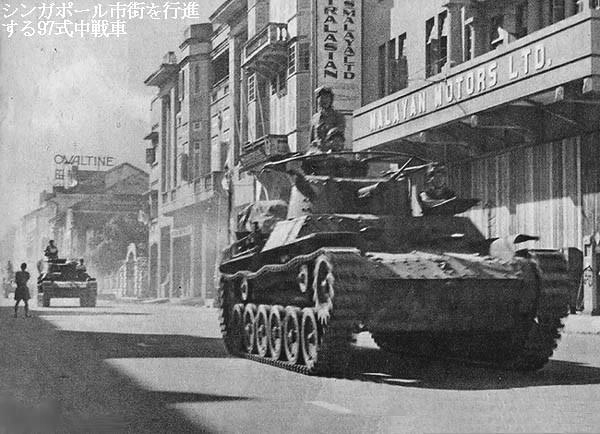
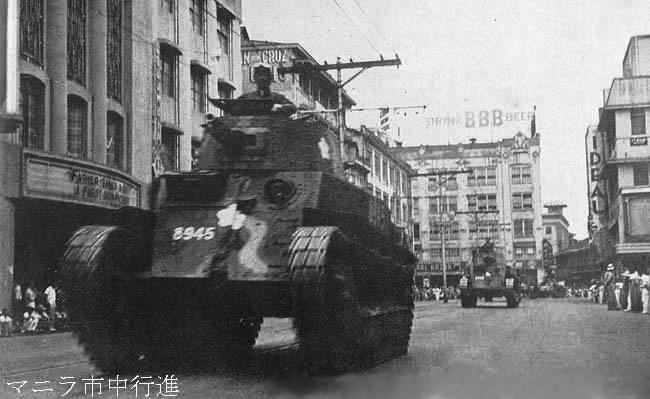
|
A frustrated Japanese army (they had not expected the level of resistance the Chinese were able to offer at Shanghai) moved on to Nanking (Nanjing) – and after quickly overruning that city in mid-December, vented their wrath by raping and slaughtering its population -- continuously over the course of six weeks |
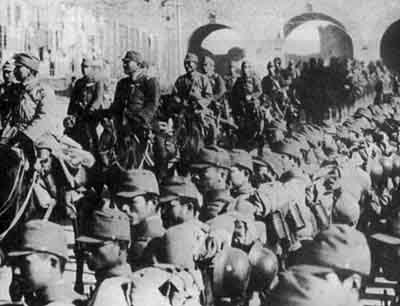
Princeton University - "Nanking 1937"
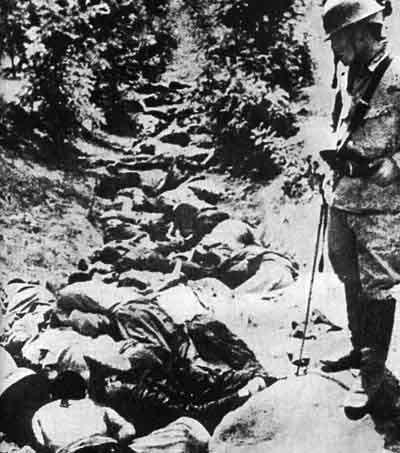
Nanking 1937: “Ten Thousand
Corpse Ditch”, where bodies of mass execution victims were
dumped. As many as 300,000 unarmed
civilians may have been executed over a 6-week period – though the numbers are hotly
debated between the Japanese and Chinese even today.
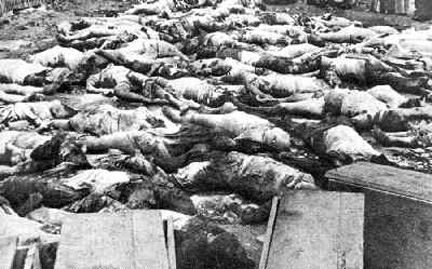
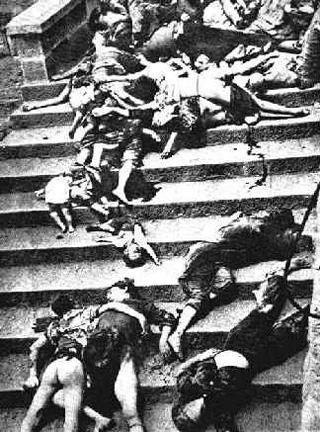
Chinese women and children
trampled underfoot by panicking Chinese trying to escape
Japanese troops
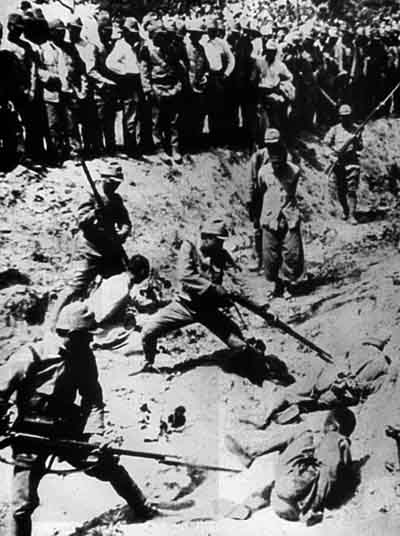
Princeton University - "Nanking 1937"
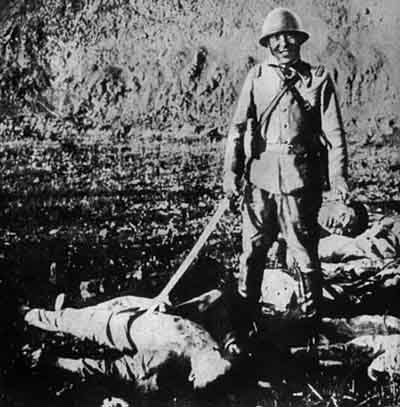
Princeton University - "Nanking 1937"
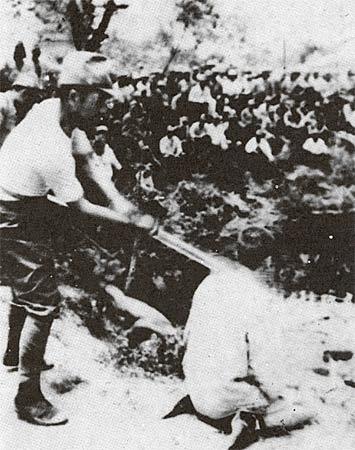
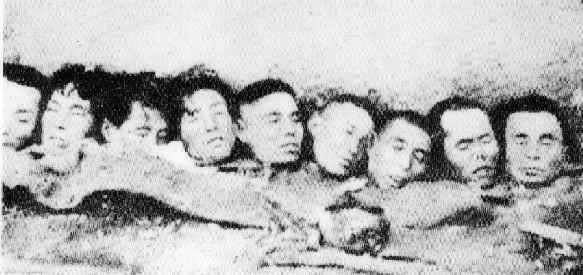
(temporary Chinese capital after the fall of Nanking)
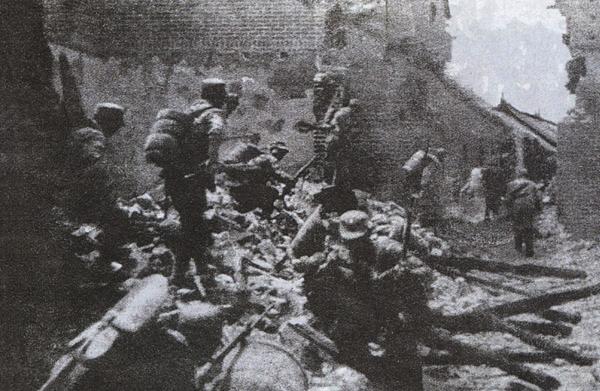
| The Japanese had become overconfident of their military prowess and were drawn into a Chinese encirclement in the city of Tai'erzhuang. The Japanese were ultimately able to escape after large losses. But this defeat (which the Japanese at first denied even took place) caused a crisis within the Japanese cabinet, broke the myth of Japanese invincibility, and stirred a new Chinese military spirit. |
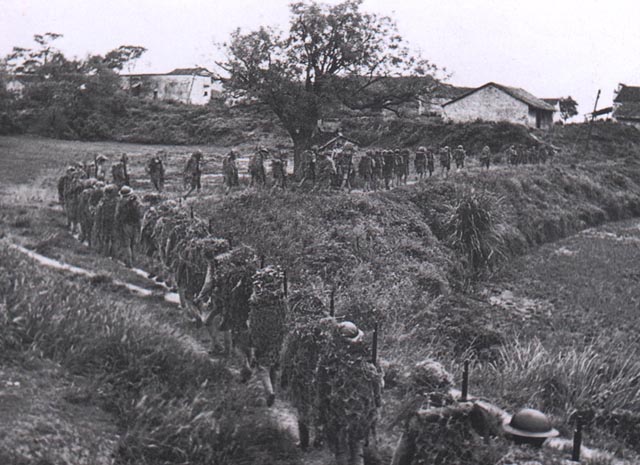
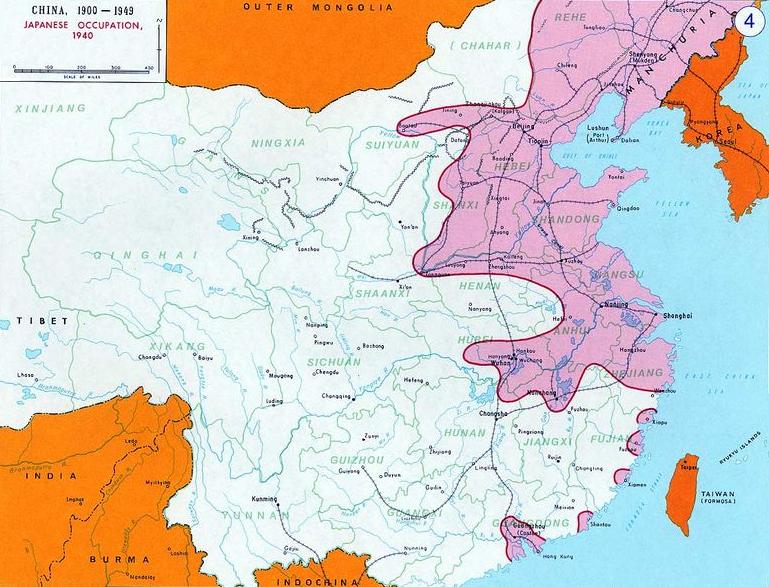
FRANCE LOSES ITS POLITICAL FOCUS |
|
Military-diplomatic miscalculations
Tragically, France really was not able to get its act together at a time that it was supposed to be one of the two major enforcers of the new post-war international status quo (the other enforcer being England). Indeed, towards the end of the 1930s France found itself facing political problems way beyond its control - and had no serious strategies for moving forward against these problems. France was clearly not able to face what was coming its way. Although Europeans had made every effort to demilitarize in the hopes of eliminating an temptation to use the military as a diplomatic tool, the thoughts about military defense were never very far from the French mind. After all France’s population at the beginning of the 1930s was about 41.5 million compared to Germany’s 75 million ... and France’s birthrate was dropping dramatically. France thus lacked the manpower to stand up against an aggressive Germany. Thus in 1927 France began to construct a very sophisticated line of fortifications along the border with Germany – the Maginot Line (completed in 1938) – in the hopes that this would suffice to stop any German attack on France. They also rearmed what manpower they did have ... at the same time pressing the case that Germany must stay armed only at the very restricted level outlined in the Versailles Treaty (which under Gen. von Schleicher’s secret program of German rearmament Germany had been ignoring all along anyway). And they counted heavily on diplomatic support in the form of an anti-German alliance – with Belgium, Poland, Czechoslovakia, Rumania and Yugoslavia ... a rather weak grouping which served merely to strengthen Hitler’s accusation of a conspiracy to surround and isolate Germany (which indeed it was designed to do). After Hitler’s taking over the German government in 1933 France moved to conclude commercial and defense treaties with Stalin’s Soviet Union. But when Hitler moved in 1936 to seize the demilitarized Rhineland – under French supervision at the time – and France did nothing to block him, it became clear to all (Russia as well as Germany) that France really did not seem to have the will to resist Hitler. Appealing instead to the League of Nations made it clear that France did not have the sovereign will to stand against German aggression. |
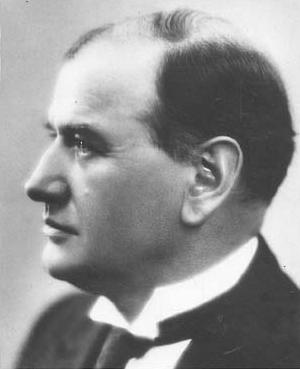
until just before Germany's invasion of France in 1940
BRITAIN'S "APPEASEMENT" OF HITLER'S GERMANY |
|
Stanley Baldwin
Baldwin dominated English politics during much of the inter-war period. Even when MacDonald was Prime Minister in the 1929-1935 period, it was largely Baldwin as leader of the Conservative Party, (in coalition with the Labour Party under MacDonald, 1931-1935), who directed British politics as Lord President of the Council. In 1935 Baldwin took over from the largely senile MacDonald - until his own retirement in 1937. Baldwin's governance was characterized by a policy of peace-at-any-cost. He understood that the English did not want ever to go to war again; that they expected him to keep them from diplomatic entanglements and any military build-up, viewed at that time as largely responsible for the "Great War" of 1914-1918; and that his first priority as England's leader was to get England back on sound economic ground. Thus he cut back tremendously on England's military spending and strength - at a time that Germany was rebuilding its military power (even before Hitler took charge of Germany) - in well recognized violation of the terms of the Versailles Treaty of 1919 and the Locarno Pact of 1925. He and Winston Churchill were constantly at odds over this issue of England's pacifism in the face of German remilitarization. Baldwin viewed the politically side-lined Churchill as a war-monger who wanted to drag England into an arms race and thus another war with Germany. Churchill viewed Baldwin as one who invited German military adventurism by the obvious lack of English resolve to stop Hitler before he became so strong that there would be no way to block his military ambitions. Basically Baldwin was working out of the spirit of the moment, of the times he lived in. Churchill was working out of a longer sense of British history - and its long-standing role as balancer of power on the European continent (as for instance in the days of Napoleon in the early 1800s). History would soon be the judge of who had it right. |
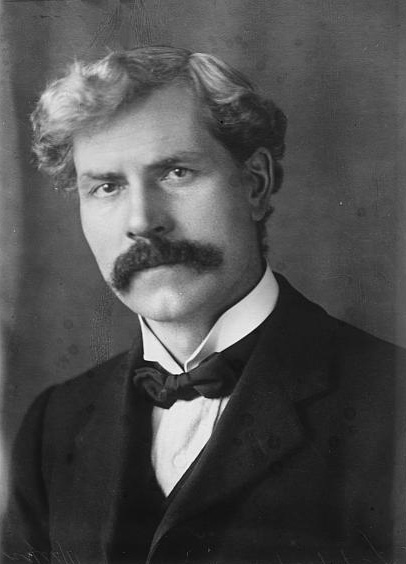
British Prime Minister - 1924; 1929-35
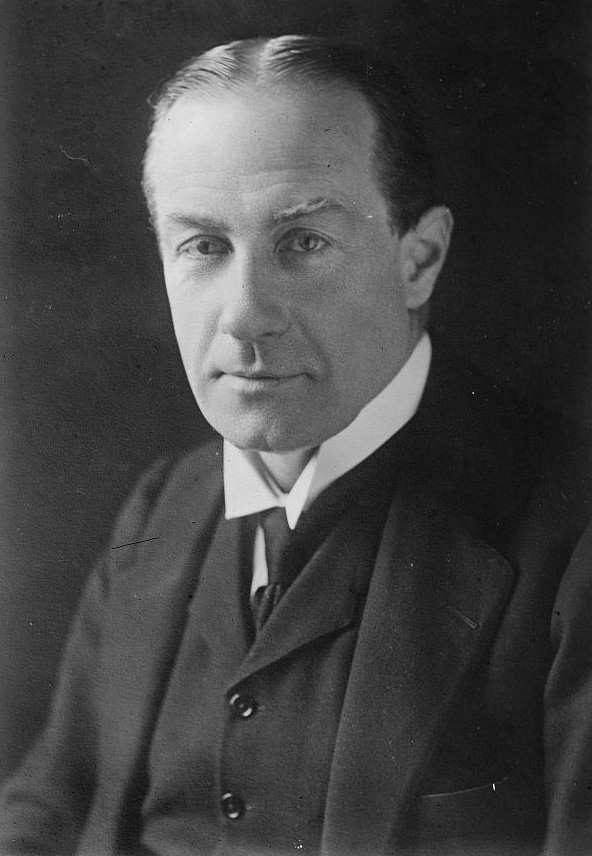
British Prime Minister - 1923-24; 1924-29; 1935-37
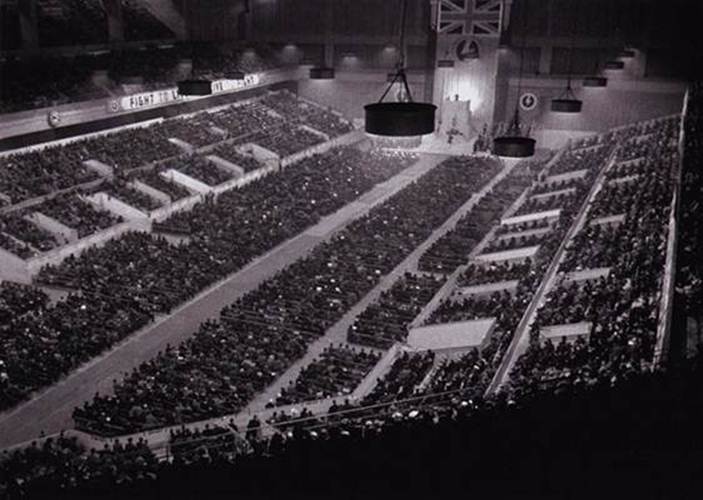
The British Union of Fascists and National Socialists Rally - London, 1936. One of the largest public meetings held in Britain in the 1930s ... and indicative of the mixed sentiment of the British about which way to turn in the face of continental developments
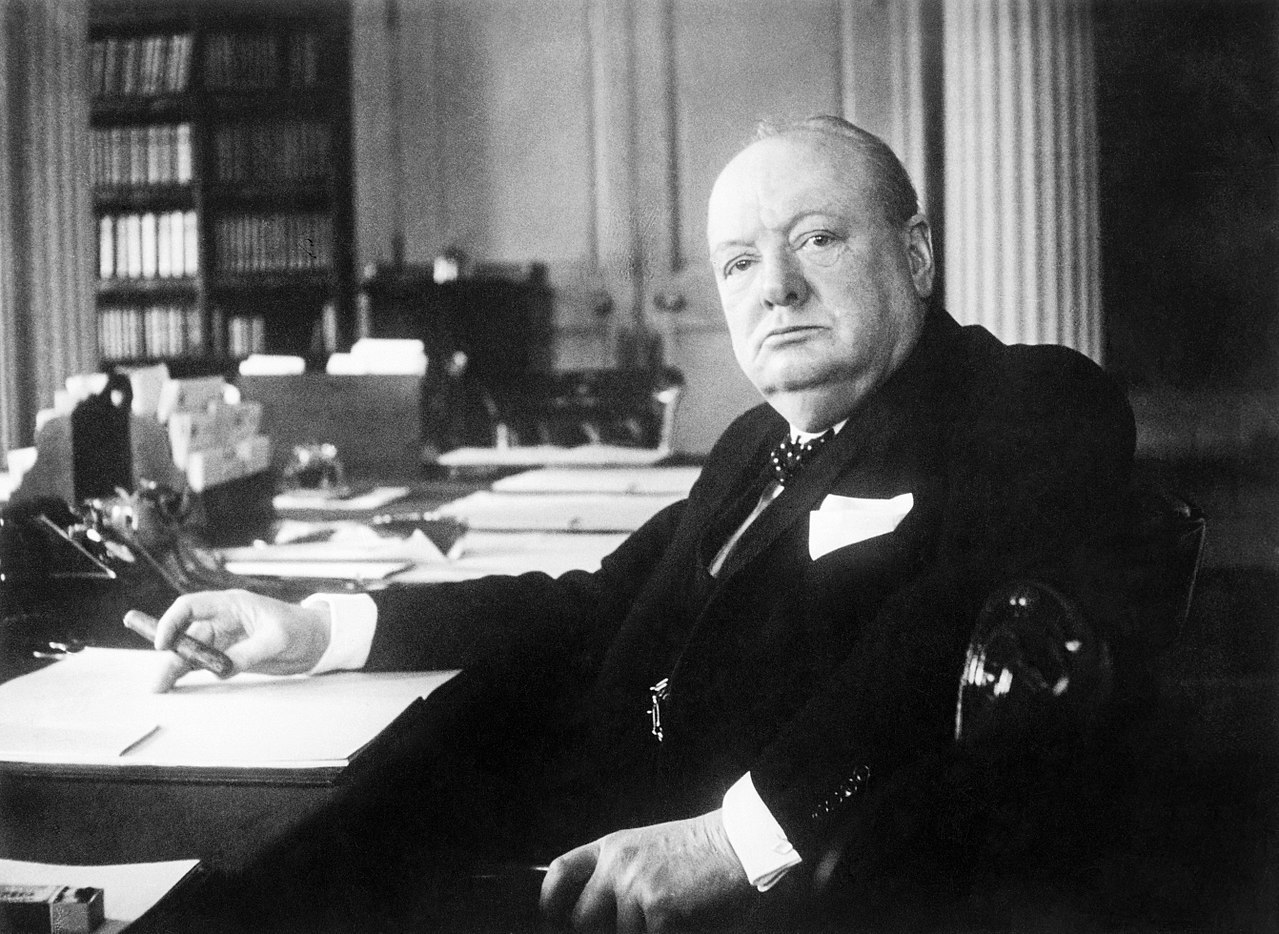
|
Neville Chamberlain
Chamberlain became leader of the Conservative or Tory Party and also English Prime Minister in May of 1937 after Stanley Baldwin stepped down. Whereas Baldwin was a pacifist, Chamberlain was actually rather pro-German (as had been much of the royal family). As the 1930s developed, it appeared that Europe was facing a choice of which of the two growing military powers to the East, Communist Russia or Nazi Germany, was the greater threat to European peace. Chamberlain took the view that it was the Russian Communists that posed the greater danger, and a policy of "appeasing" Germany's Hitler (and Italy's Mussolini) would bring the nations of West and Central Europe into a broad anti-Communist / anti-Russian front. But the logic of his appeasement policy soon developed a life of its own - especially as Churchill continued to challenge Chamberlain concerning the grave Nazi danger (Churchill, although once an avid anti-Communist, now taking the view that with Hitler's rise to power in Germany, the Nazi's were quickly becoming the greater threat to England's security). Promises that each of Chamberlain's many concessions to Germany would be the last were constantly broken - with each retreat by Chamberlain rationalized as necessary steps in pacifying Hitler. Actually, as with all people of a bullying nature, each retreat only made Hitler more greedy for German expansion. Sadly, Chamberlain (like Baldwin) talked himself into believing that what he was doing was protecting (rather than undermining) the peace of Europe. |
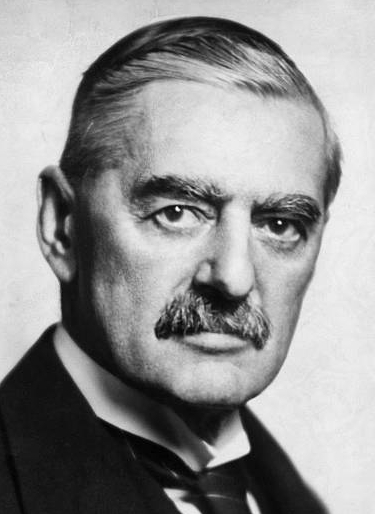
Prime Minister 1937-1940
British Foreign Minister - 1938-1940
also an "appeaser" toward Germany
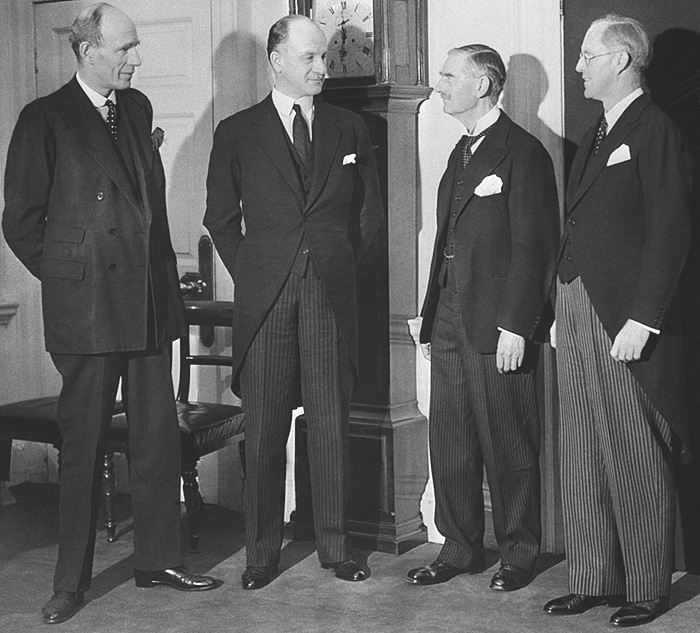
Lord Halifax, Roosevelt’s
personal foreign policy advisor Sumner Welles, Neville Chamberlain and
US Ambassador Joseph Kennedy – London, 1940
THE GERMAN ANSCHLUSS WITH AUSTRIA |
| But
a bigger problem developed for Austria as Hitler became more intent on
making Austria a satellite nation to Germany. In January of 1938
Hitler removed members of the German military who were opposed to a
military takeover of Austria - and made himself supreme military
commander of Germany. He also made changes in his cabinet to
bring it under greater compliance with his ambitions. Notably he
replaced his foreign minister Constantin von Neurath with a more
compliant Joachim von Ribbentrop. Now he was ready to act. The next month, February, Hitler invited Austrian Chancellor von Schuschnigg to Berchtesgaden where he threatened disaster if the Chancellor did not place Nazis in his cabinet. In particular, Hitler forced Schuschnigg to accept Arthur Seyss-Inqart as Minister of the Interior (in charge of the national police). This greatly crippled Schuschnigg's ability to control Nazi street agitators - who now increased their activity. Hitler then moved to come up with an excuse for taking over Austria. He demanded the freeing of all Nazis that had been previously arrested by the Austrian authorities. And he began to demand that Schuschnigg offer better protection over Germans living in Austria - or he would himself take over that responsibility. Meanwhile the international community was attempting to get some kind of lineup on this growing issue. Hitler let it be known to the English that if they wanted continuing good relations with Germany they were going to have to back down on their opposition to the idea of the long-sought Anschluss of Austria under the "New Order." Prime Minister Chamberlain seemed unable to take a firm stand against Hitler - which finally brought the resignation of Anthony Eden, Britain's Foreign Minister, who was adamantly opposed to any further English "appeasement" of Hitler. At first Schuschnigg seemed ready to back down before Hitler's pressures to literally turn Austria over to the Nazi party - but then announced a decision of a national plebiscite to let the Austrians themselves decide on this matter. But Hitler would not be outplayed. Two days before the scheduled plebiscite he gave the Austrians an ultimatum demanding, among other things, the resignation of Schuschnigg. This Schuschnigg did, stating as a cause his inability to rule in the face of such Nazi opposition both from Germany and from within the country. At this point (March 12, 1938) Arthur Seyss-Inqart took over as chancellor, "inviting" Germany into Austria to take over and "restore order" (which his own Nazis were largely responsible for.) In fact, the Germans were already over the border into Austria even as the "invitation" was extended. And thus Hitler marched his troops into Austria, had Schuschnigg arrested and seized control of the Austrian government. Hitler immediately headed for Austria, his homeland, where to his great delight crowds of Austrians came out to cheer him (many, of course stayed home). He was so delighted by the reception that he decided that instead of making Austria a satellite nation, he would simply incorporate it into Germany itself. The German Anschluss with Austria then was completed on April 10th when, in a tightly controlled national plebiscite, 99.7% of the Austrian voters approved Germany's annexation of their country. Meanwhile, the international reaction was tepid. England was upset, but did nothing. Chamberlain, sensing the danger the Anschluss posed to Czechoslovakia (the borders of the Western half of the country surrounded by the enlarged Germany), promised to support Czechoslovakia against further German expansion (offering Chamberlain that same fall yet another opportunity to back down in the face of Hitler's ambitions). |
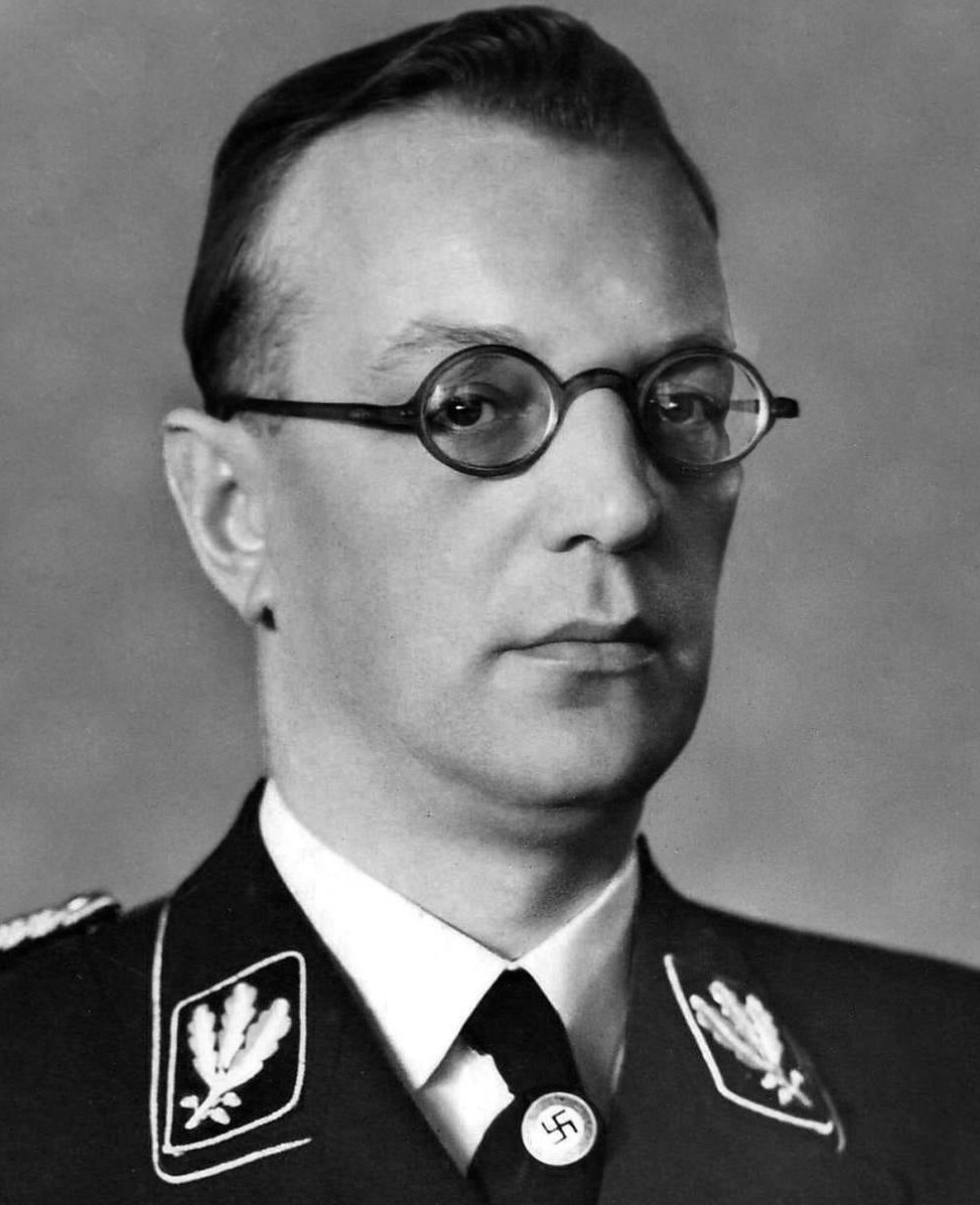
Arthur Seyss-Inquart - Chancellor
of Austria who immediately invited the Nazis to take over his country (they were already entering Austria at that point)
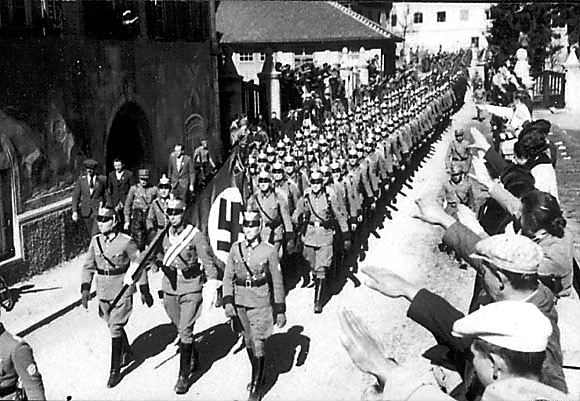
National Archives
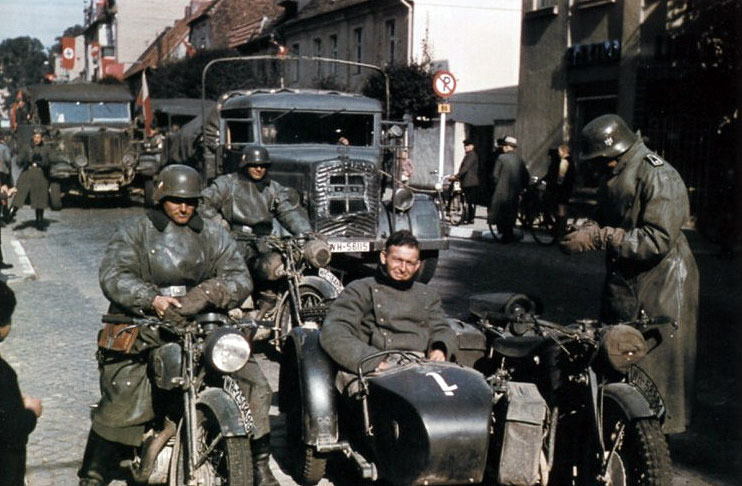
Photo by Heinrich Hoffmann, 1938
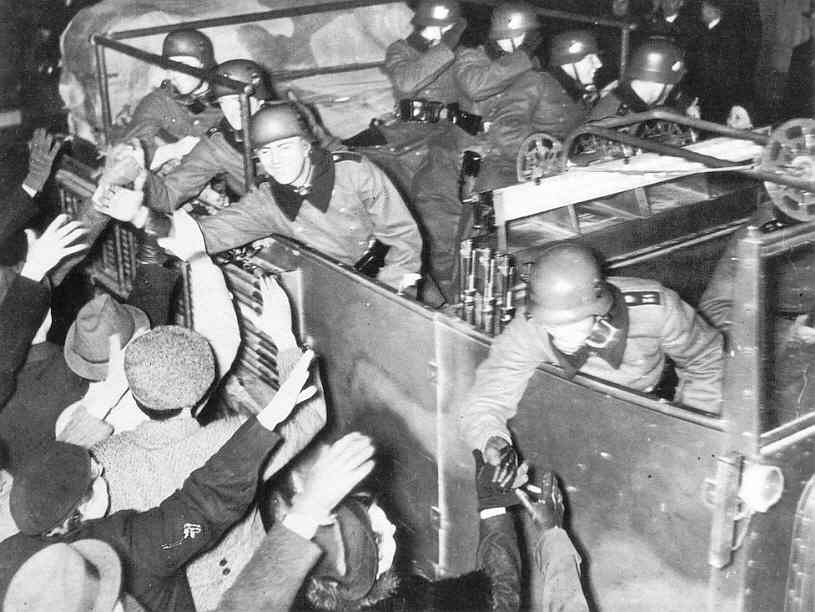
UPI/Corbis-Bettmann
National Archives
208-N-39843.
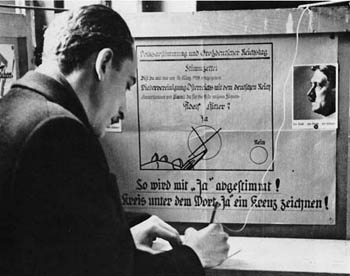
Dokumentationsarchiv des Oesterreichischen Widerstands
HITLER IS AWARDED CZECHOSLOVAKIA'S SUDETENLAND |
|
Hitler's moves on the Czech Sudetenland
Having seized Austria, Hitler now turned his attentions to Czechoslovakia, in particular to the Sudetenland, the mountainous borderlands of Czechoslovakia where a large German-speaking population lived, but also where all of Czechoslovakia’s well-entrenched national defenses (aimed at Germany) were located. Hitler engineered a mounting protest by Germans living in the Sudetenland (a so-called "Fifth Column" of support), fabricating complaints about their terrible treatment as a German minority by the Czech government (a complete lie). On his part, Chamberlain was concerned that Hitler was simply creating the pretext for a takeover of the region. In that he was quite correct. The Munich Agreement
Sensing a looming catastrophe, British Prime Minister Chamberlain flew to Munich in September of 1938 to meet with Hitler and other European leaders – to try to work out a "peaceful" settlement to the growing "crisis" (which was completely a fabrication of Hitler's). Ultimately Chamberlain signed an agreement in which Hitler promised that he had no more territorial ambitions towards Czechoslovakia beyond the Sudetenland (a complete lie), and in which Chamberlain promised that he would lean on the Czech president Beneš to peacefully deliver the Sudetenland to Germany. On Chamberlain's return to London, he was wildly celebrated for having "saved" the world from war … or as he put it, having secured "peace in our time." The Norwegian Nobel Committee was even so swept up in this strange mood that Chamberlain was then nominated to be the coming recipient of the Nobel Peace Prize. The sad irony in all of this was that by agreeing to Hitler’s demands for the German absorption into Hitler’s Reich of the Czech Sudetenland, Chamberlain inadvertently undermined a plan for a coup against Hitler by a number of German generals who were positive that Hitler was going to lead Germany into a suicidal war. Tragically, the cost-free granting to Germany of Sudetenland by Chamberlain made Hitler all the more a hero to the average German. Had the generals moved as planned against Hitler at this point in his apparent "success" it would have made their actions appear totally treasonous in the eyes of the German nation. So their plot was put aside. Thus Chamberlain foolishly not only undercut what would have probably been a stiff and embarrassing Czech resistance to Hitler’s ambitions (the Czechs were ready to resist Hitler with some forty well-armed divisions – which Chamberlain forced the Czech to promise not to use – so as to avoid "war") but he also undercut what would have been an heroic move by true German patriots to remove this madman from power. How ironic Chamberlain’s desire for peace – peace at all costs – would end up having just the opposite effect on Europe ... ironic, but unfortunately all too common a development in human history. |
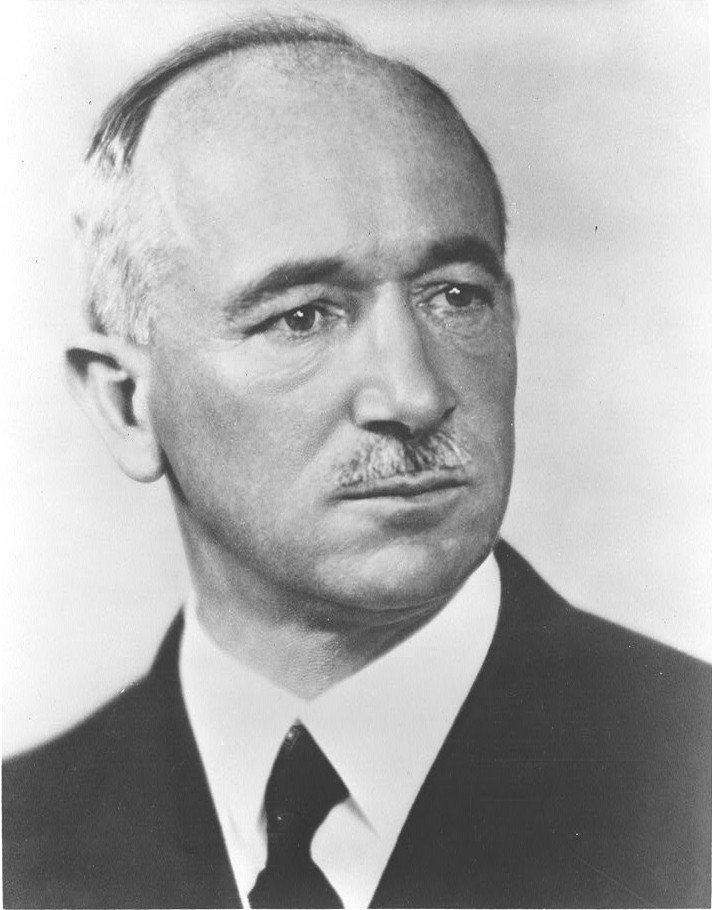
Czech President Edvard Beneš is not even invited to the Munich meeting set up between Chamberlain and Hitler
to determine the future of his country (with even Mussolini and French Prime Minister Daladier attending!)
|
Beneš was
elected President in 1935
- but resigned in October of 1938 in the midst of the Czechoslovak crisis
(in which he was never really consulted by Chamberlain, who simply sold
away Czechoslovakia's defenses without first getting a political assessment
from Beneš). When full war broke out in 1939 Beneš went into exile
in London. He organized the Czech government-in-exile in London in
1940. In 1941 he organized the successful assassination plot against
Reinhard Heydrich, the sadistic mastermind of the extermination of Europe's
Jews. At war's end in 1945 he returned to Czechoslovakia as the nation's President - but resigned again in June of 1948 in protest against the Communist maneuverings to take over the country. He died three months later. |
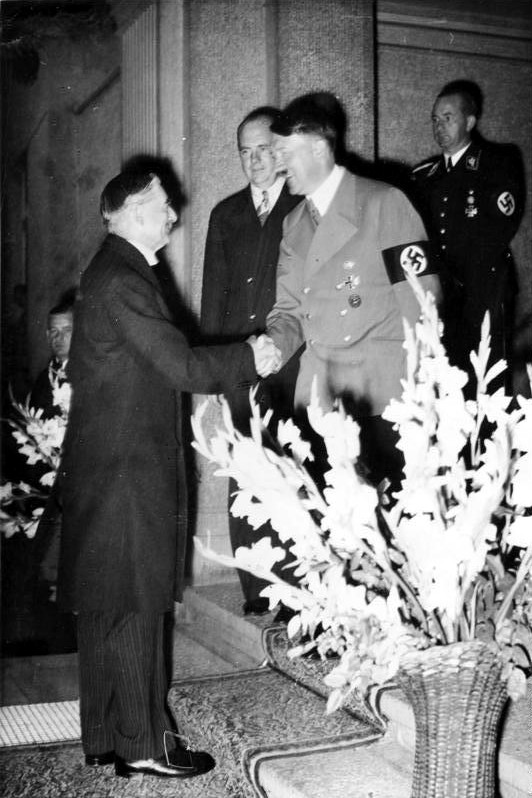
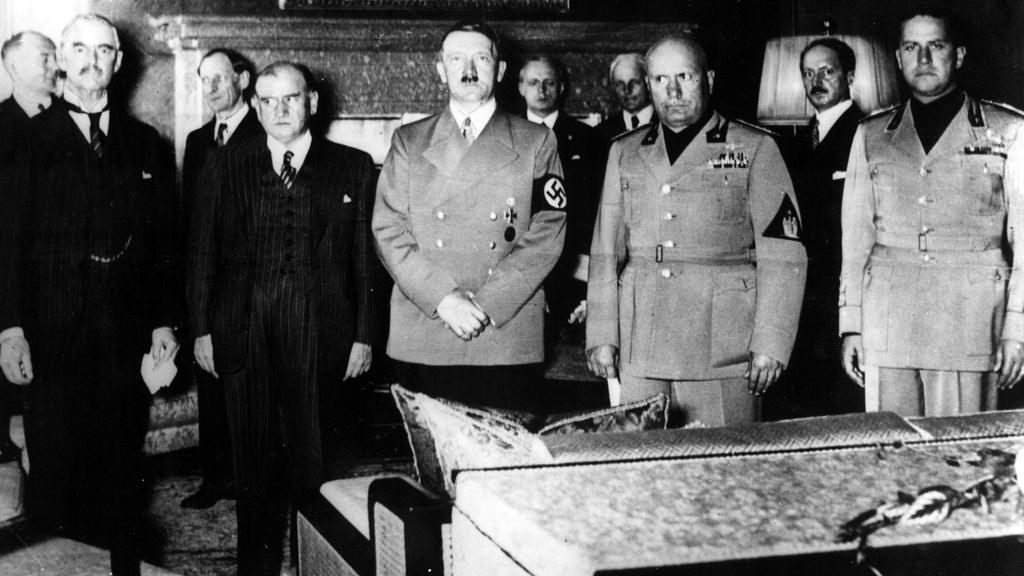
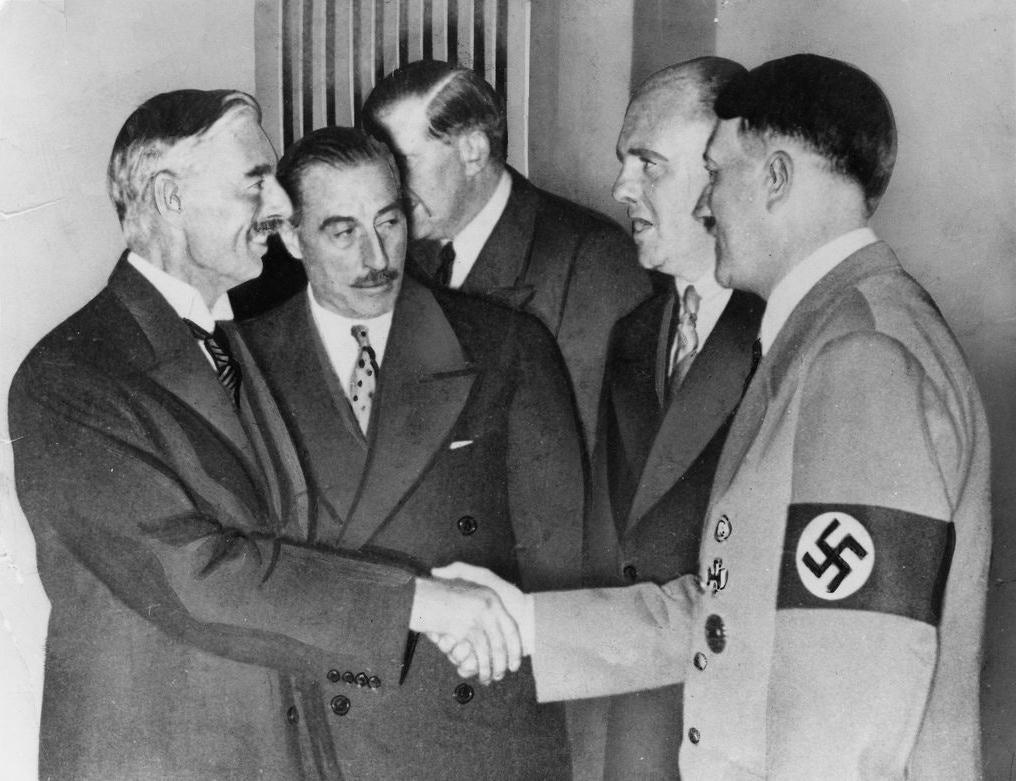
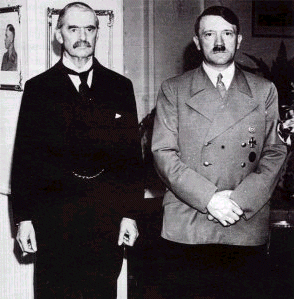
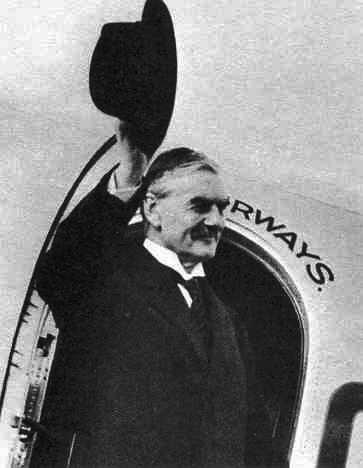
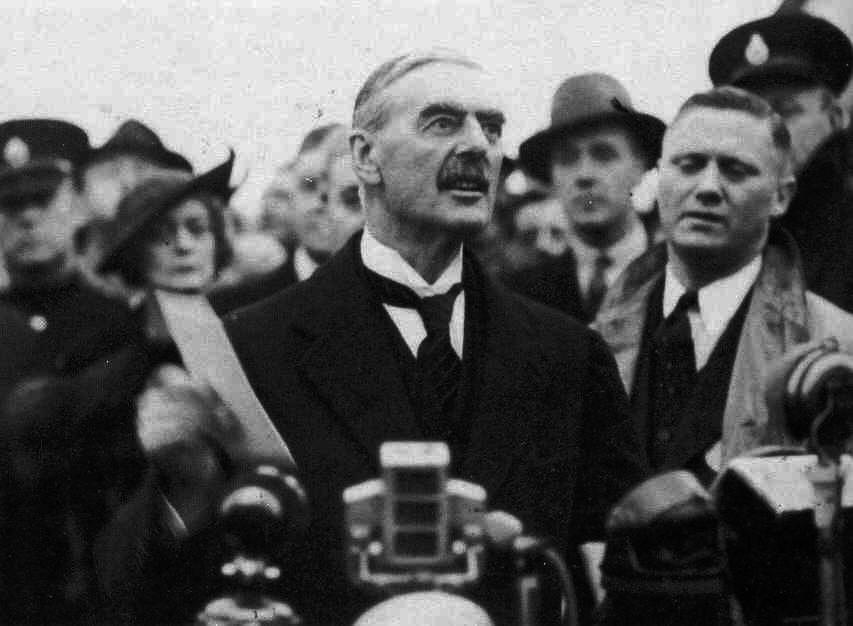
Text and signatures of the
Anglo-German Peace Declaration signed by Hitler and Chamberlain (but Hitler had already
signed an agreement with Mussolini to undertake war with England).
Chamberlain in England waiving
the Anglo-German Peace Declaration secured that morning, September 30, 1938 - announcing
that the agreement secured "peace in our time."
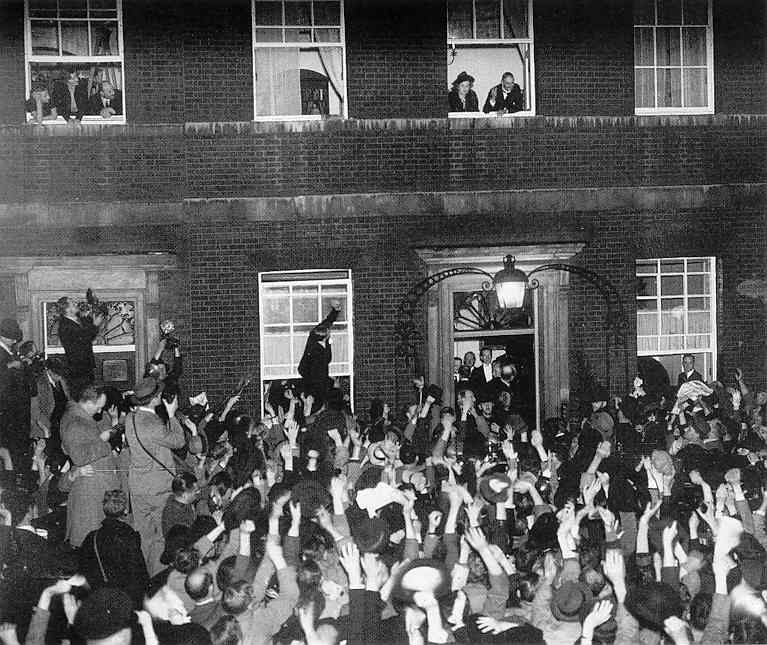
Prime Minister Neville Chamberlain
- the architect of German "Appeasement." He was proposed to receive the
Nobel Peace Prize for his work (but events would soon prove
his work to have been hollow)
October 1st, 1938 - Sudeten
Germans lining the road as German staff cars arrive (the banner reads:
one people, one empire, one leader)
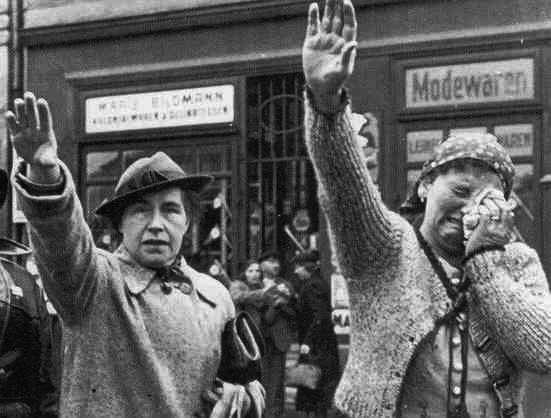
HITLER'S ATTACK ON THE JEWS INTENSIFIES ("KRISTALLNACHT") |
|
Kristallnacht (the night of broken glass)
On November 7, 1938 Herschel Grynszpan, a young Polish Jew in Paris, shot and killed the German 3rd secretary in the embassy there, providing the Nazi government the excuse to retaliate 2 days later against Jews everywhere in a night of well-organized Nazi terror known as Kristallnacht - for all the glass windows of Jewish stores destroyed. Synagogues were systematically burned, 7,500 shops were wrecked, perhaps as many as a hundred Jews were killed, thirty thousand were arrested and headed off to imprisonment in such places as the Buchenwald and Sachsenhausen Concentration Camps. On top of this, fines totaling a billion marks were levied on the Jews ... as if the Jews themselves had been responsible for all the damage. To add to the cruelty, all the insurance money paid the Jews for the damage of Kristallnacht (five million marks) was confiscated by the government. Hitler’s Germany was definitely taking the shape he had long dreamed it should be. |
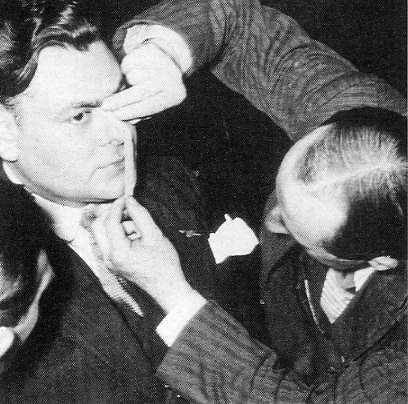
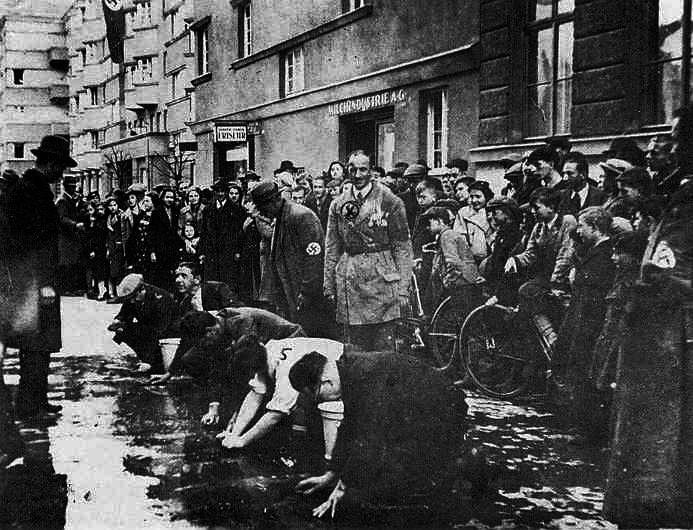
Jewish persecution begins
in Austria as Jews are made to scrub pro-Austrian slogans from streets
- March 1938
Two Germans accused of having violated the law against sexual relations between Jews and Gentiles - Hamburg. The woman's sign: "At this place I am the greatest swine for I laid with a Jew." The man's: As a Jewish youth I always take only German girls to my room"
(The night of broken glass)
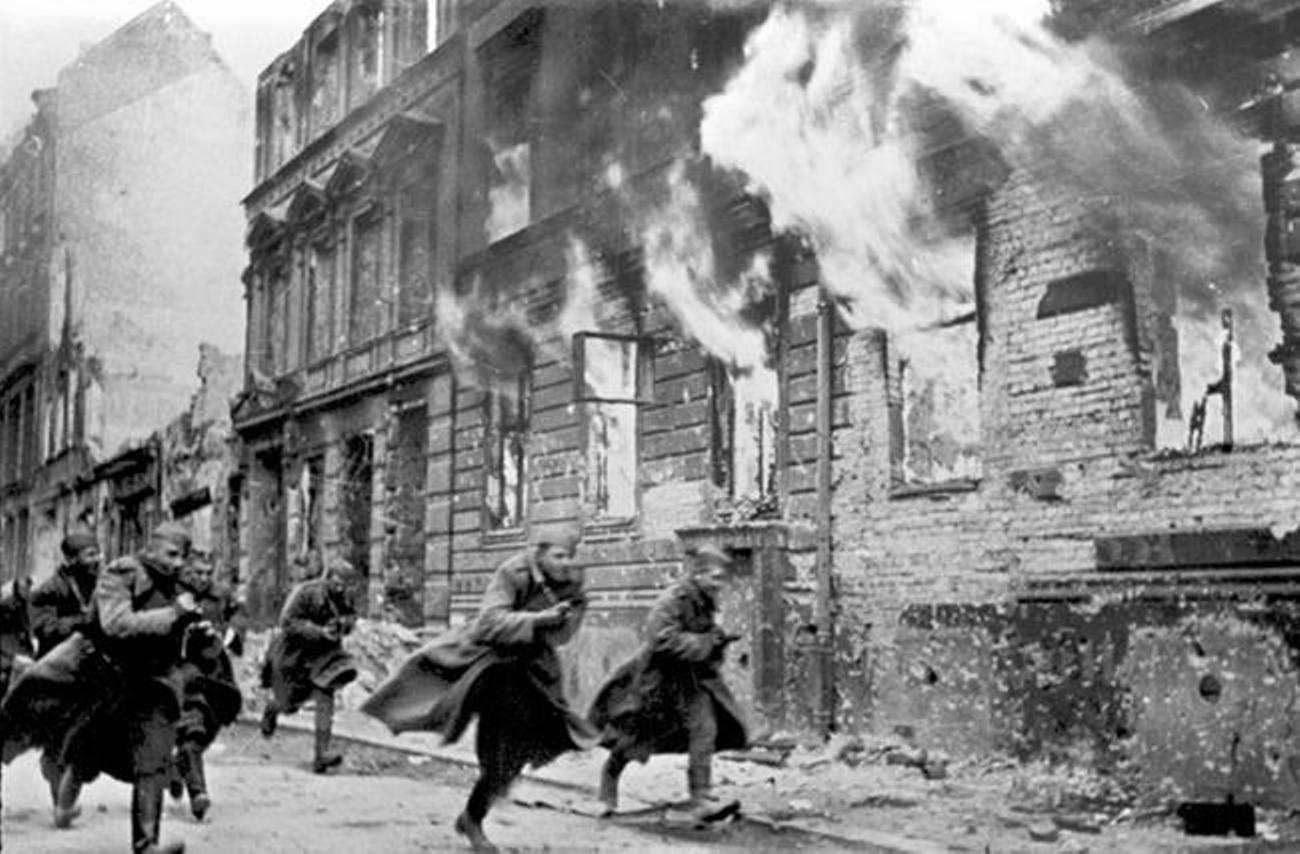
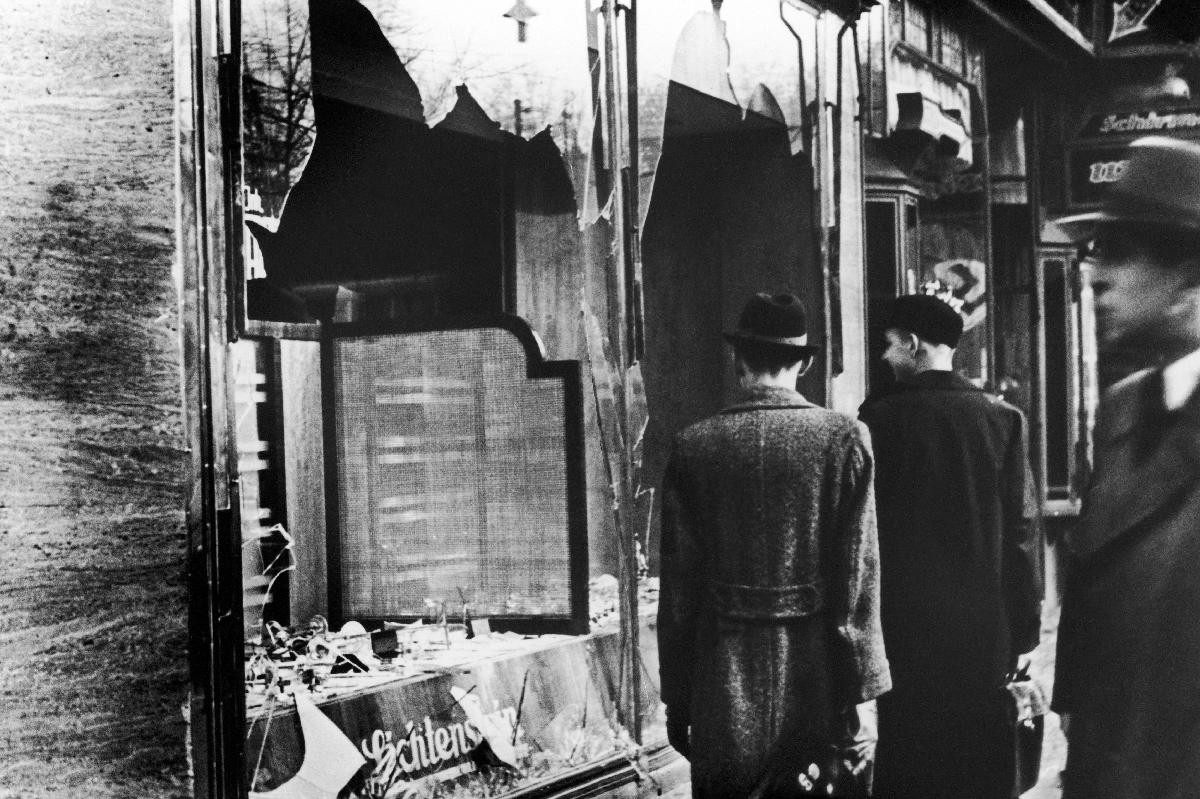
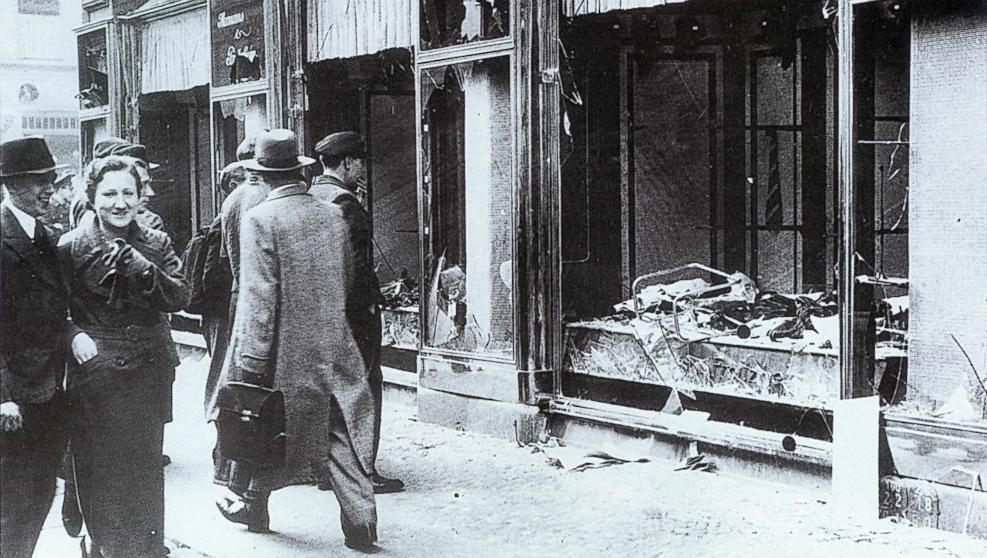
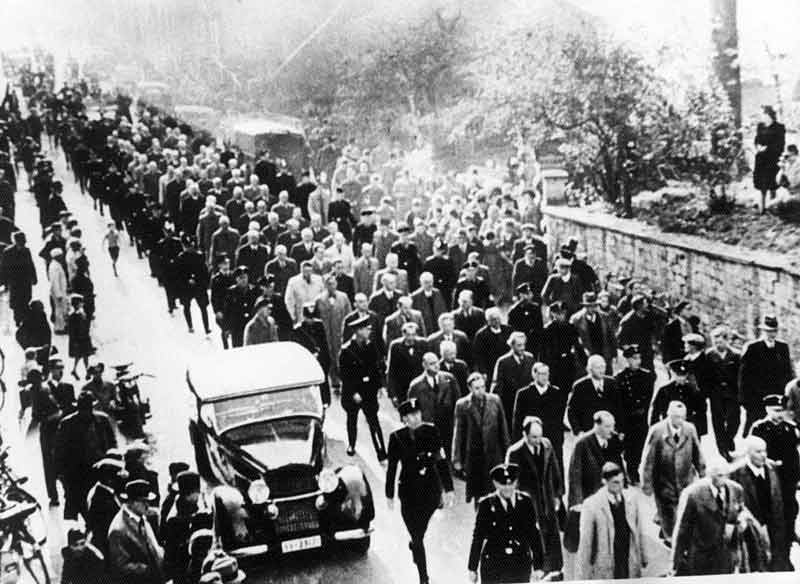
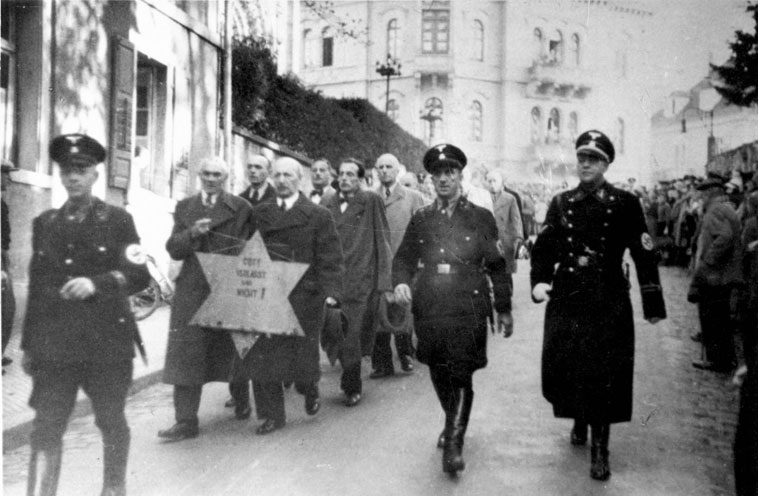
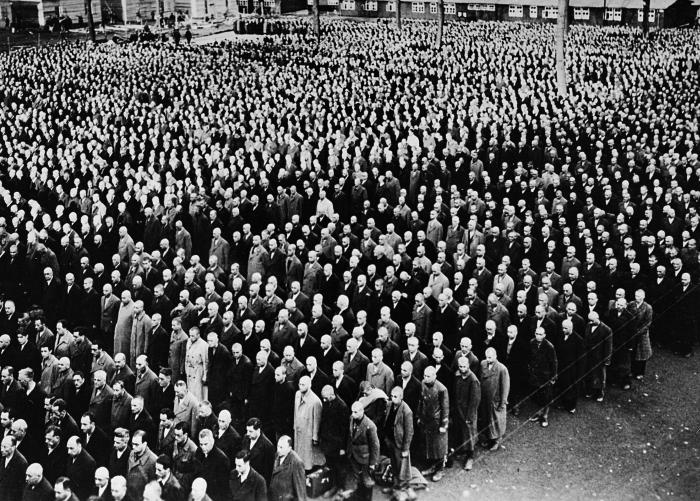
National Archives 242-HLB-3609-25
HITLER GRABS THE REST OF CZECHOSLOVAKIA |
|
March 1939 - Hitler grabs all of the Czech lands
Meanwhile, with all of this appeasement diplomacy of Chamberlain's, Hitler had no serious intentions of limiting to the Sudetenland his grab of Czechoslovak lands. He intrigued with Slovak politicians – who deeply resented the fact that the Czechs, their fellow Czechoslovakians, tended to look down upon their Slovakian brothers as rather backwards in cultural development. Hitler encouraged the Slovaks to call for the ethnic separation of Slovakia from the Czech portion of the country. Thus claiming merely to be putting into practice the old Wilsonian principle of "the rights of national self-determination," on March 14th German, Hungarian and Polish troops invaded the disintegrating country. On the 15th the Germans marched unopposed into Prague, and then declared the whole region of Czechoslovakia as a "protectorate" within the German Reich. A shocked England and France look on in dismay. Finally awakening to Hitler's real intentions of continuing expansion of Germany through its conquest of neighboring territories, on the 31st Chamberlain announced to Parliament a guarantee of full aid to Poland if Hitler should also attack that country. This was in essence a promise of war. But by this point such a threat seemed hardly credible in the eyes of Hitler. The British had always backed down when pushed. And there really was no effective way for the British to bring aid to Poland if attacked by Germany anyway, since Germany stood right in the middle of any line of English military supply to Poland. Poland was isolated. Thus Chamberlain's threat seemed to Hitler to be simply an empty boast of a feeble British Prime Minister attempting to look stronger than he really was. As distasteful as the idea was to him, Churchill in April of 1939 advised Parliament that the only hope Europe had at that point was the formation of some kind of alliance with Soviet Russia. To some extent this was in response to feelers put out by the Soviets - probably inspired by the Soviet Foreign Minister Litvinov who still held out hope for a working relationship with the English (and French). But Chamberlain was appalled at the idea - and did his best to head it off, even though it was beginning to make sense to more and more English, including Chamberlain's military advisors. |
A weary Emil Hácha,
recently elevated to Czech presidency, is brought to Germany to be browbeaten by Hitler
into the surrender of his country to Nazi control
National Archives
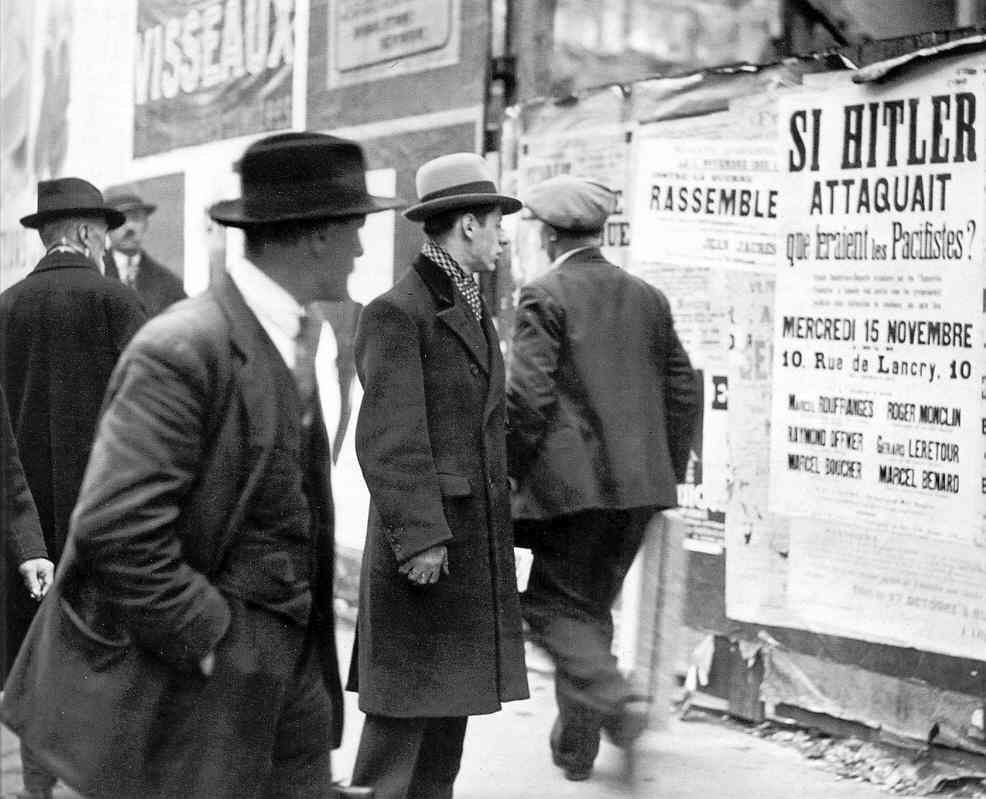
French grow increasingly concerned about Hitler
AS
THE SITUATION DARKENS IN EUROPE, AMERICA RETREATS INTO A DEEP SPIRIT OF ISOLATIONISM |
The New York World's Fair
- 1939. Projects a fantasy view
of "the future" – as Europe becomes engulfed
in another destructive war
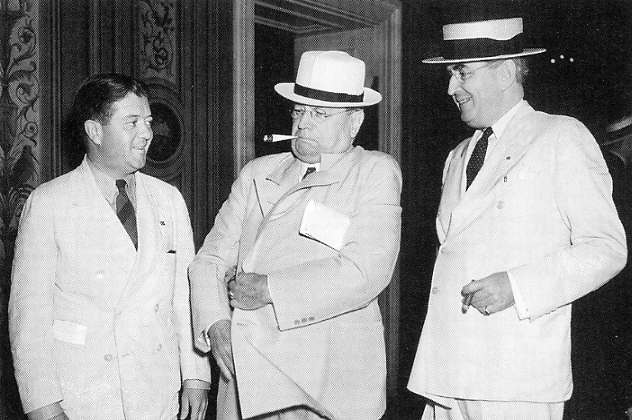
Leading isolationist voices
in the U.S. Senate - 1939: Robert La Follette, Jr.
(Wisconsin), Hiram Johnson (California) and Arthur Vandenberg
(Michigan)
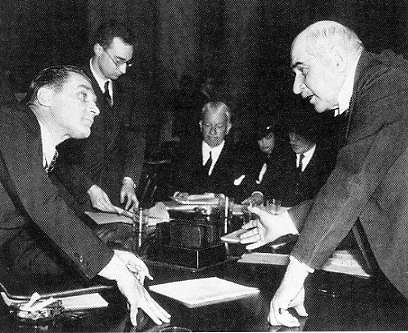
Isolationist Senator Gerald
Nye listening to J.P. Morgan defending American business – accused by Nye and others
of having pushed America into World War One solely for war profits.
THE DICTATORIAL FRONT AGAINST DEMOCRACY IS FORTIFIED (1939) |
|
The German-Italian "Pact of Steel"
A Pact of Steel (or more formally: "Pact of Friendship and Alliance between Germany and Italy") was signed between the two countries on May 22, 1939 - with provisions for mutual support in any future conflict or war (Article III).
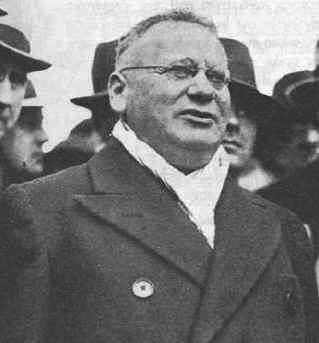
Maxim Litvinov - Soviet Foreign
Minister - 1930-1939. Litvinov worked hard to build a working relationship with the Western powers of
France and Britain. But both countries remained fairly cool to the idea. 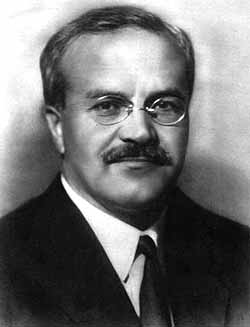
Vyacheslav Molotov - Soviet
Foreign Minister who replaced Litvinov - May 1939. His policy was to put the devil Hitler in a Soviet embrace ... and redirect Hitler's ambitions towards the West, away from the Soviet Russian East The signing of the Molotov-Ribbentrop Treaty (August 23, 1939)
... a "friendship treaty" between Germany and Soviet Russia (with secret provisions Count Joachim von Ribbentrop
(on the right) arriving in Moscow to secure the Nazi-Soviet
Pact - August 1939 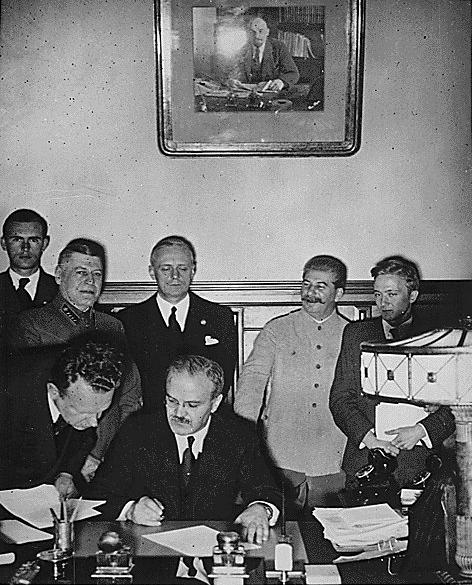
National Archives 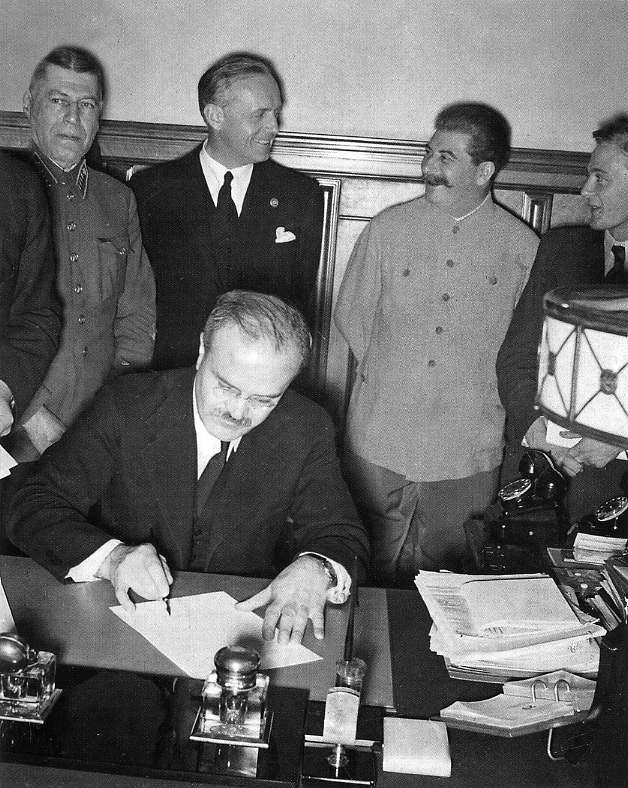
Soviet Foreign Minister V.M.
Molotov signs the German-Russian non-aggression pact -
August 23, 1939 -
with German diplomat Joachim
von Ribbentrop
and Soviet General Secretary Joseph Stalin looking on.  Go on to the next section: The Onset of the War
 |
